|
A "block" has been defined as "a
large building divided into separate
functional units". In Willimantic,
having your own block was a sort of a
business success story. From the late
1800s until the early 1950s there were
about 30 "blocks" in Willimantic. It is
hard to keep track of the names because
when a building was sold, the name often
changed. For example, the Tilden Block
became the Jordan Block. Before the
catastrophic fire, the Jordan Block
still had the "Tilden" name on the roof
lettering. One of the Gelinas Blocks
became the Mazzola block....and so on.
And around 1900, the street numbering
changed drastically. And even with new
street numbering in place, the "block"
designation sometimes listed different
street numbers - for example, the Arnold
Block was listed at one time as 820-824
Main and later listed as 820-828 Main. |
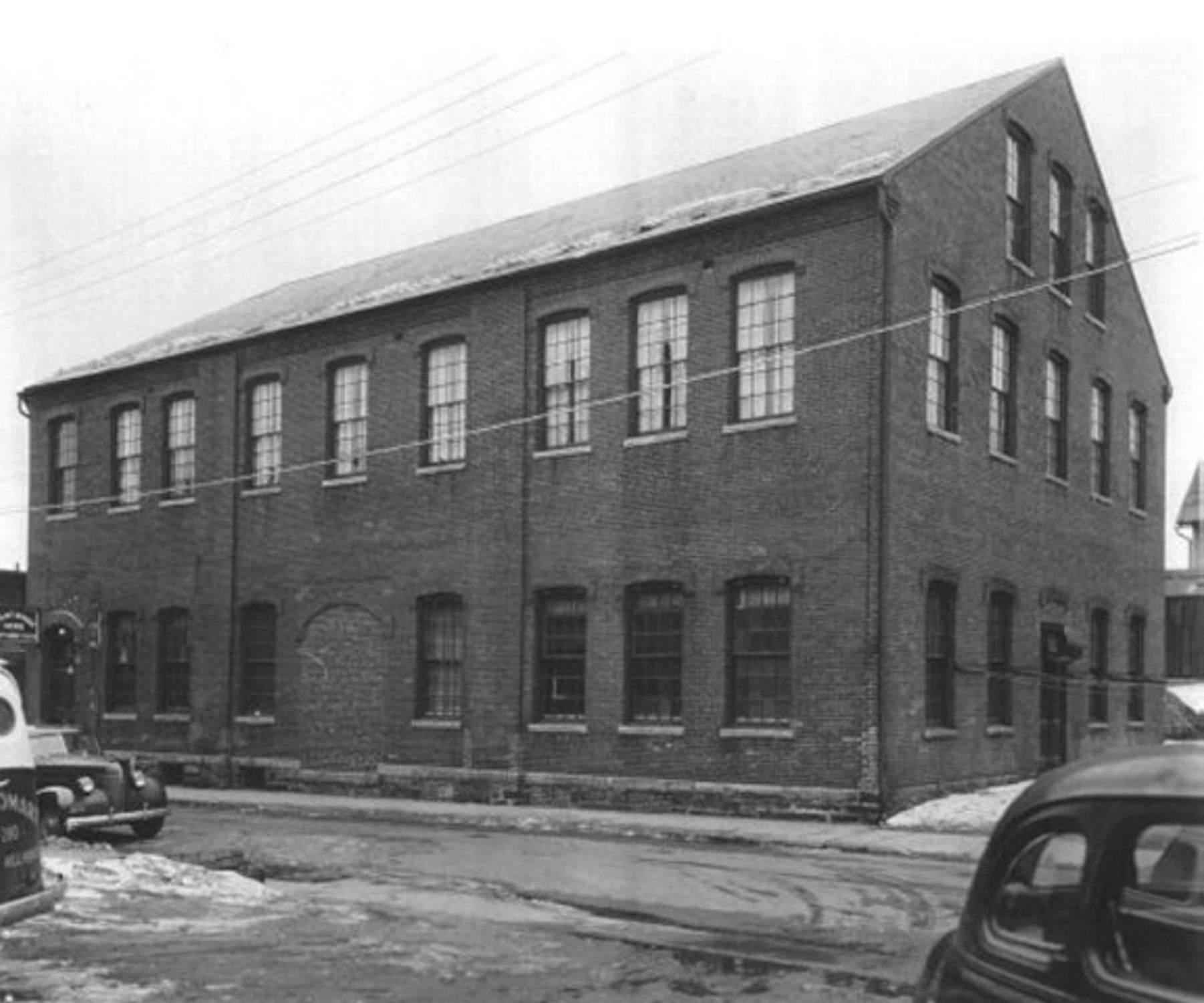
Adams Block 36-40 Center
Street
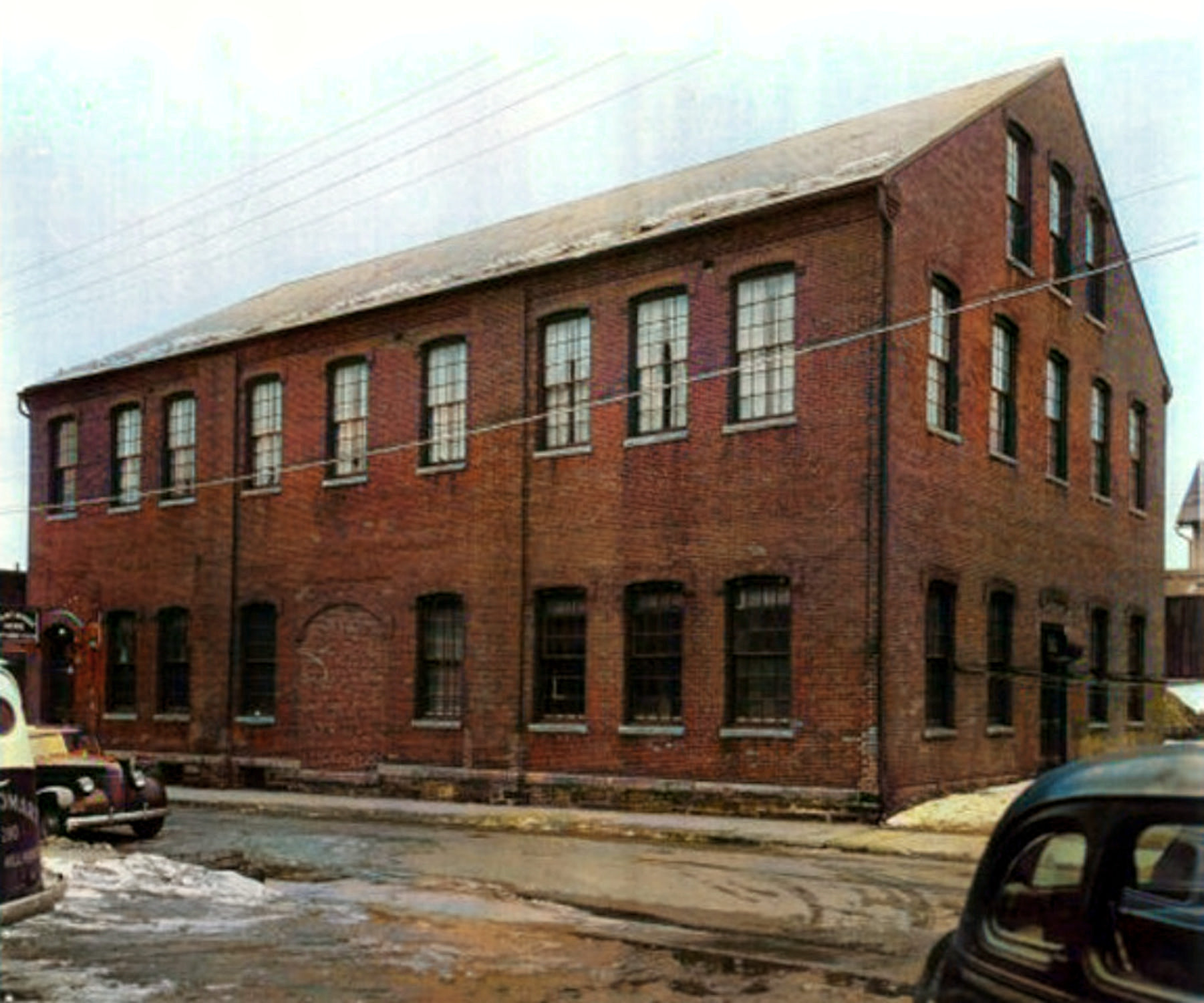
Although called "The French
Club" in later years, until the 1940s
this was called "The Adams Block".
Over the years, it was home to the
Center Street Armory, a small mill, a
roller rink,
the
Sons of Israel Congregation, several
small stores and finally, the
Franco-American Civic and Social Club. |
Armory Block 255 Pleasant
Armory Block |
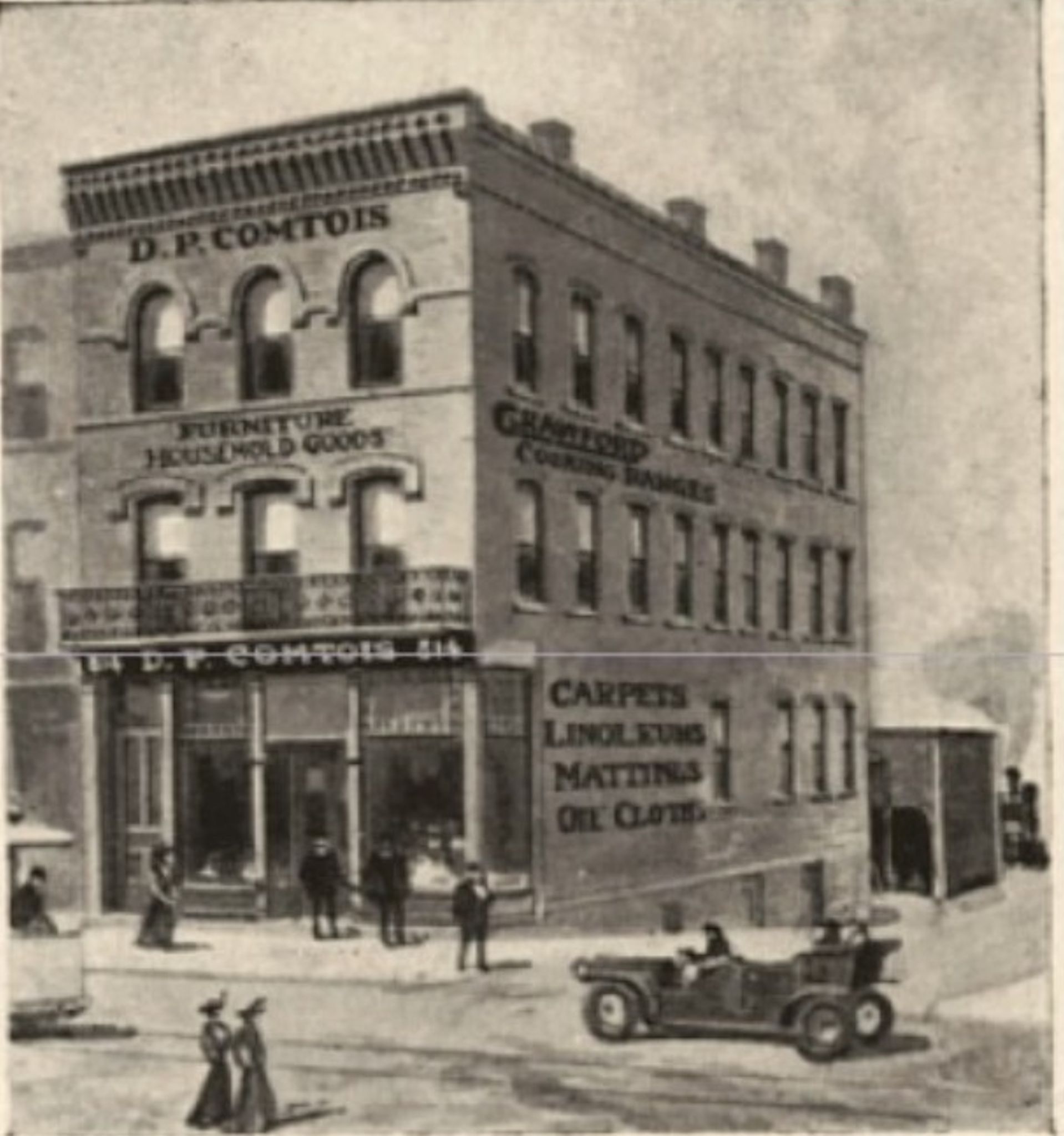
Arnold Block 820-828 Main Street
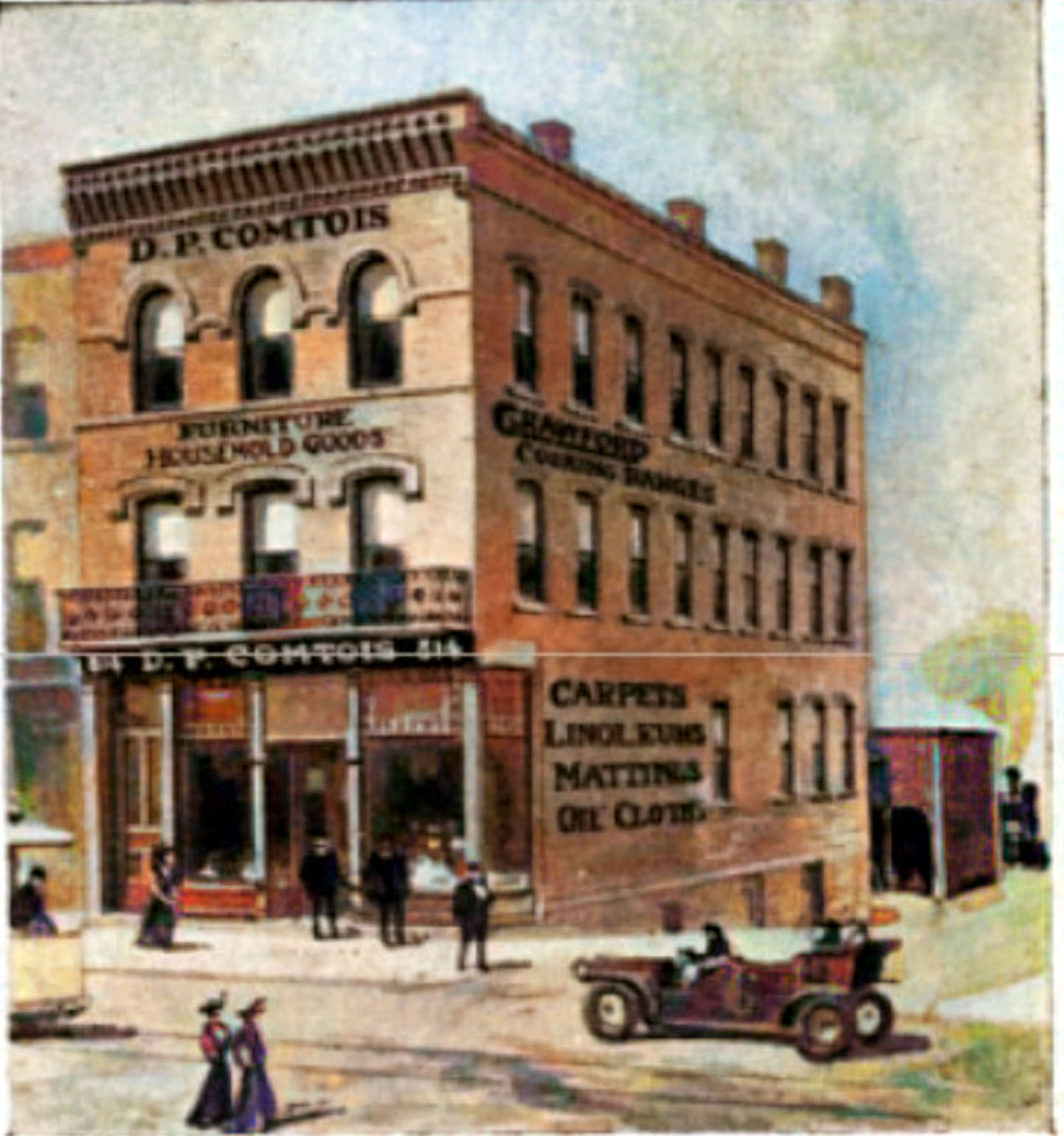
This was also known in the
1920s as "The
Gelinas-Belanger Block". |
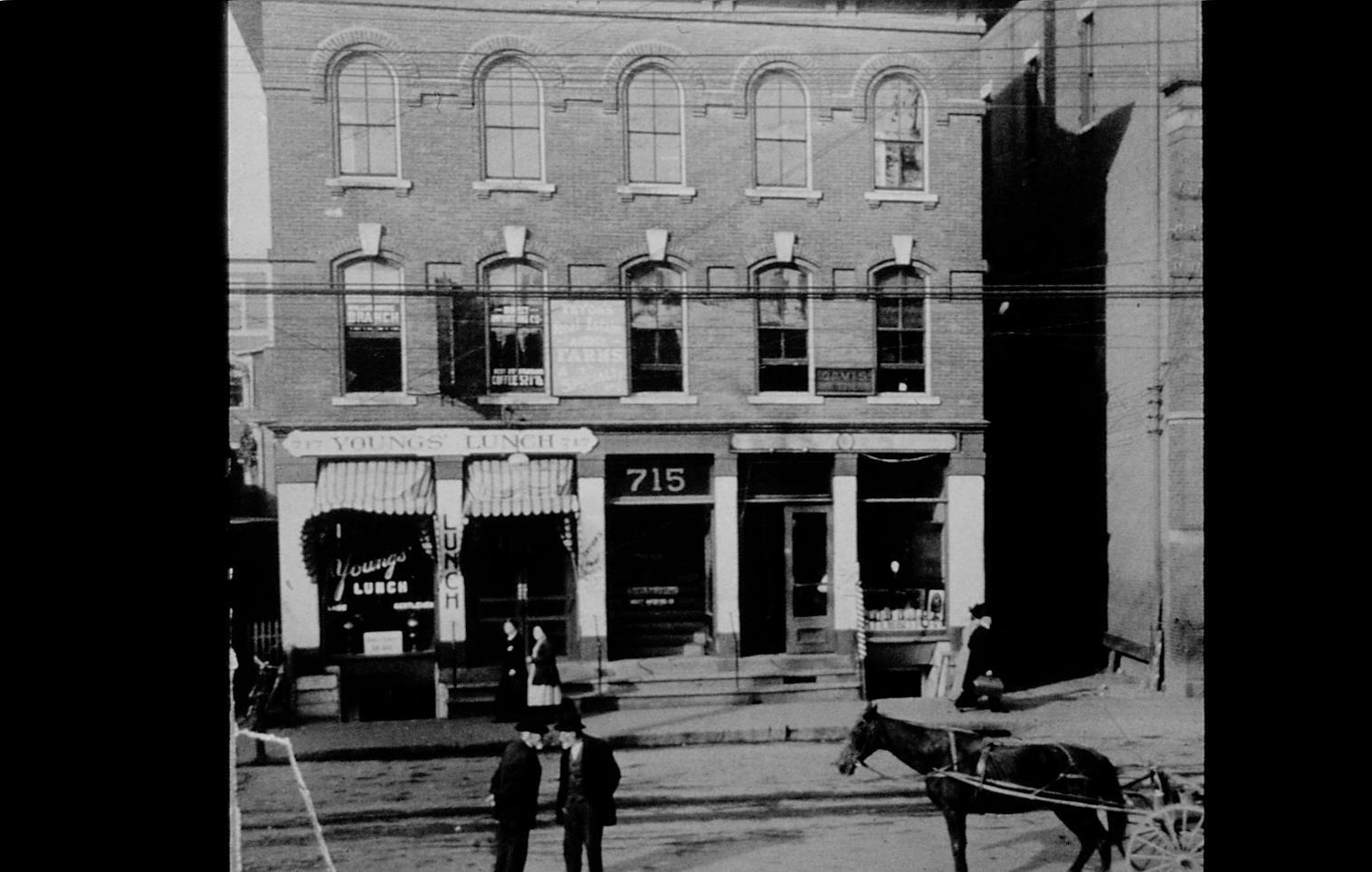
Atwood Block
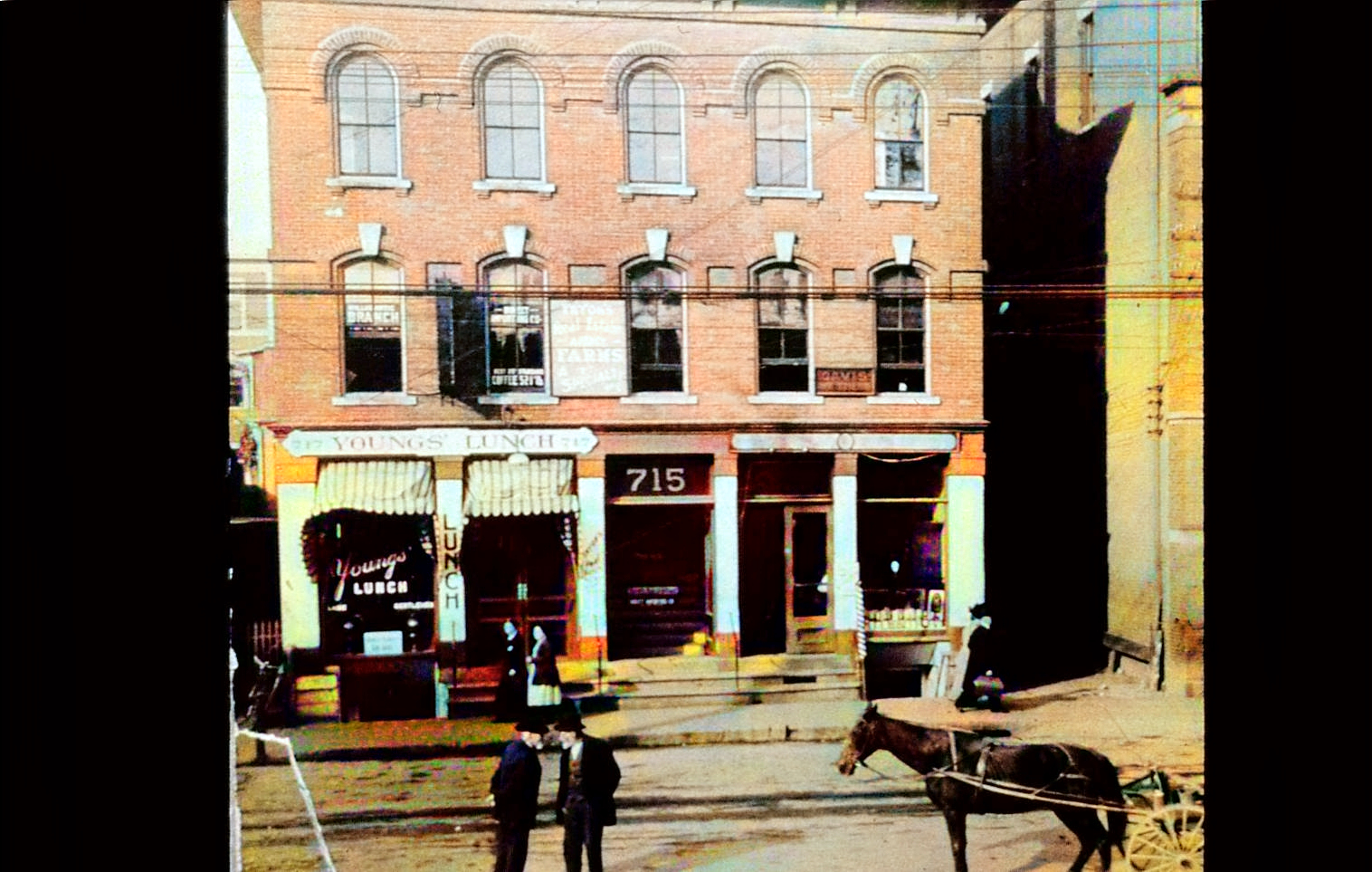
713-715 Main
St. Once known as "The Atwood Block".At
the time of the photo, it was home to
Young’s Lunch as well as a shoemaker, a
grocer and several small businesses.
|
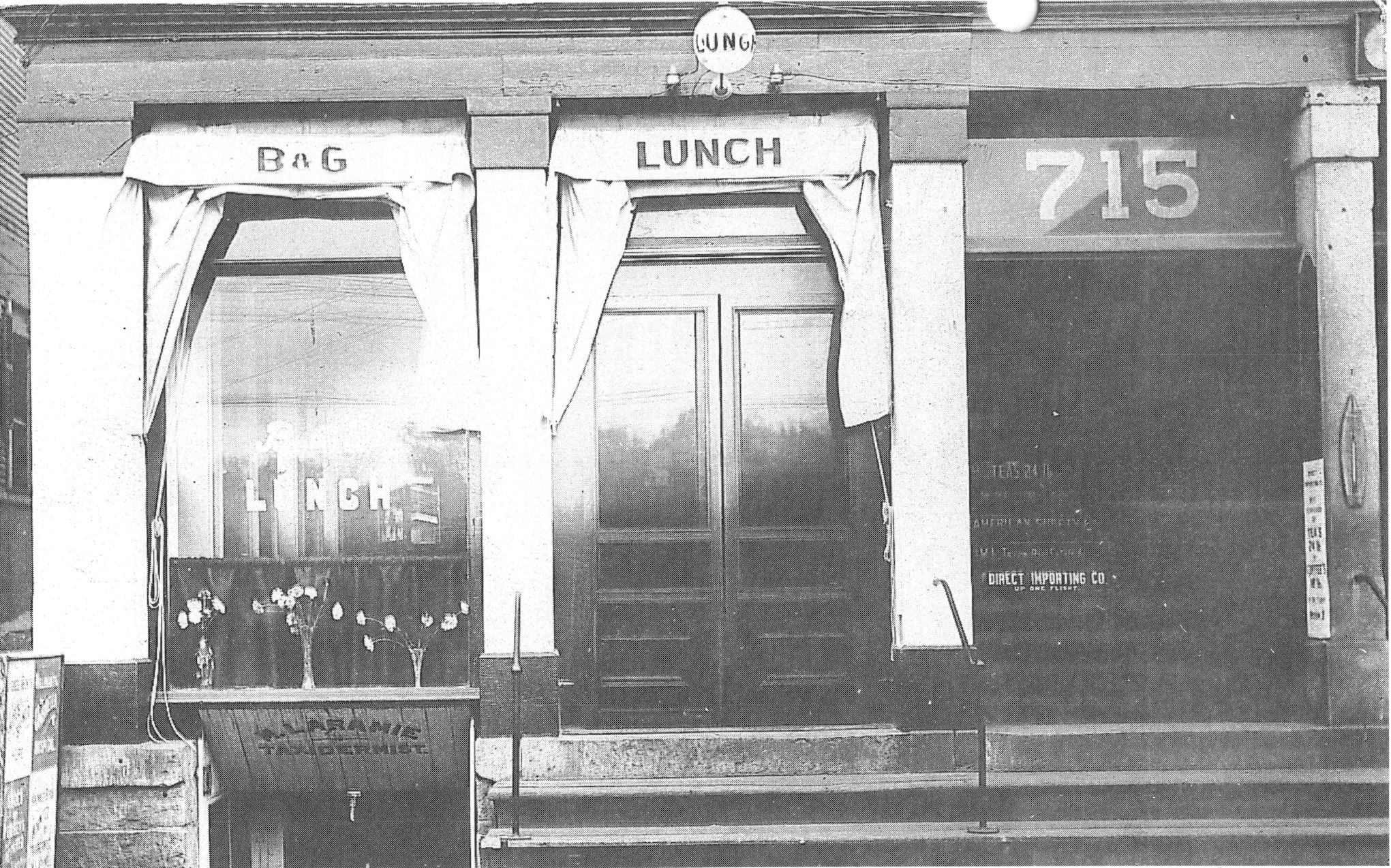
Atwood Block tenants - app. 1920
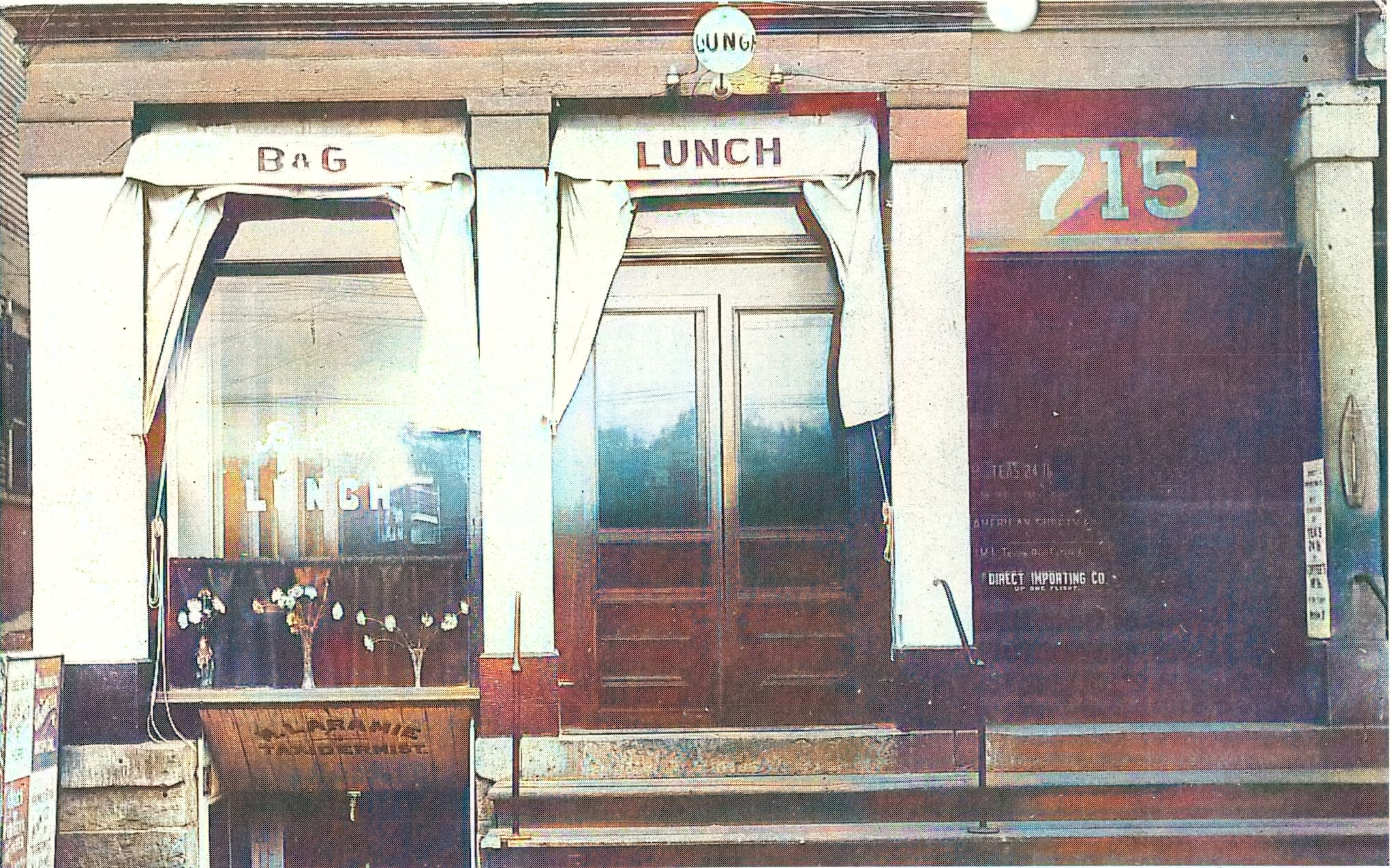
B & G Lunch was on ground floor. Mitchel
Laramie, taxidermist, was in the basement. The Direct
Importing Company, the American Supply Company,and
Tryon's Real Estate were upstairs. |
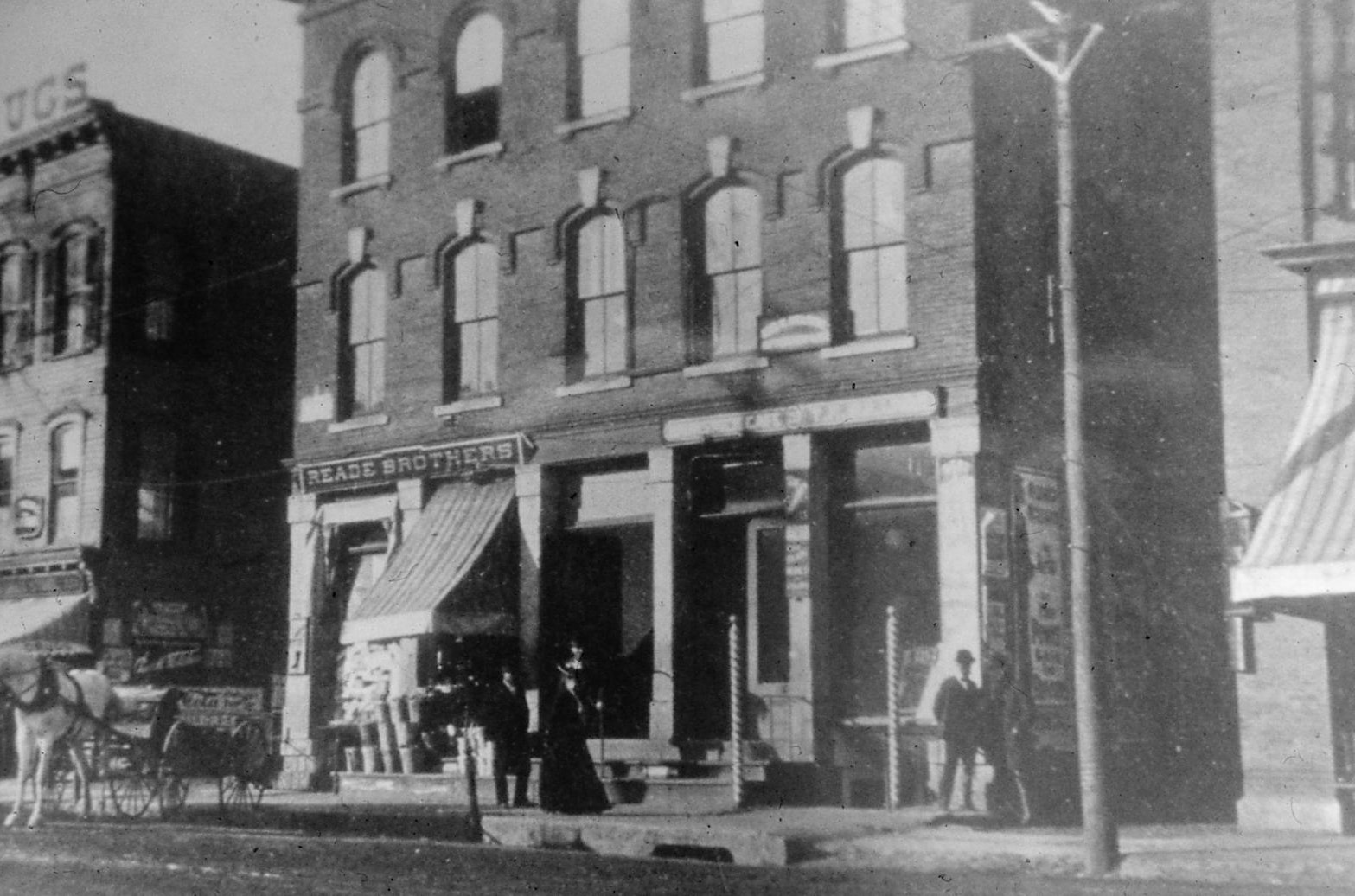
Atwood Block - app 1903
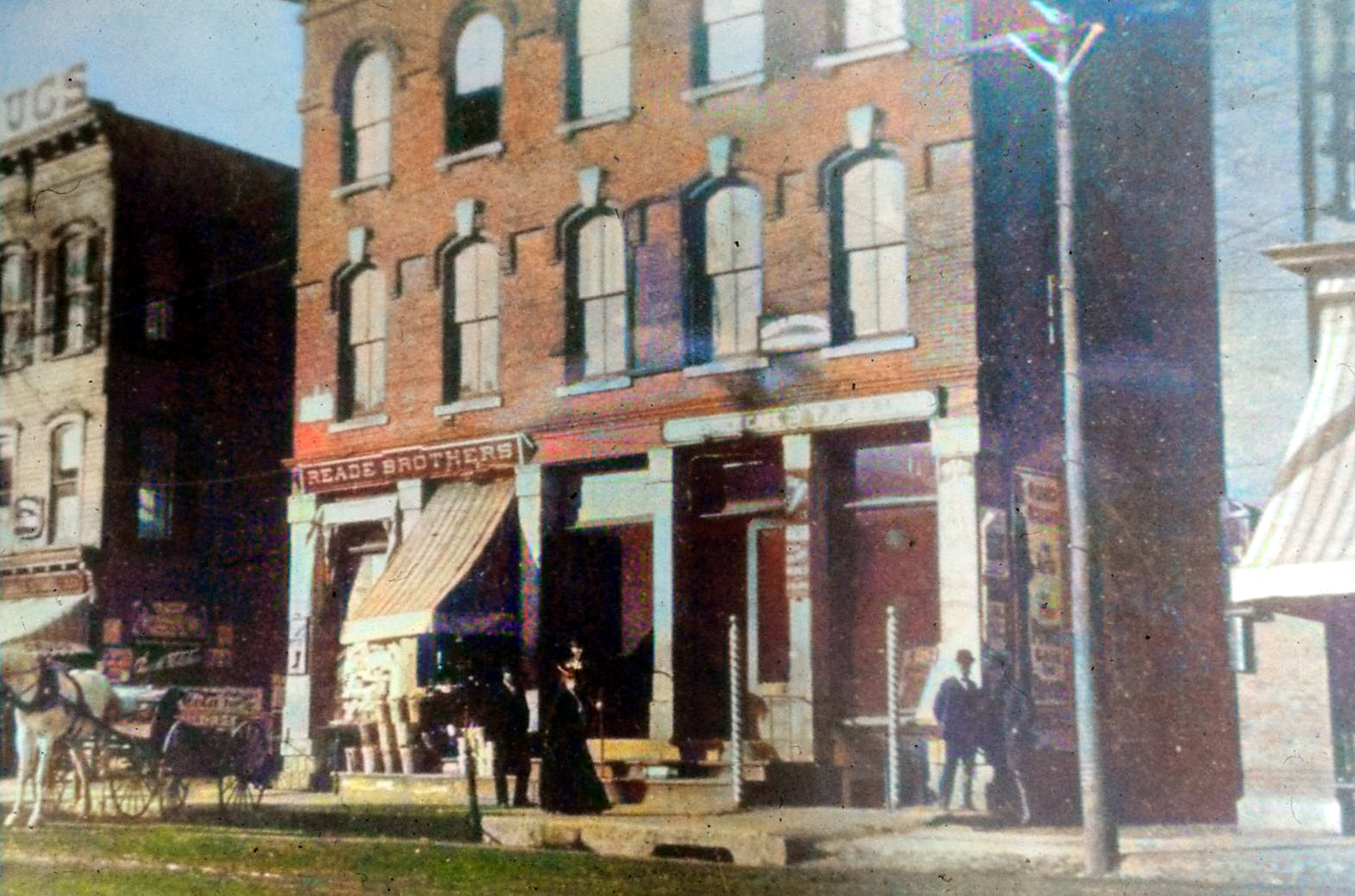 |
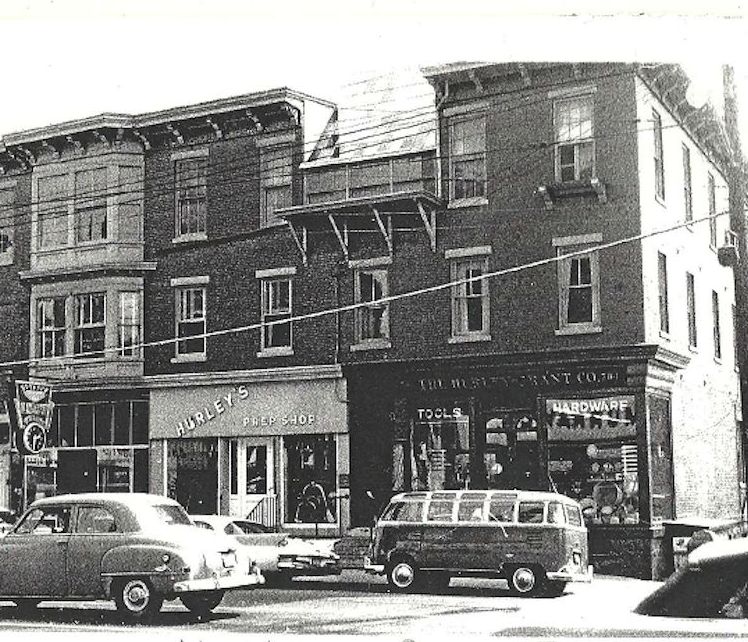
Bassett Block
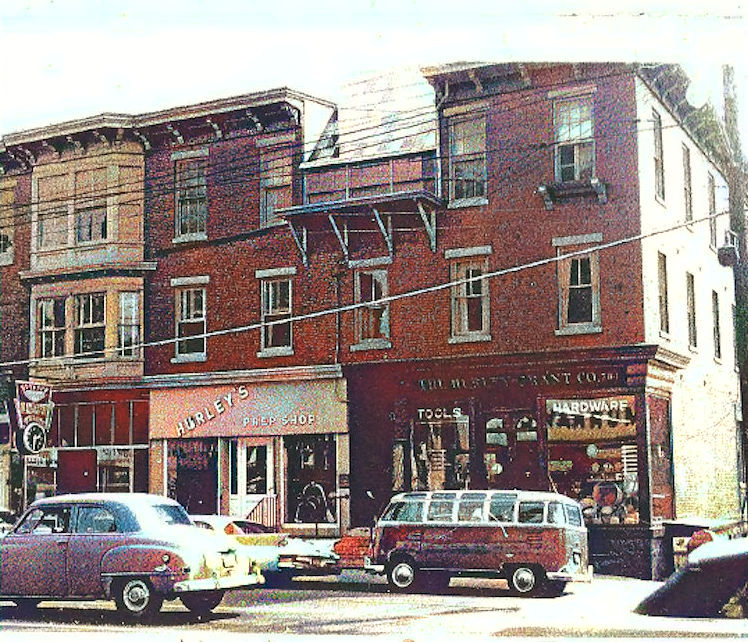 |
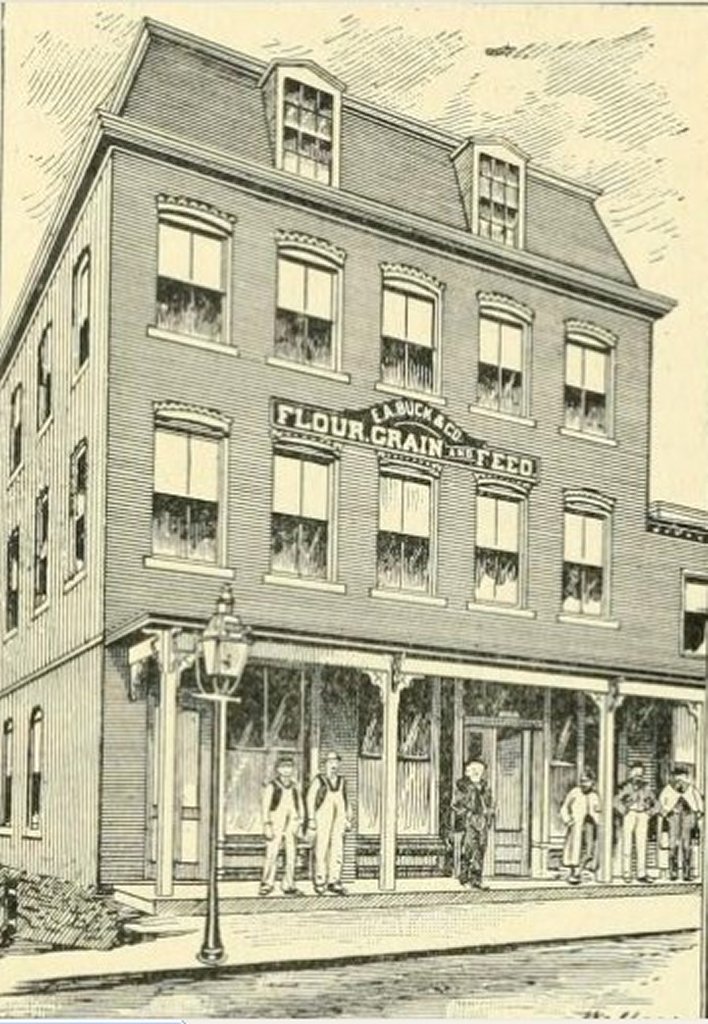
The E.A.
Buck Block
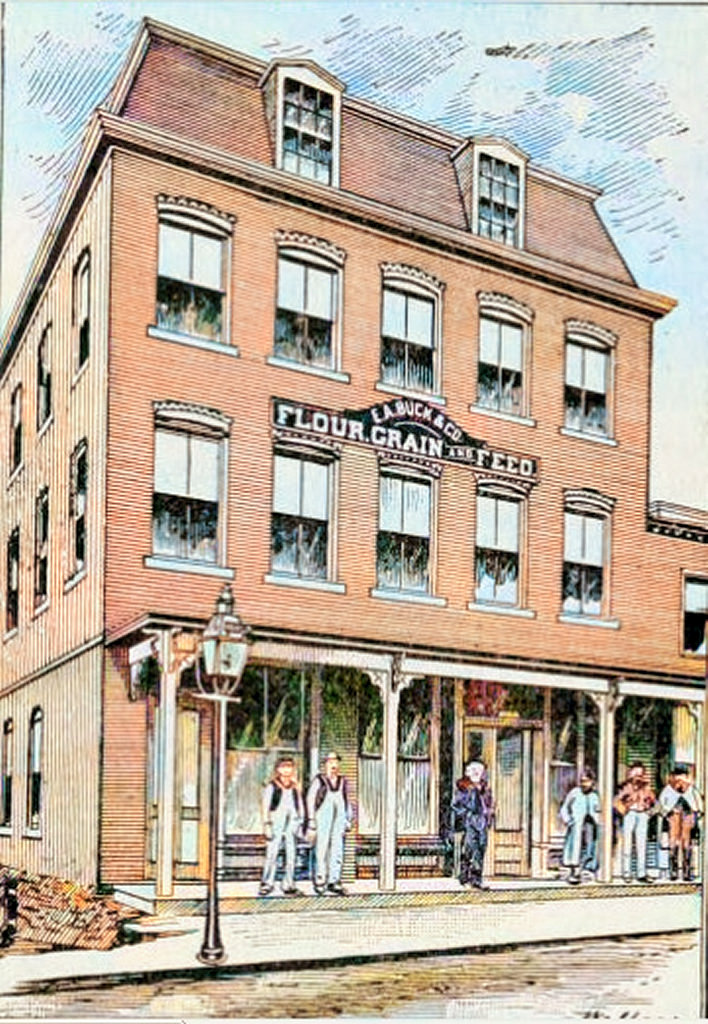
E.
A. Buck was a dealer in Flour, Grain,
Feed, Lumber, etc. The company served as
millers, and contractors for all kinds
of hard-wood lumber, railroad ties,
etc., and did both a wholesale and
retail business,and included two
mills. It was located at No.
89 Main Street. This was before the
renumbering of Main St. at which time it
became 646 Main St. |
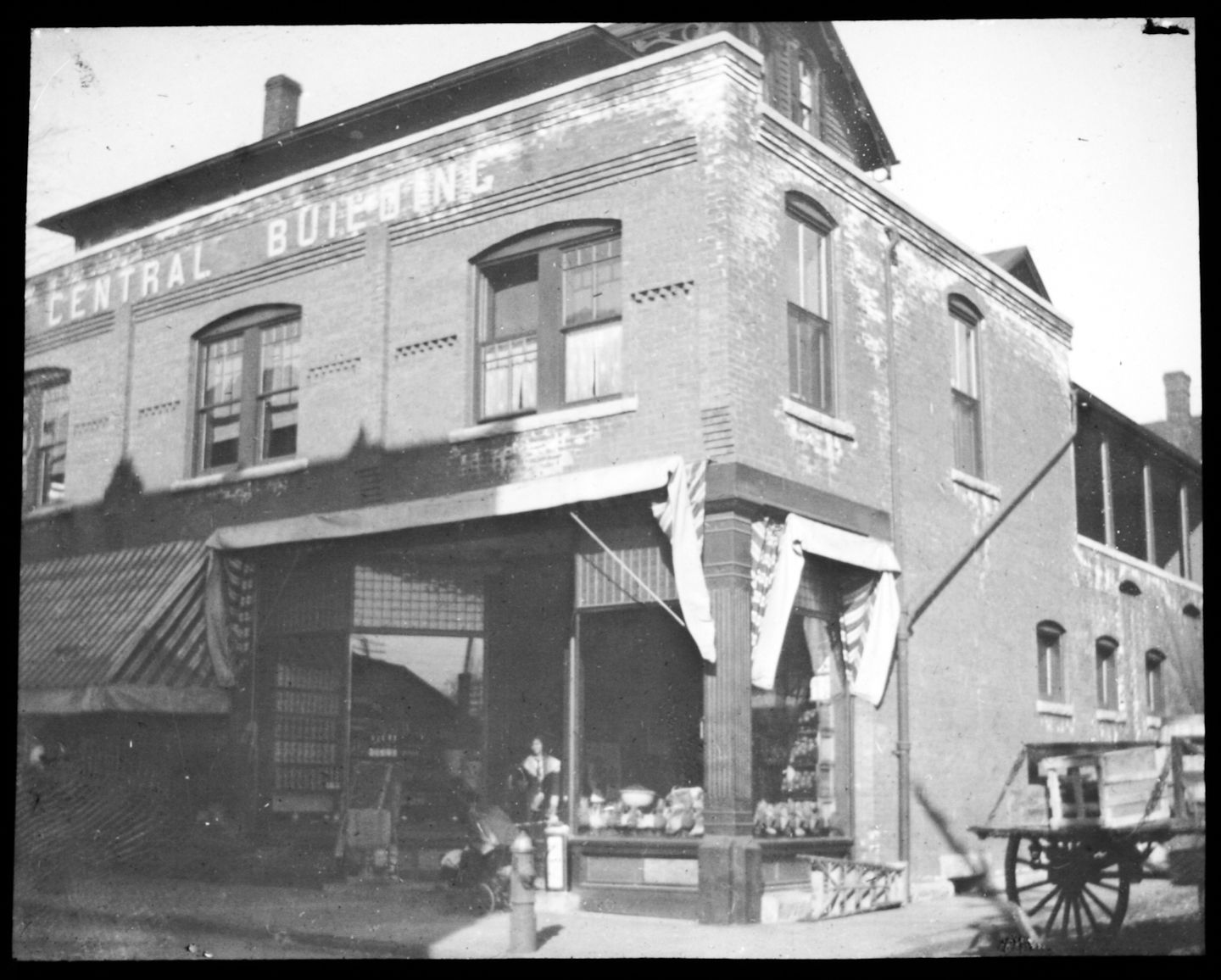
Central Building Block -1910
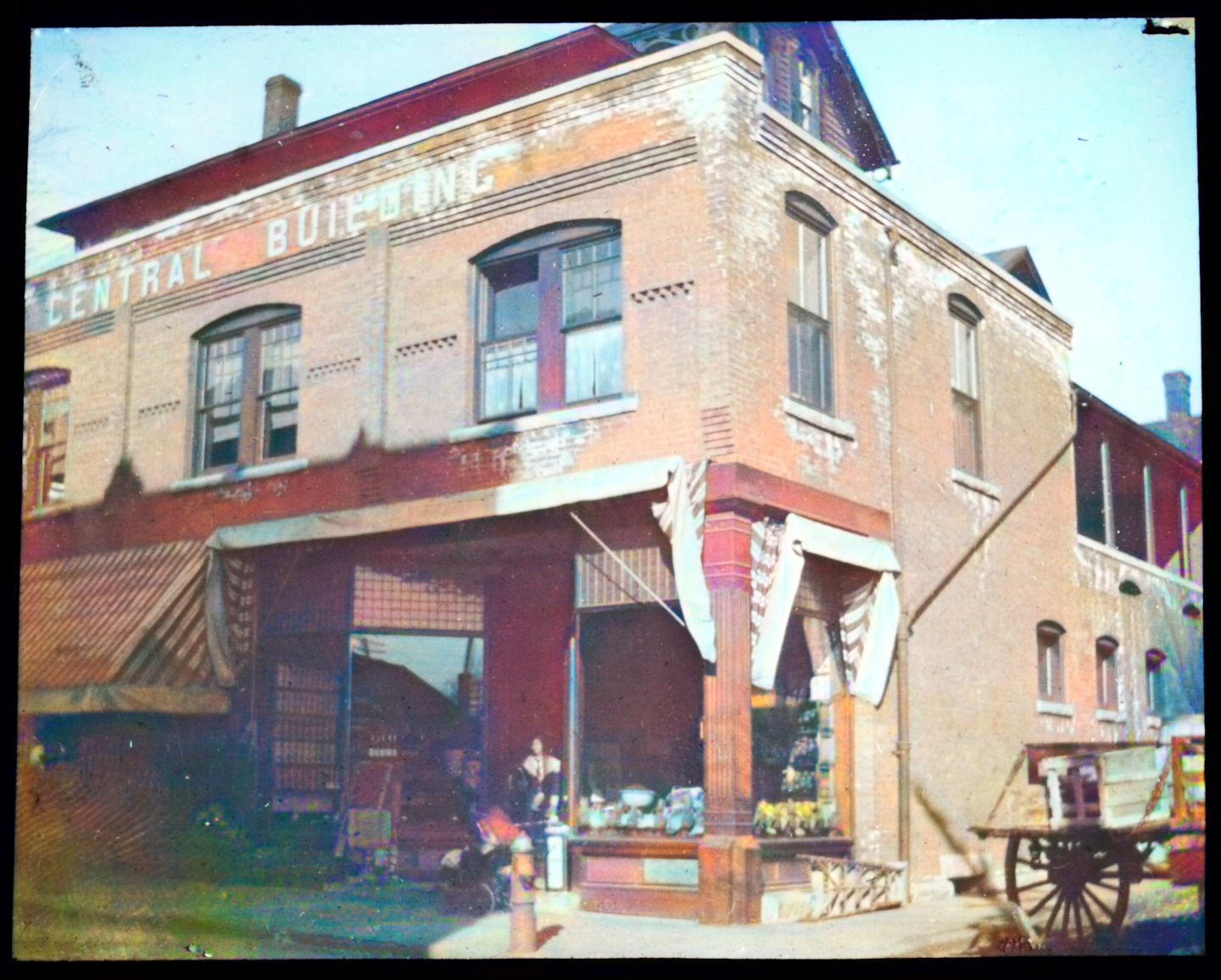
The
Central Building stood on the corner of
Center and Union Streets. It was home,
over the years, to Woods Restaurant,
Wood’s Smoke Shop, a billiards room,
Potvin’s Barber Shop, Durand’s Barber
Shop, a shoe repair shop and a variety
store. It was scheduled to be demolished
as part of Willimantic's Redevelopment
Plan when a fire on Oct. 31,1971 ravaged
the building and left 32 people
homeless. |
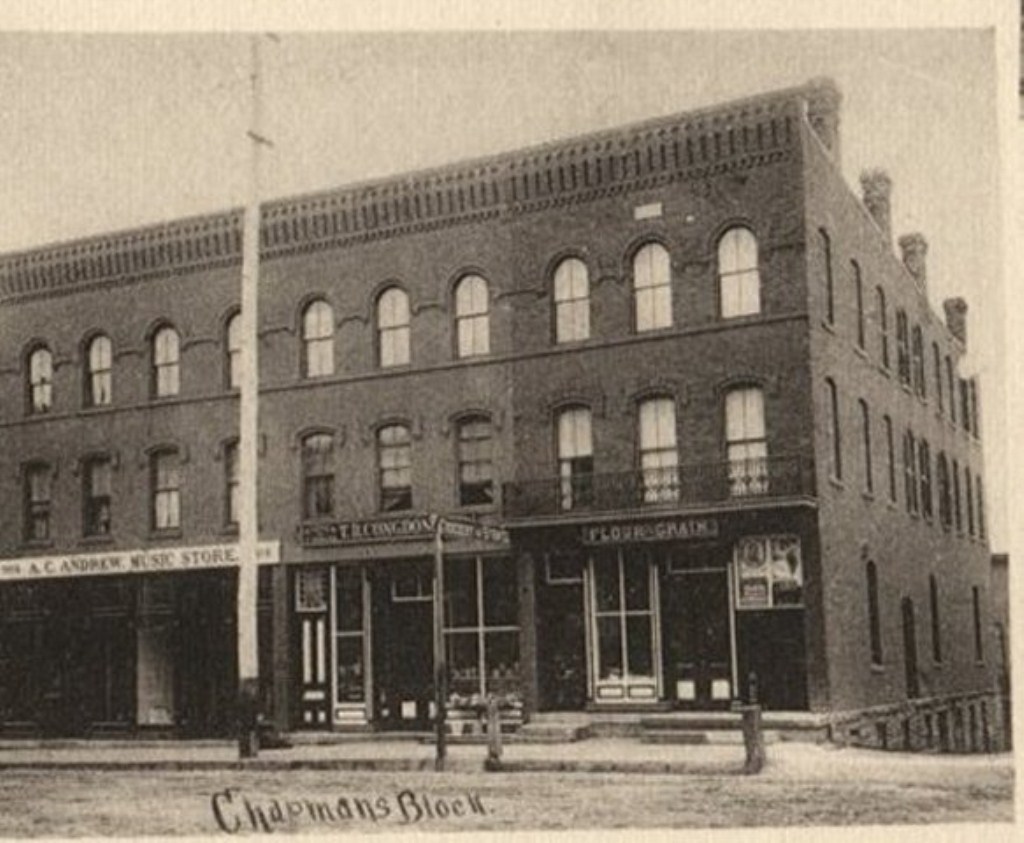
Chapman
Block
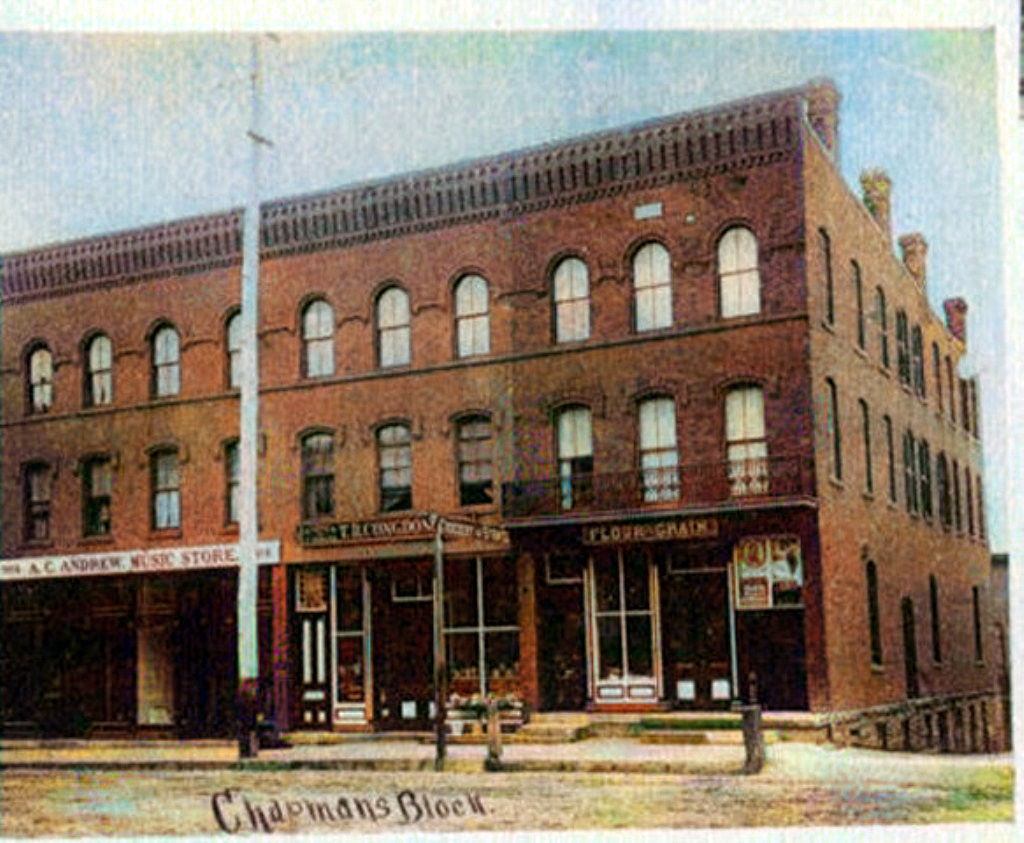
The Chapman Block was built in
1876, and this 1894 photograph reveals
the companies that were in business. On
the left at 804 and 806 is A. C. Andrew
Music Store. In the Center is T. R.
Congdon's stove and tinware store. On
the left is an unnamed flour and grain
store.
|
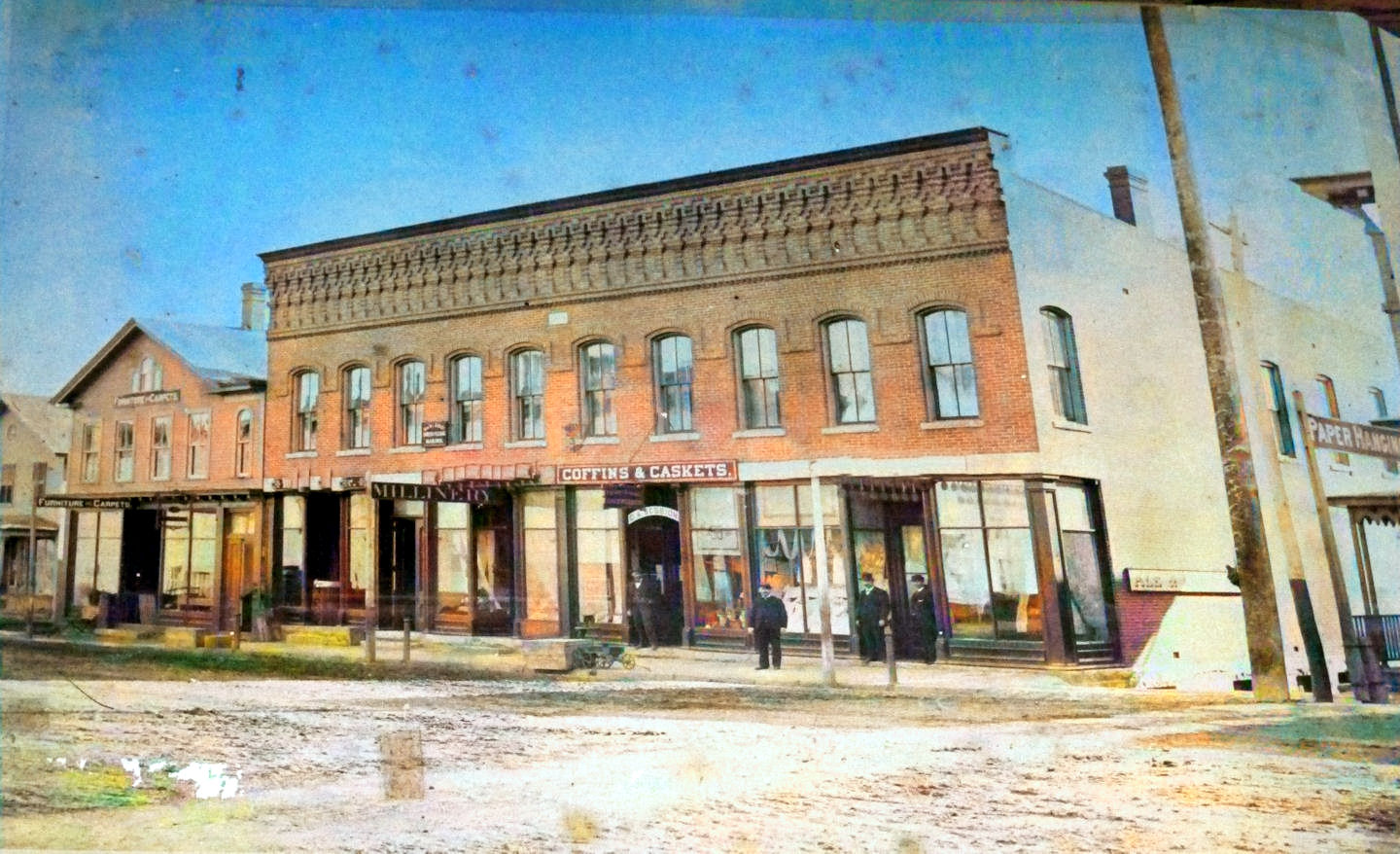
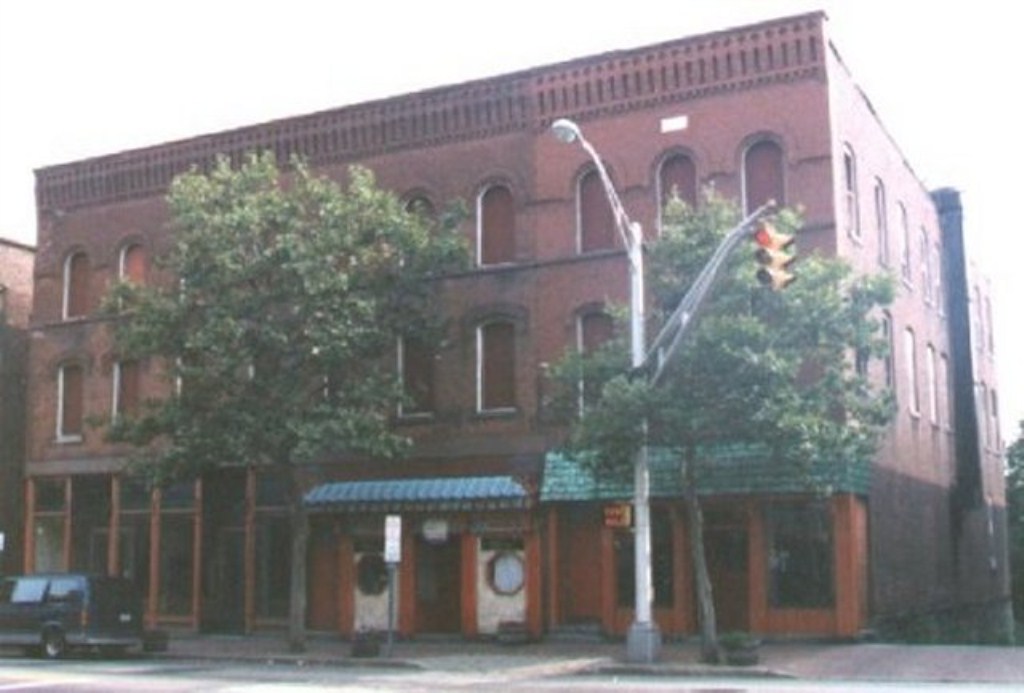
Chapman
Block
The Chapman Block became home to the Tin
Tsin Restaurant. |
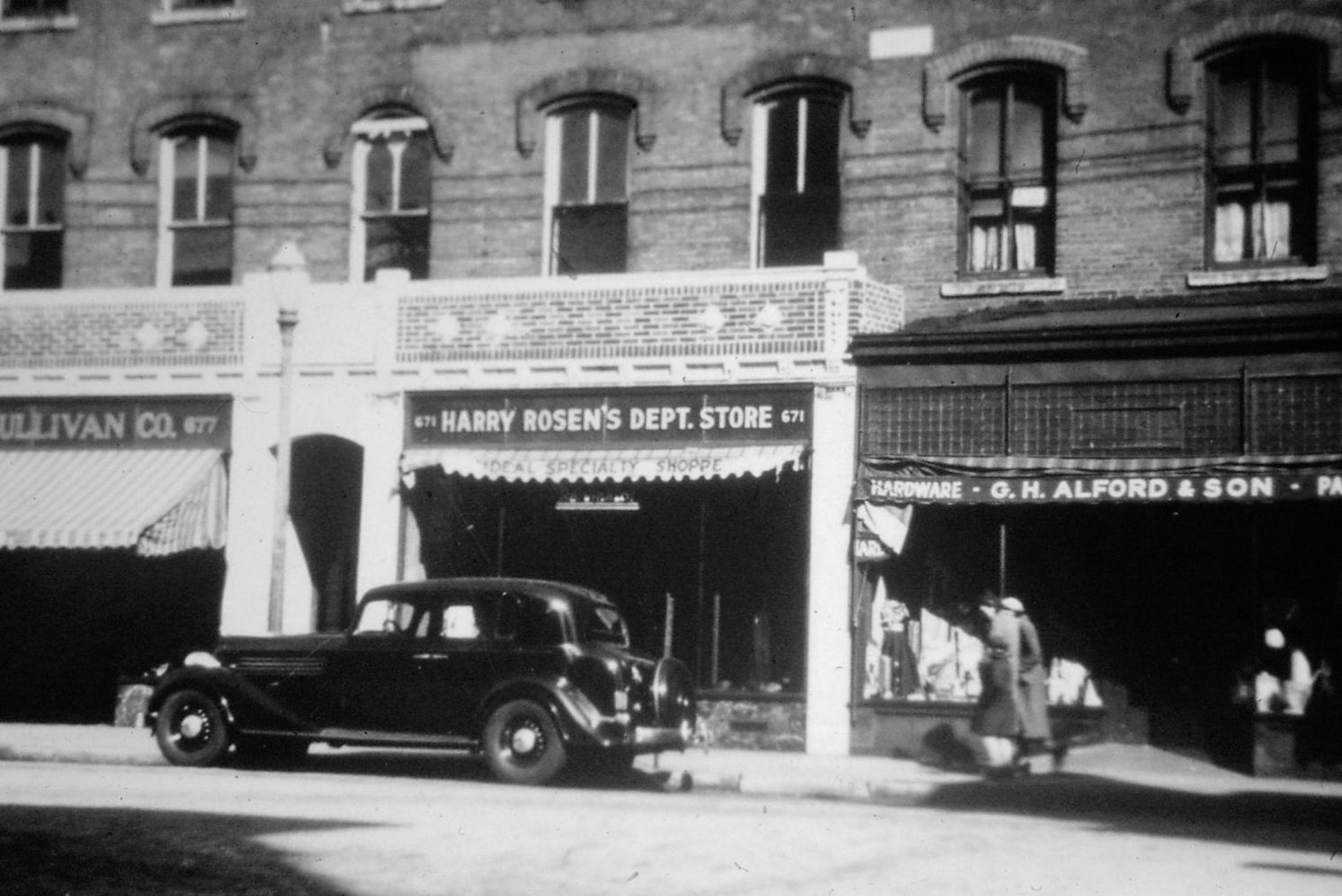
Commercial Block -
661-677 Main Stret
This is the
Commercial Block. At the time of the photo, the ground
floor stores were occupied by the Brick-Sullivan Shoe
Company, Harry Rosen’s Department Store and G.H. Alford
and Son Hardware Store. It was destroyed in the Saint
Valentine's Day fire of 1969.
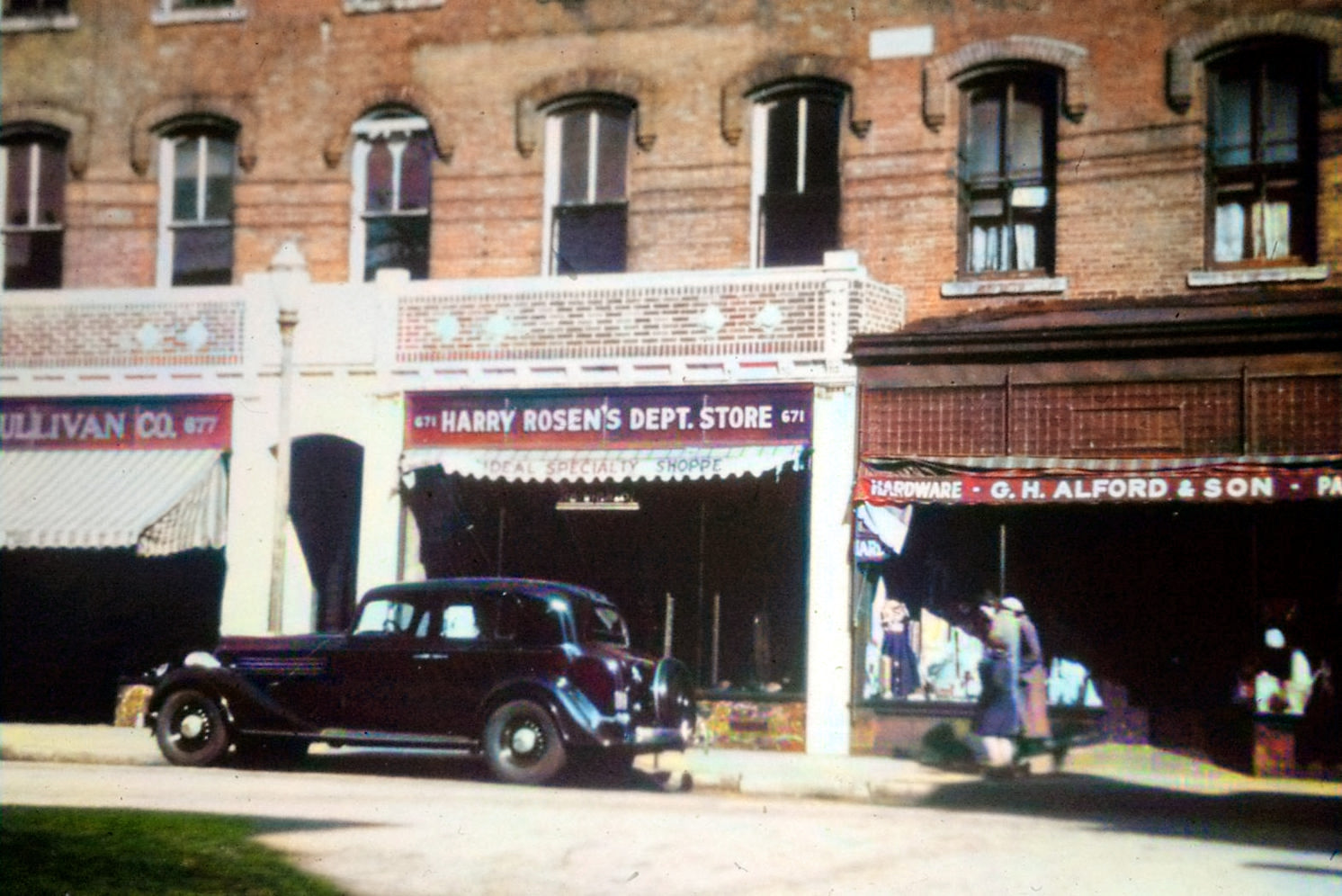 |
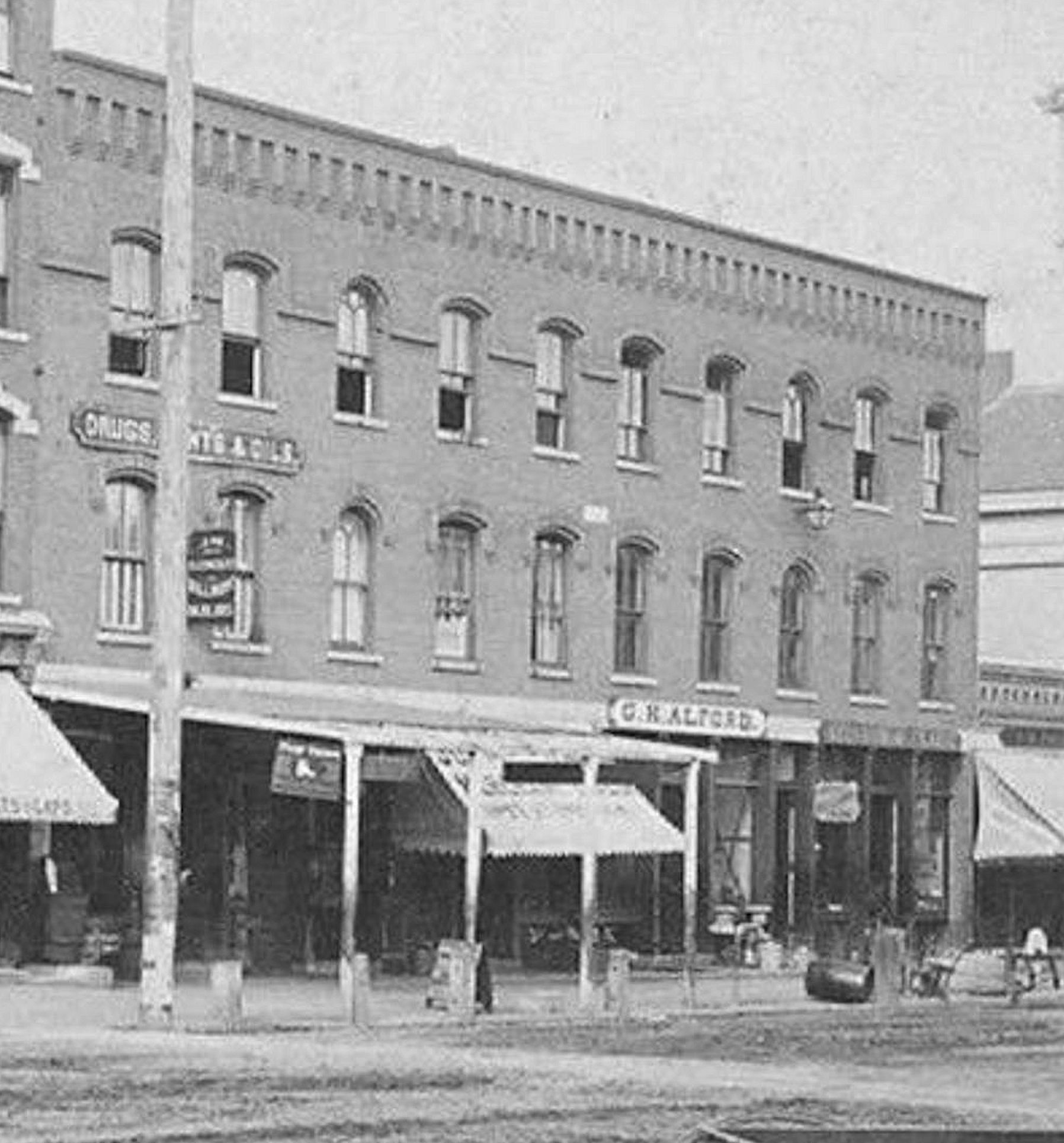
The
Commercial Block
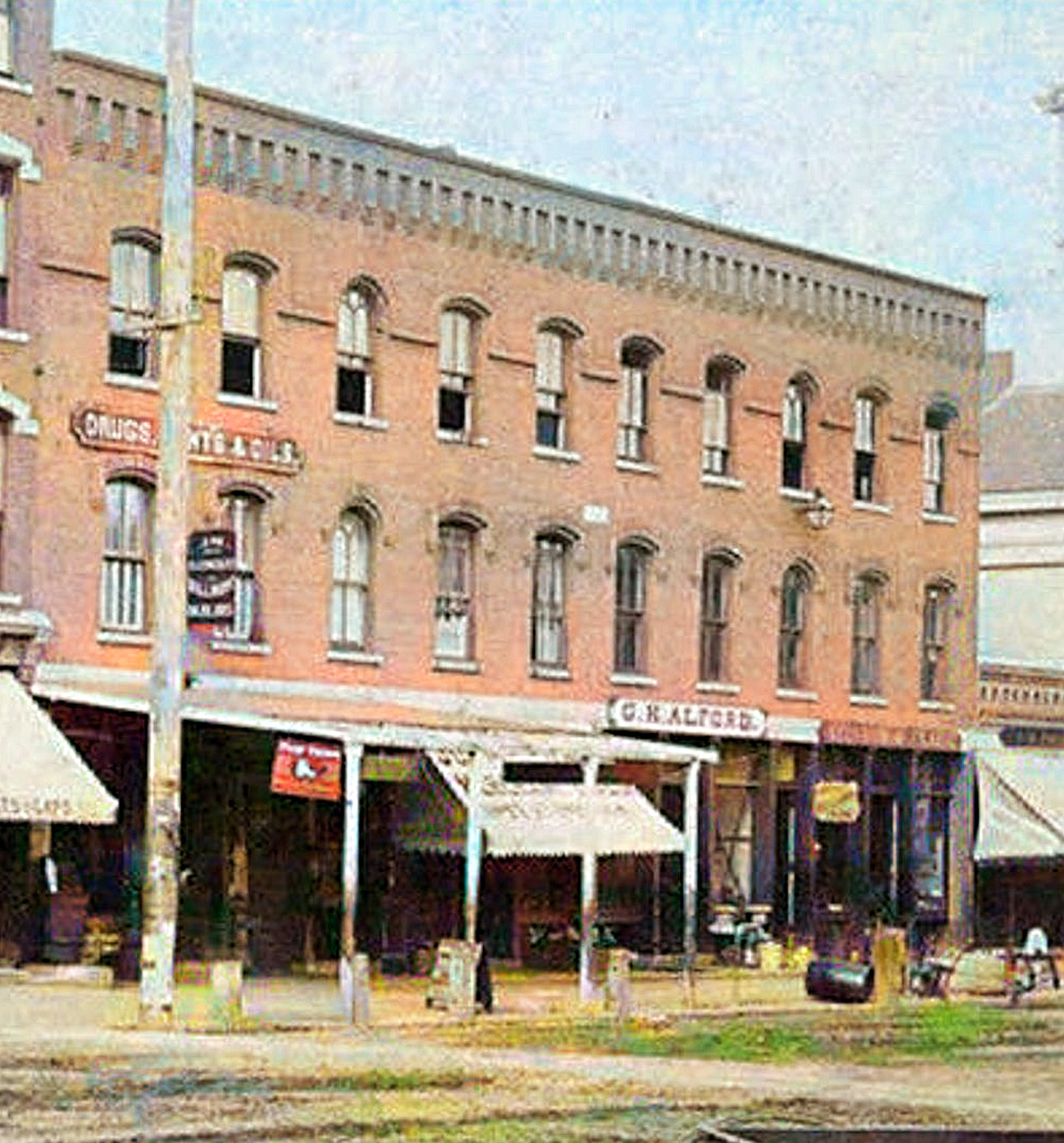
The Commercial Block (661-677
Main St.) and the Turner Building
(679-685 Main St.) were destroyed in the
Saint Valentine’s Day fire of 1968. At
the time the photo was taken, the
buildings were occupied by the Grand
Union Tea Company, Towne Photographers,
Bowman’s Tailor Shop, Yonclas
Confectionary, Danahey’s Barber Shop,
Dondero’s Pool Room, Hunt’s Clothing
Store and Giles Hardware.
|
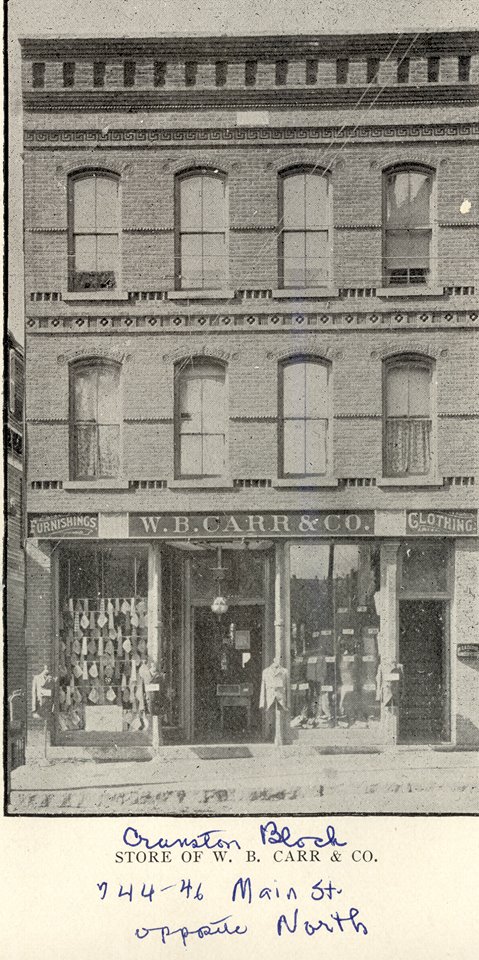
Cranston Block
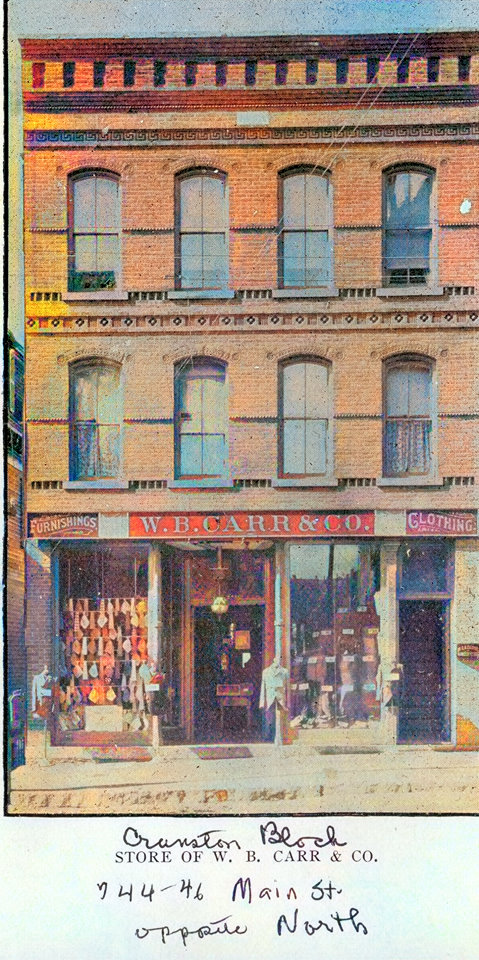
|
|
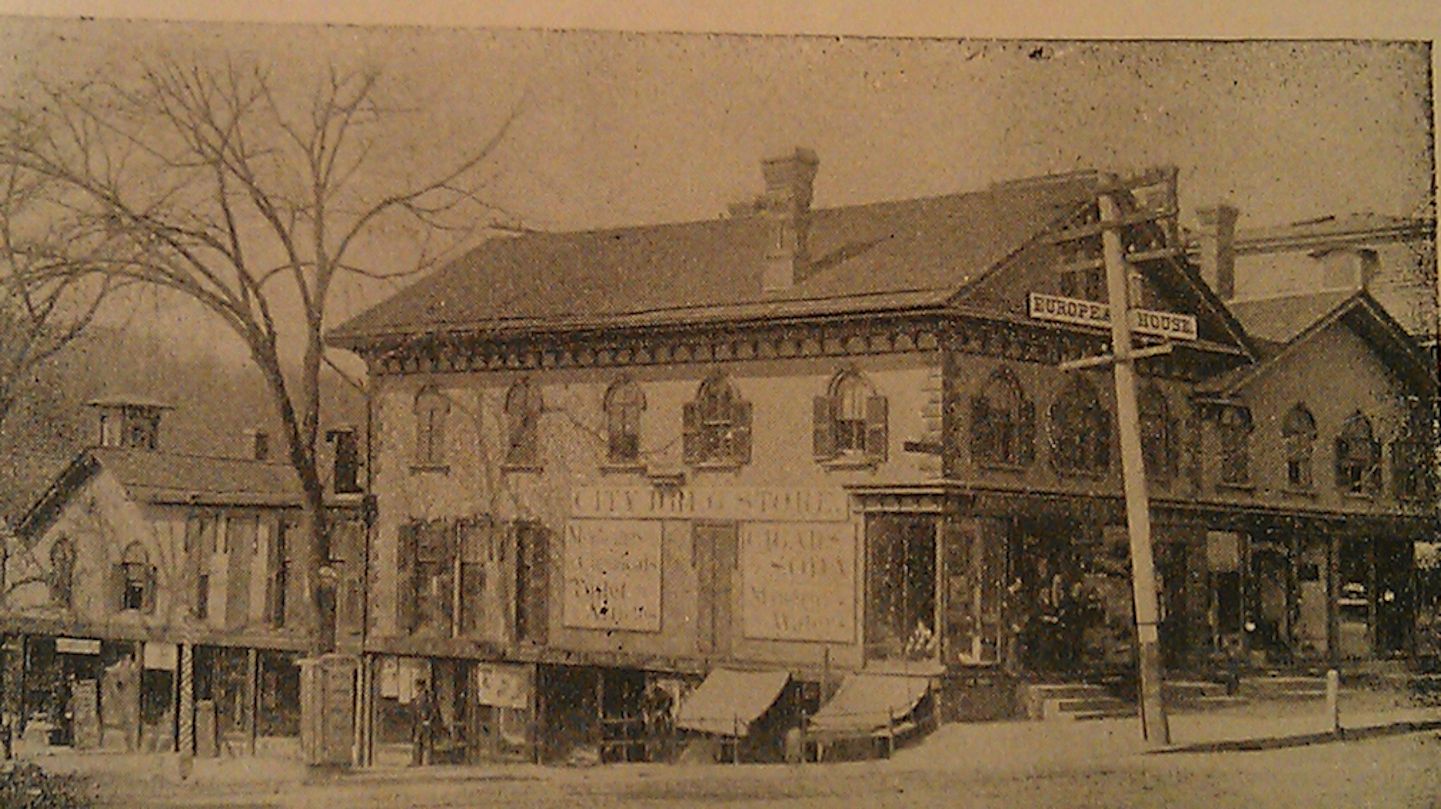
European House/Shea Block
At the end of the
building’s life, it was occupied by Curran’s Pharmacy.
However, the building itself had undergone several
renovations over the decades. The actual building was
put up in 1861 by A.E. Brooks and was originally a hotel
and restaurant. The main occupant was “The European
House” and it had access from Railroad St
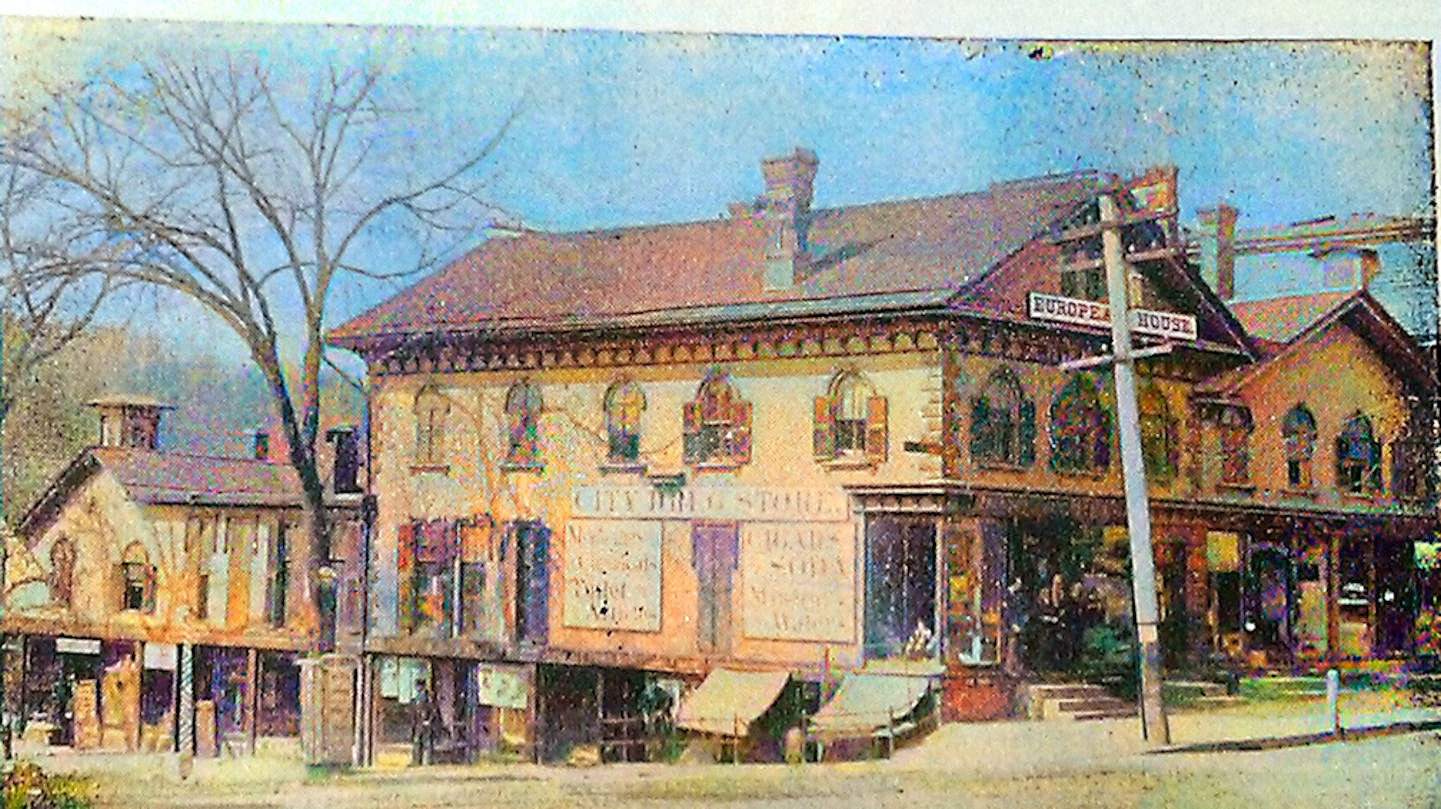 |
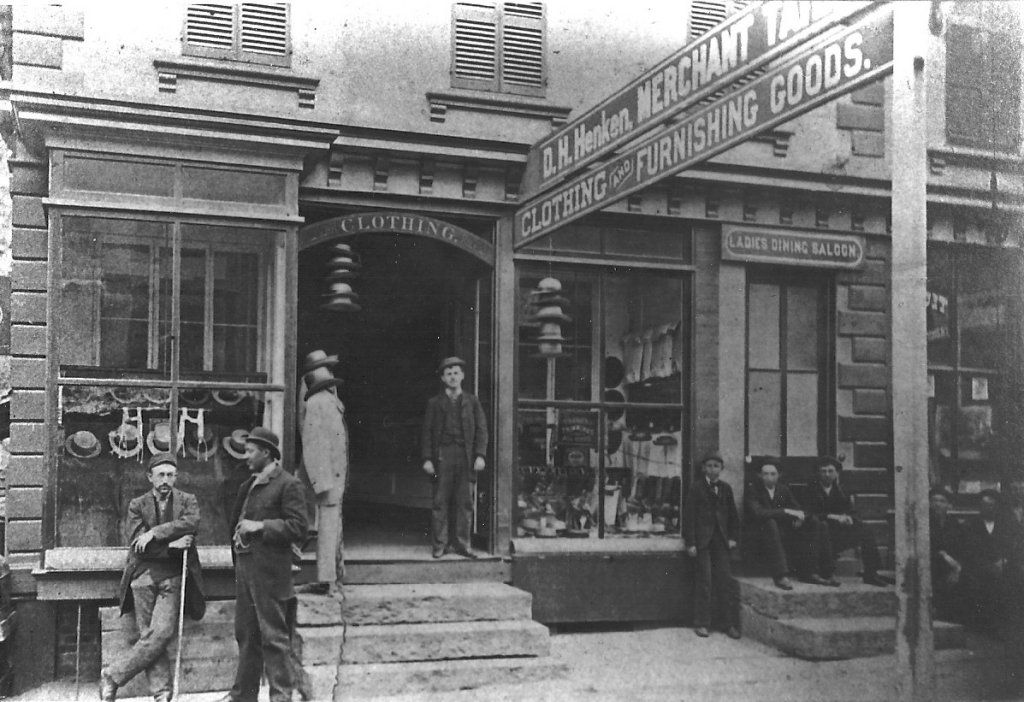
SEuropean House/Shea Block
The European House building became "The Shea
Block" when entrepreneur Dennis Shea bought the
building. Shea was also a bottler. Notice the sign for
the "Ladies Dining Saloon".

|
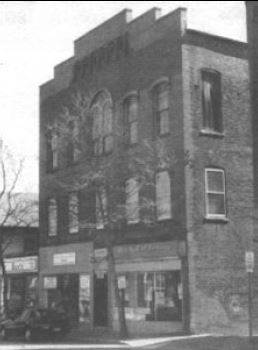
Franklin Hall Block
794-800 Main
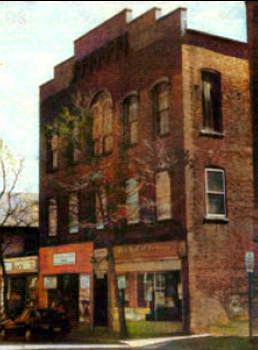 |
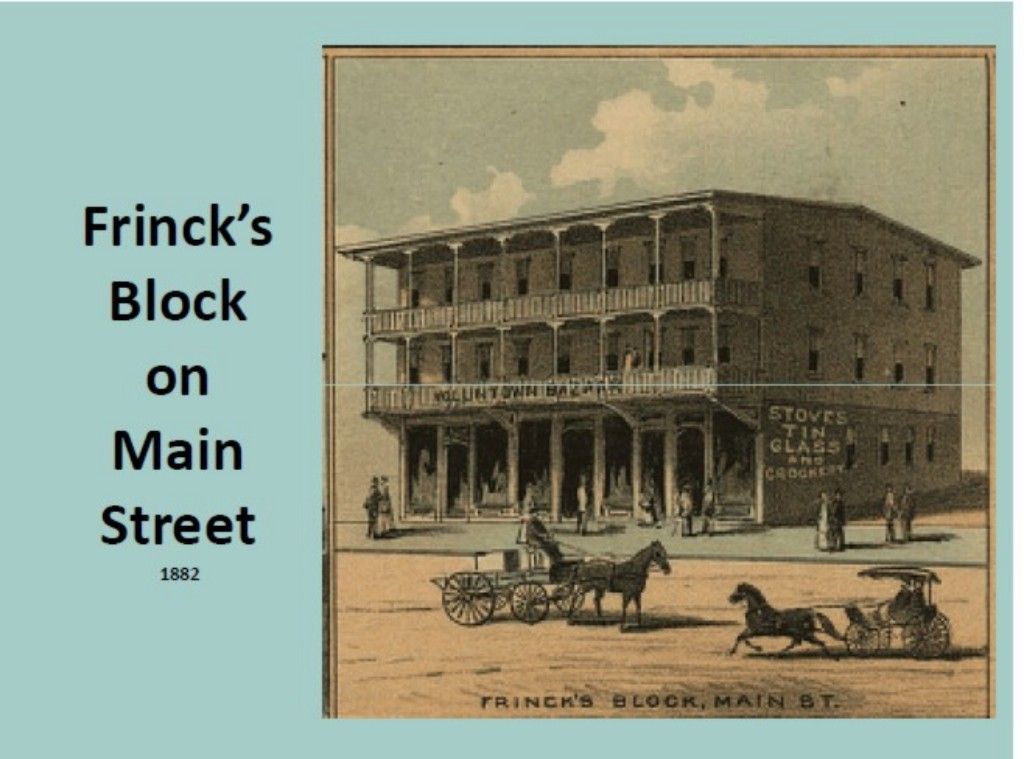
Frinck's Block
This photo is of Frinck's Block, one of
the few owned by a woman (Mrs. Elnora
Frinck). Her store sold crockery and
glassware.
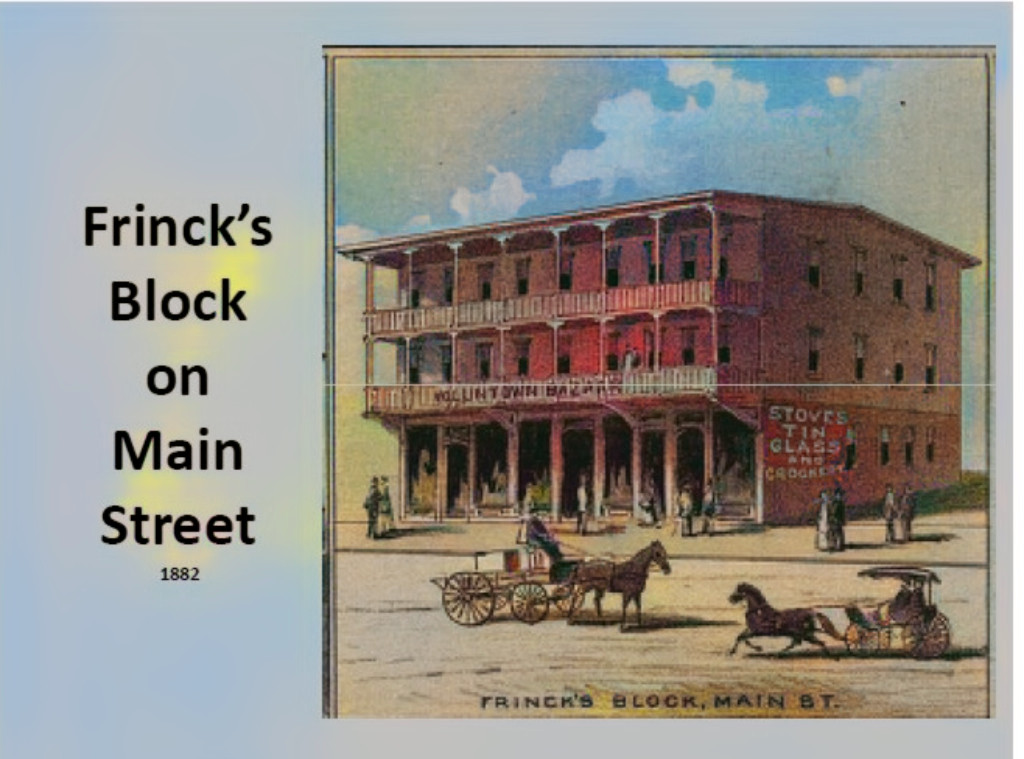 |
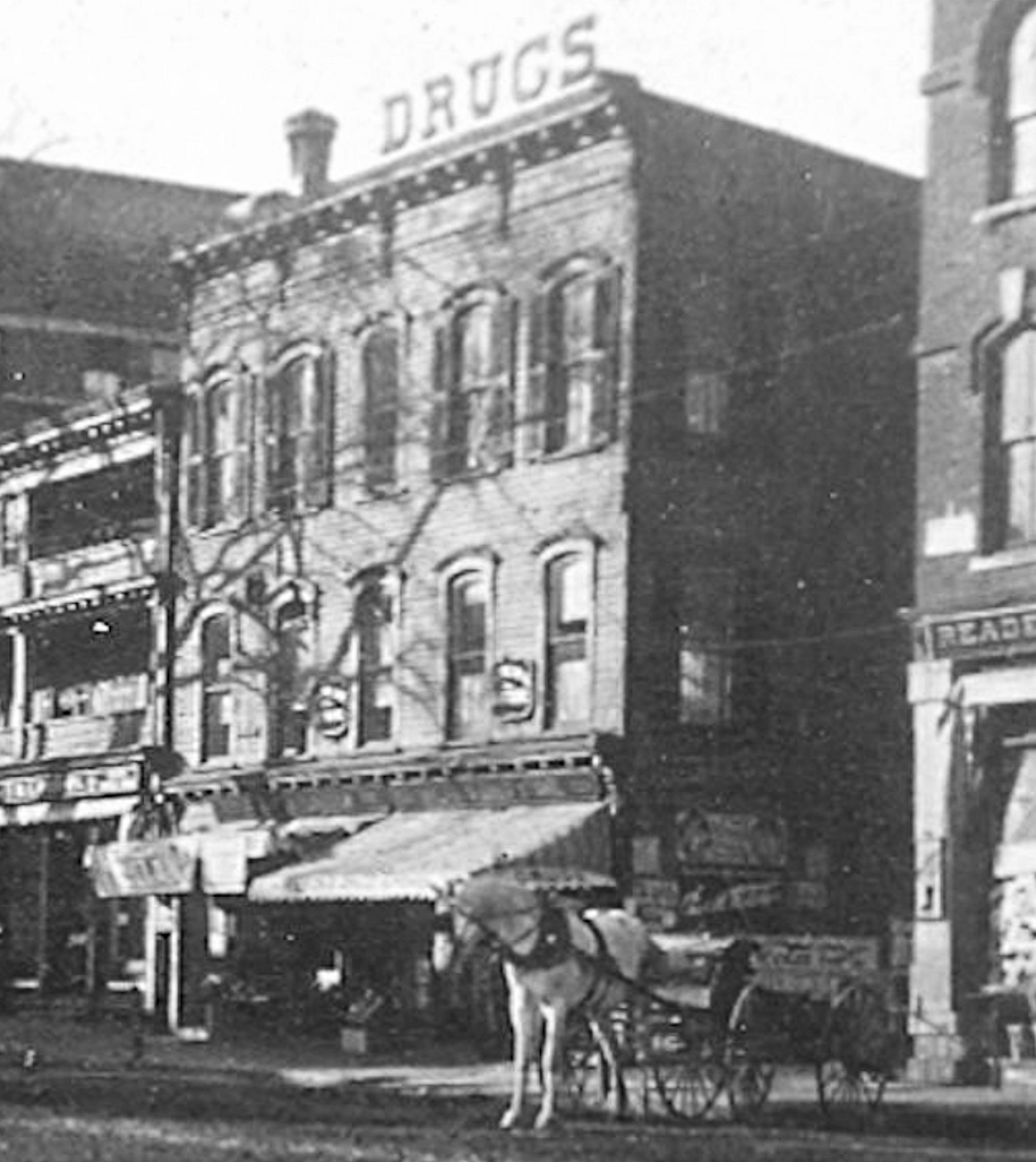
Fuller Block
The Fuller Block was at 723-727 Main Street. It
was home to the Wilson Drug Company.
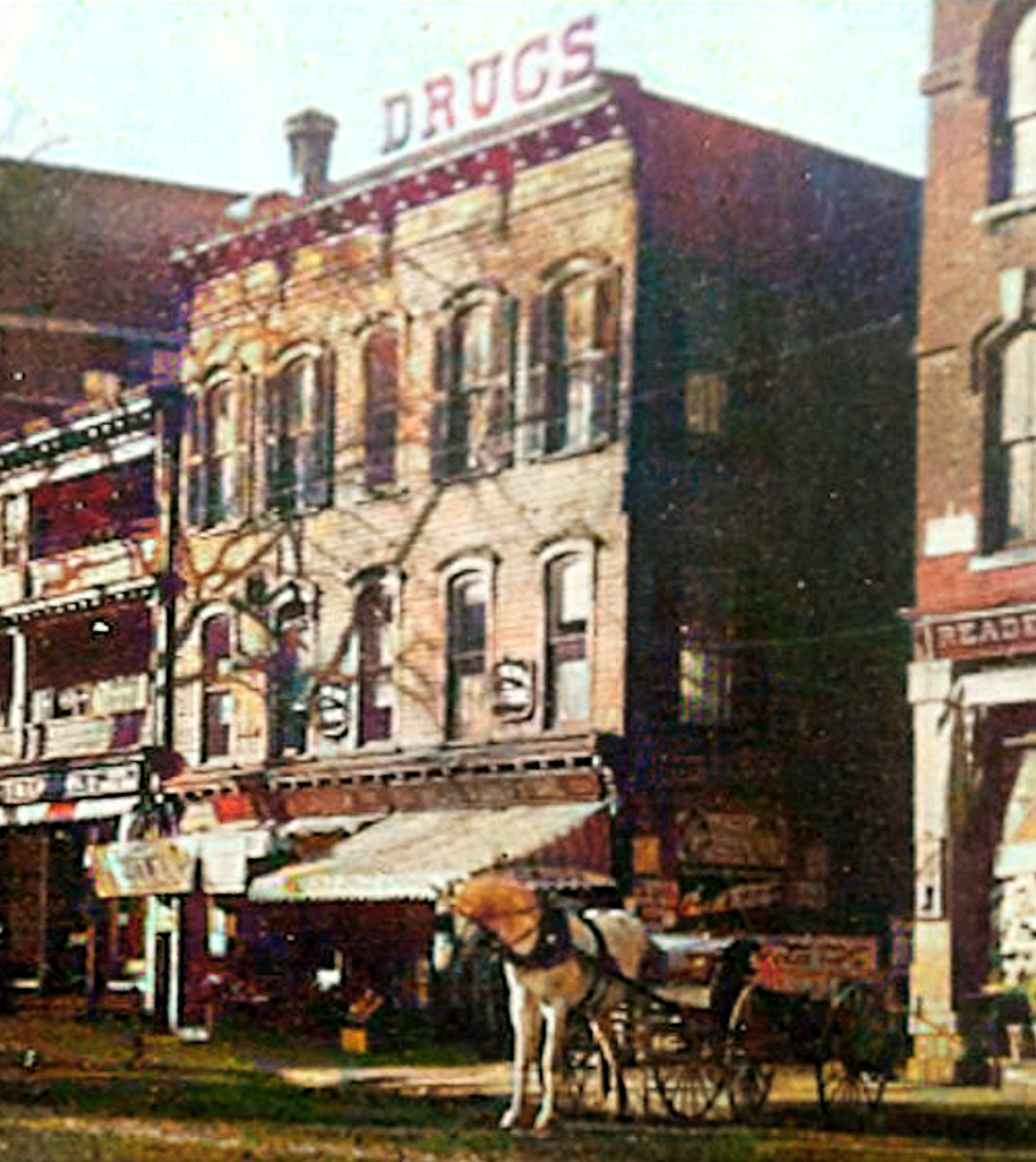 |
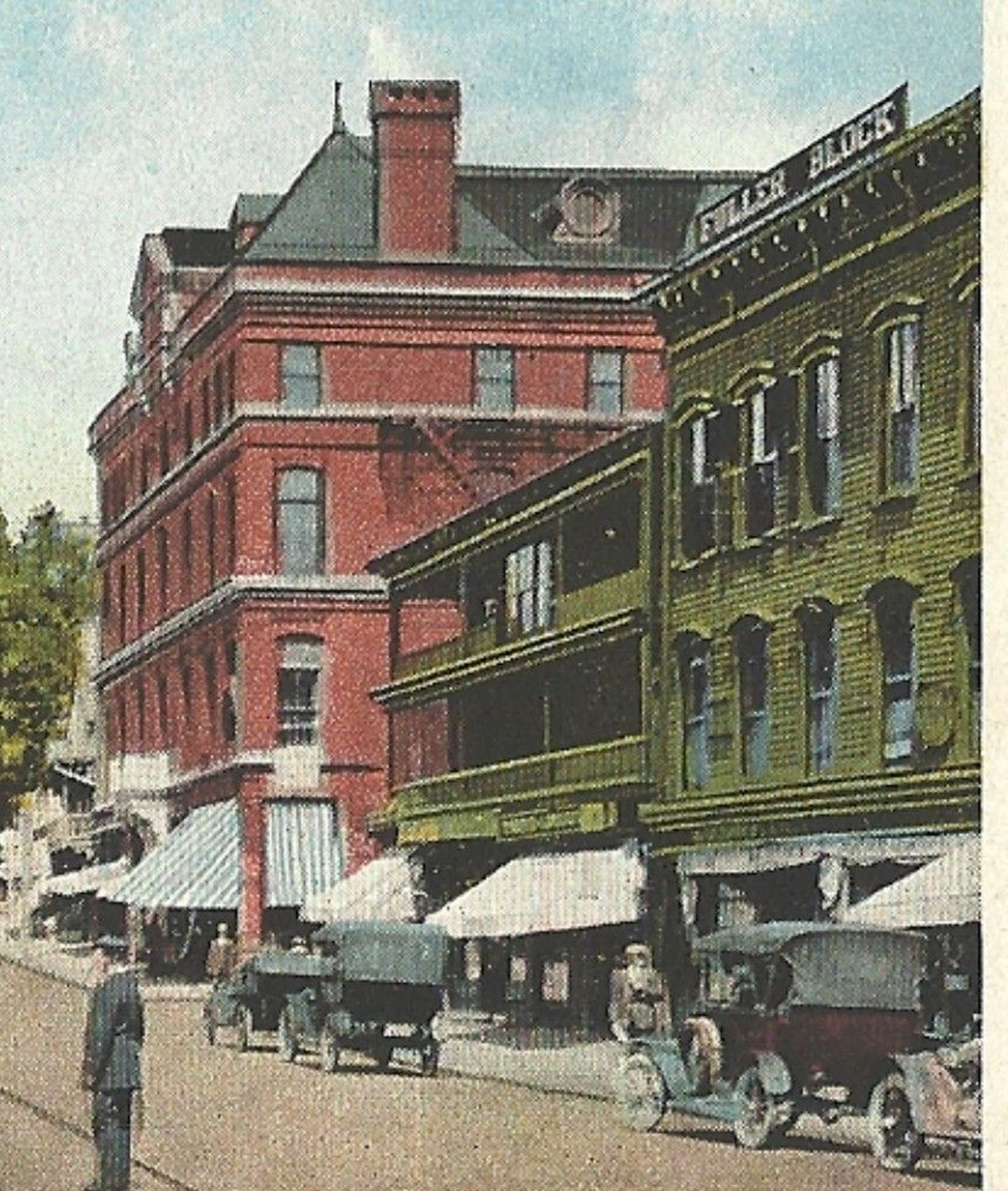
Fuller Block |
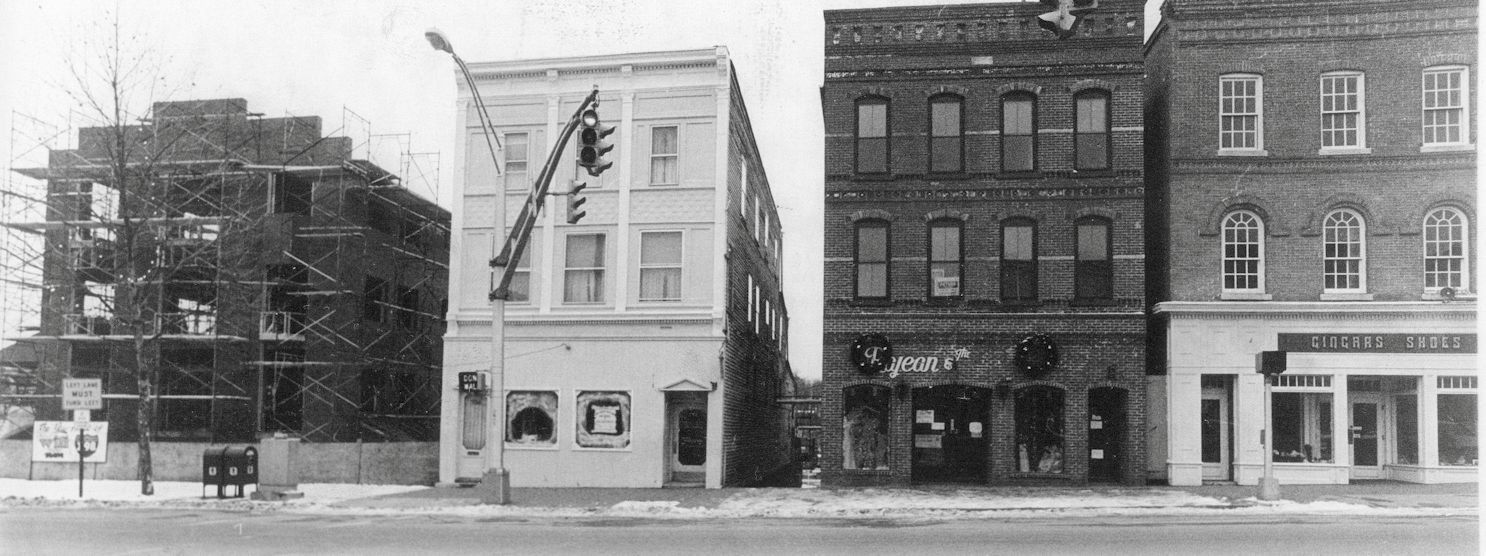
734
738
Gingras 744
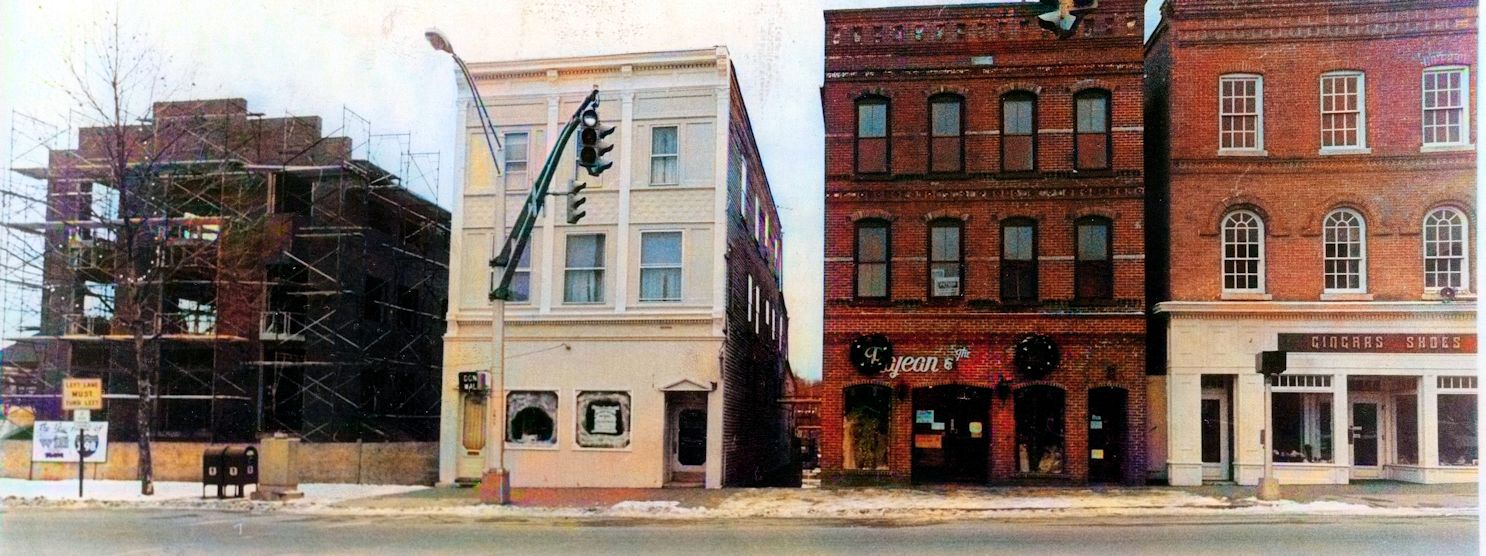
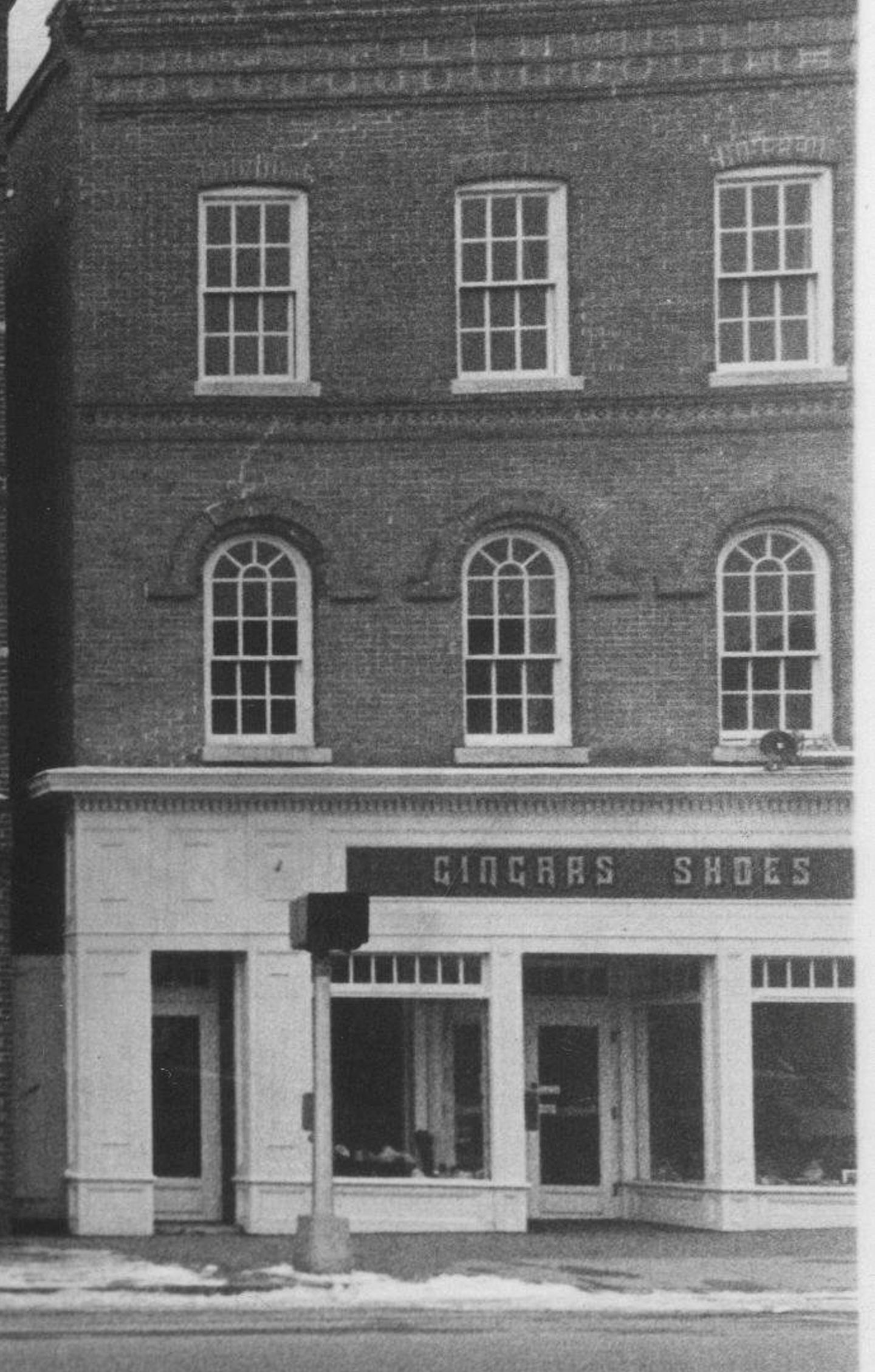
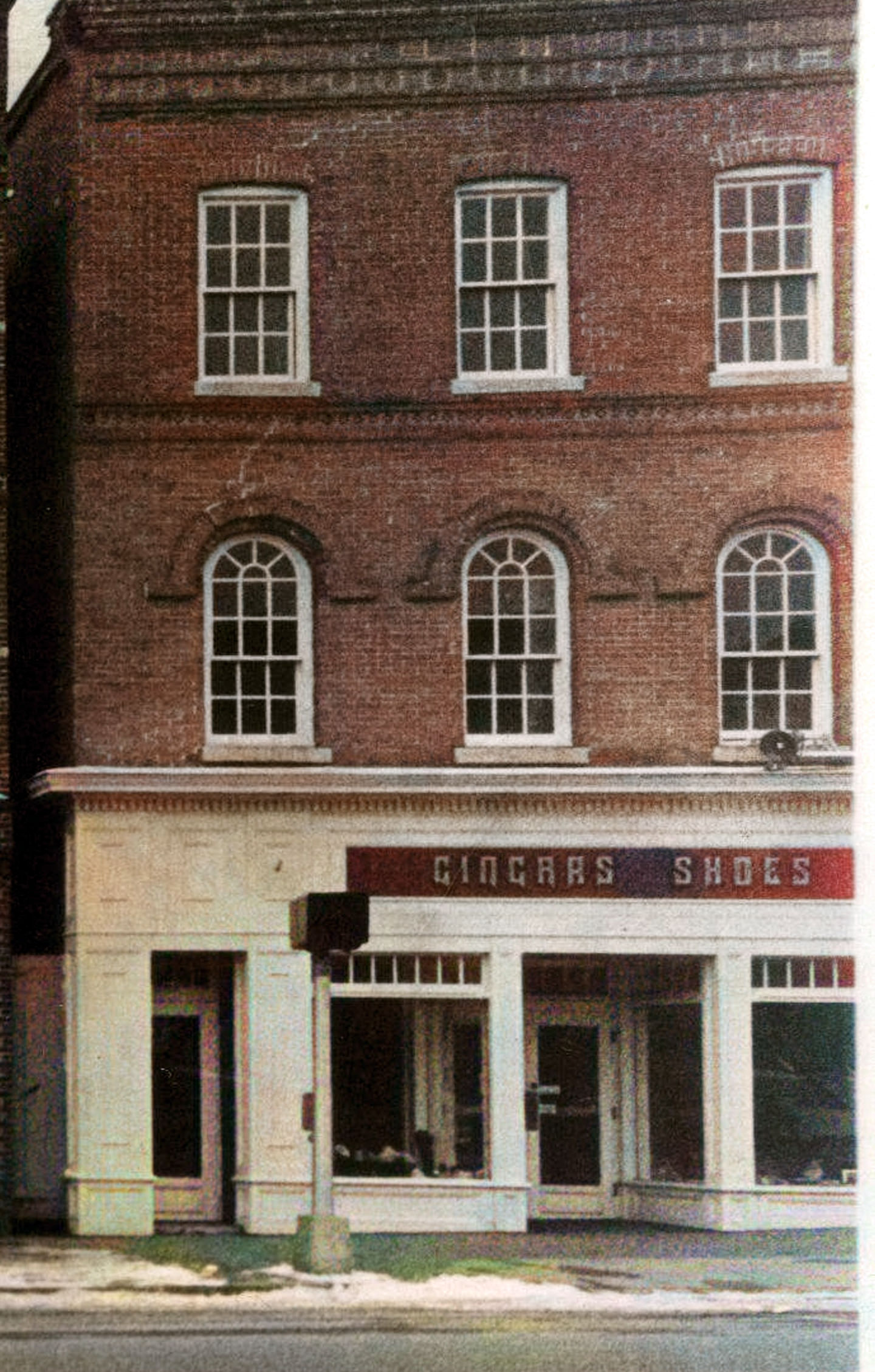
Gingras Block
744-746 Main Street |
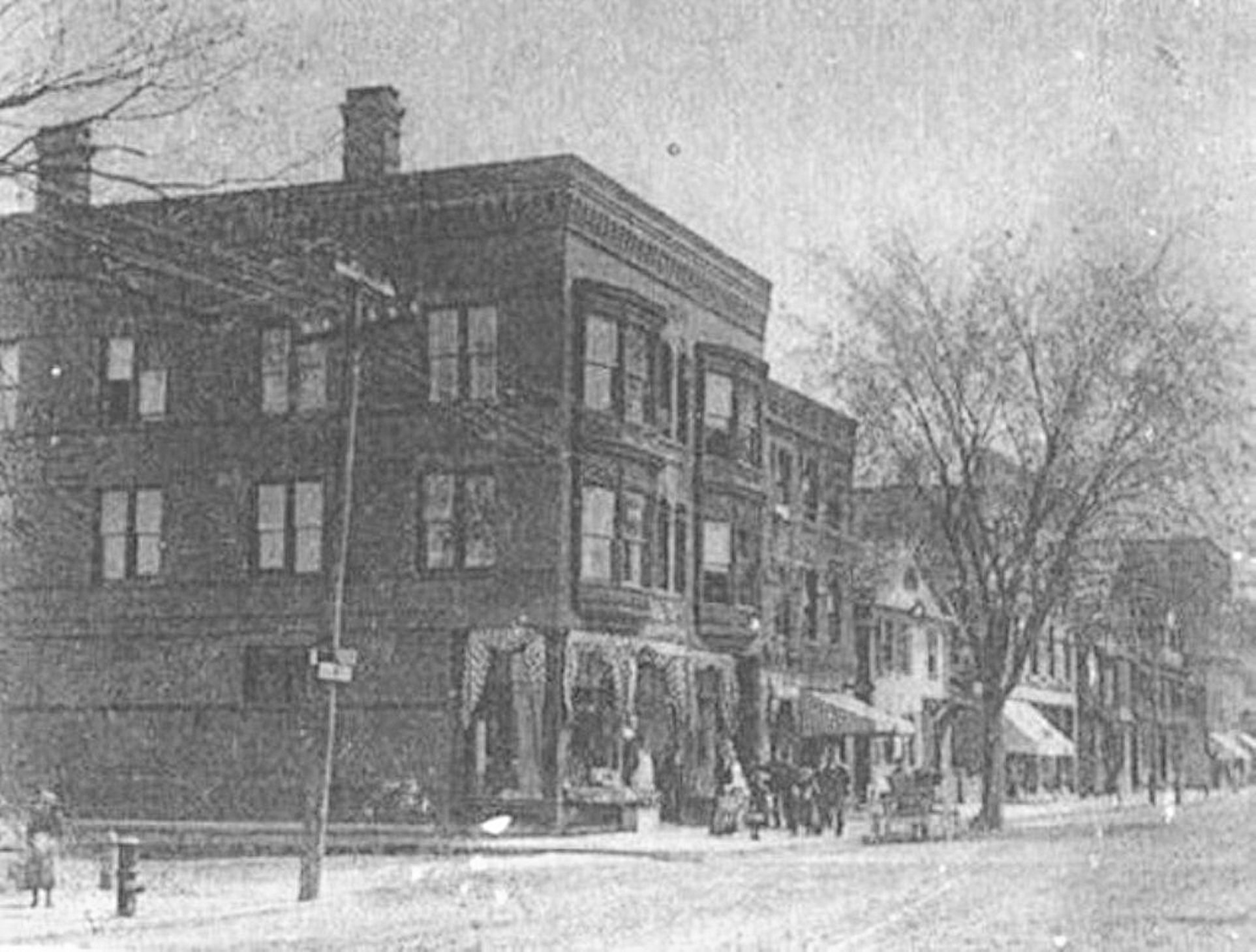
Hall Block - Sullivan Block
Corner of Main
and Walnut Streets. The Hall Block was the one time home
of The Victorian Lady. The Sullivan Block
is the building to the right of the Hall Block.
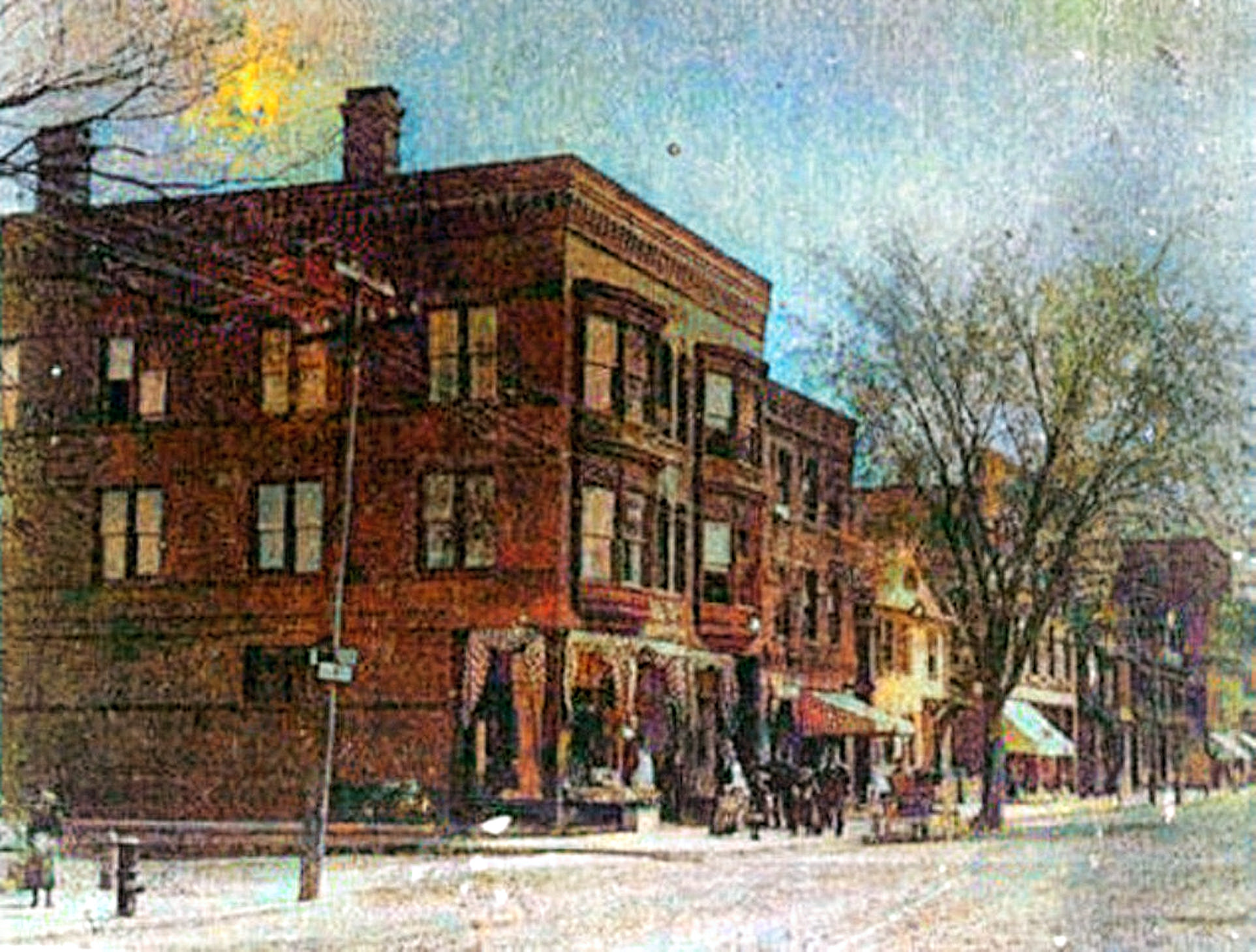 |
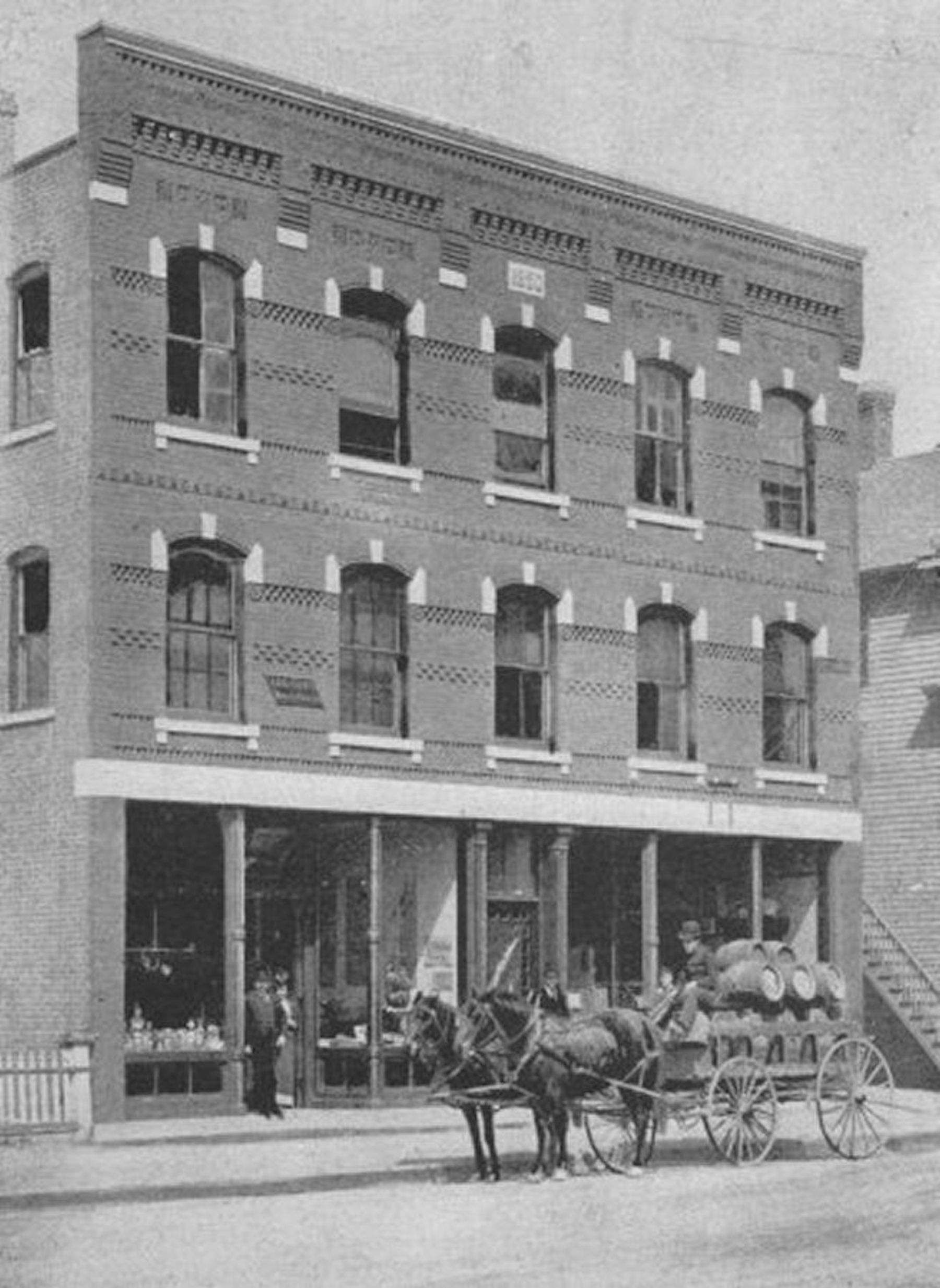
Thomas Haran's Block
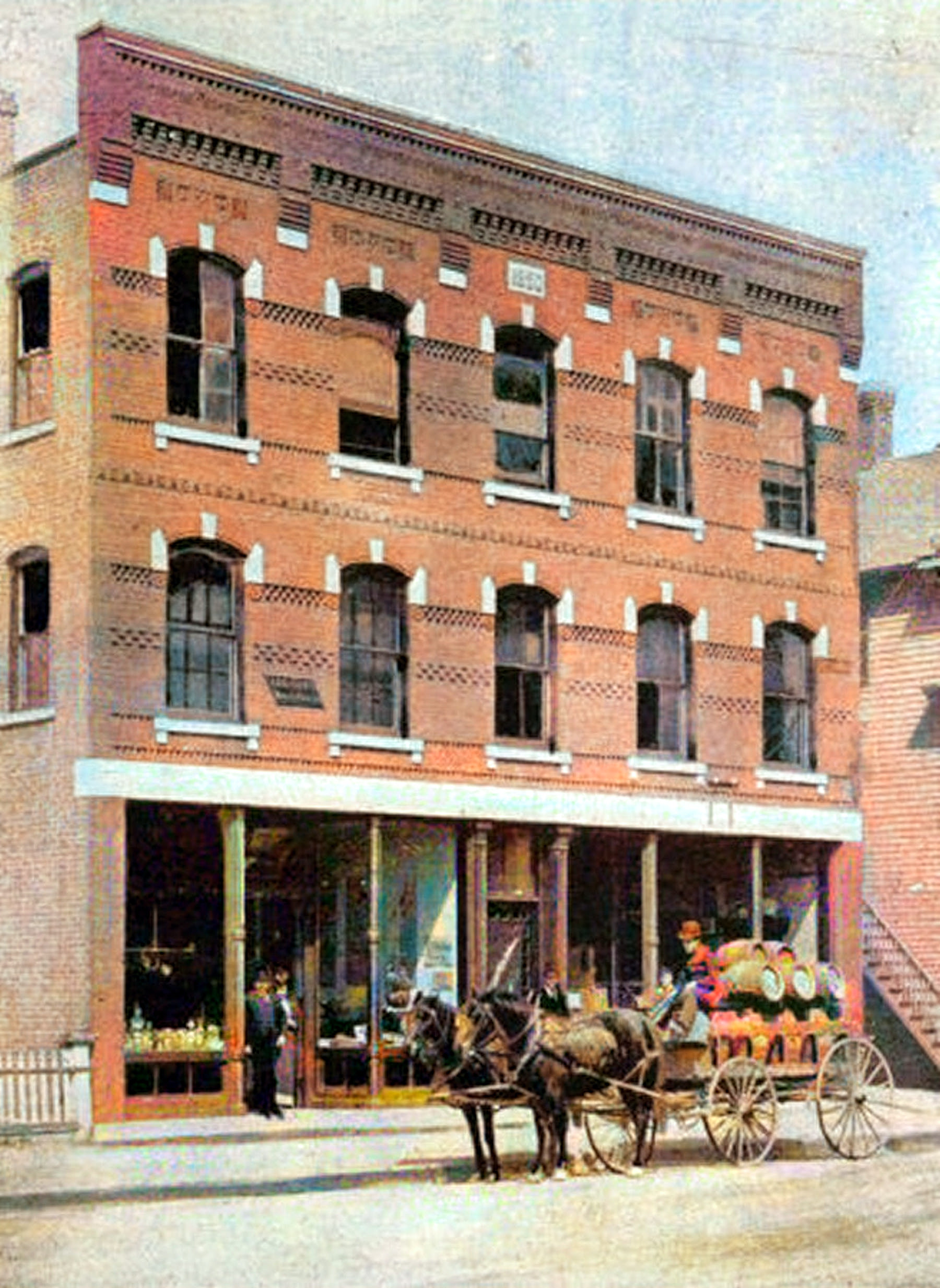
Thomas Haran’s block which housed his soda bottling
works at 857 Main Street. Haran used local spring water
to produce his soda. He also sold soda dispensing
machines throughout New England. Years later, Haran sold
the block to Timothy Sullivan who used it to house his
automobile dealership and garage
|
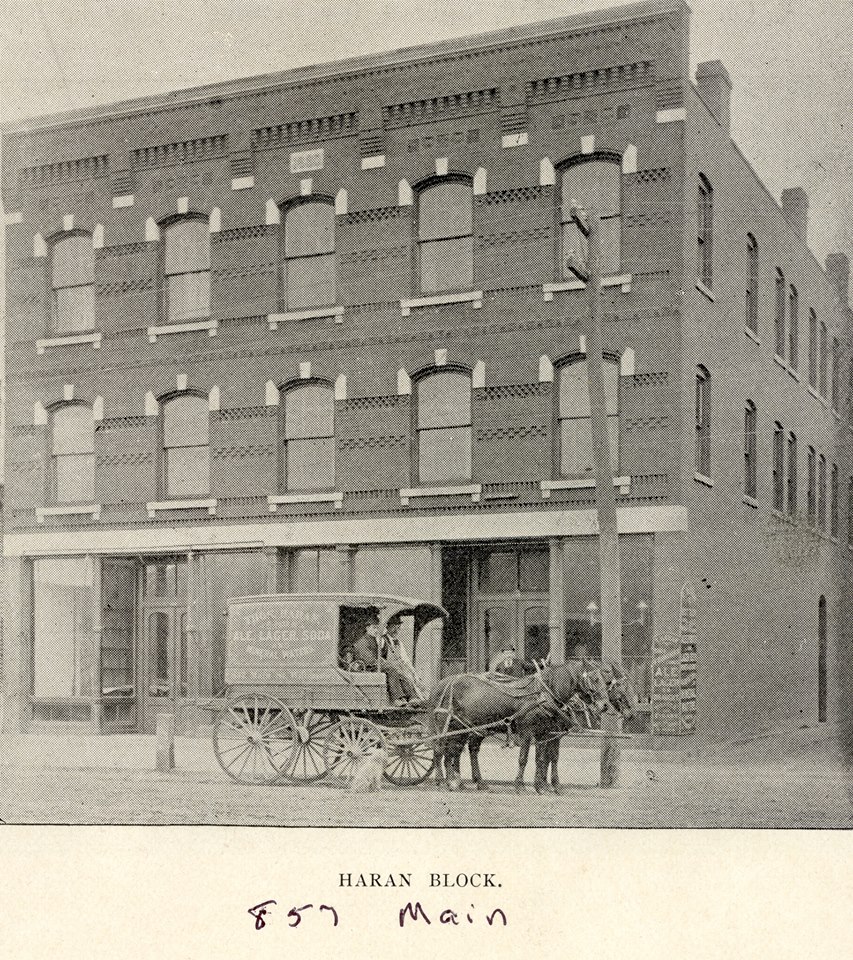
Haran Block
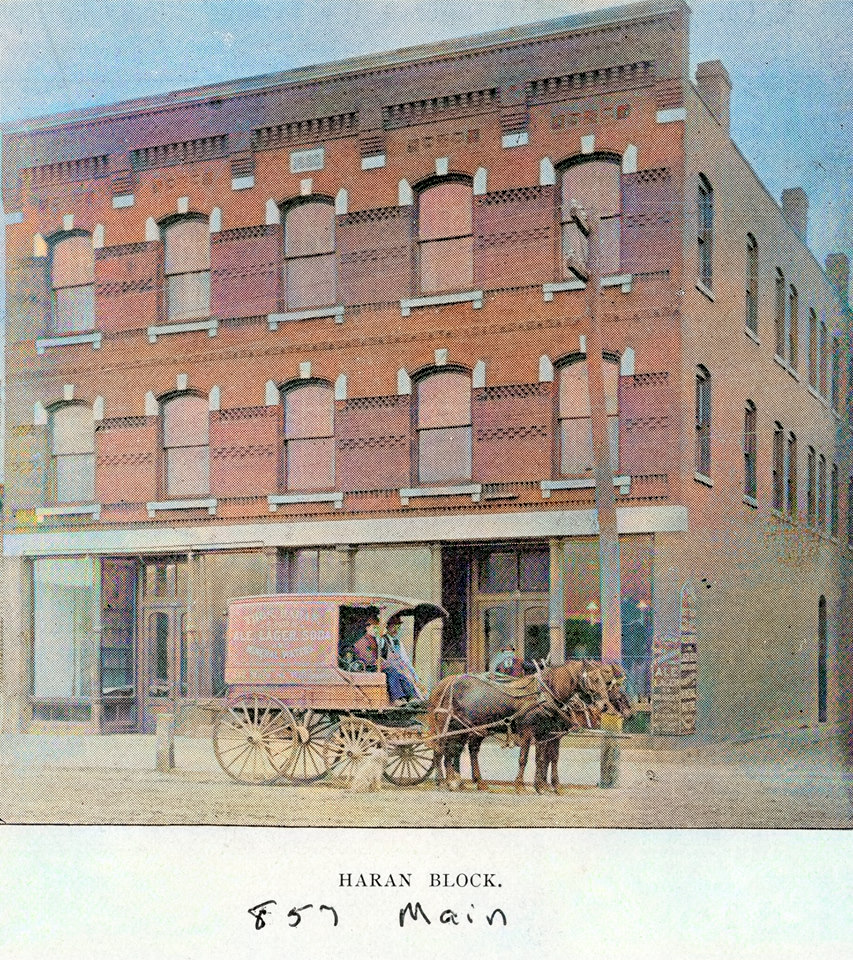 |
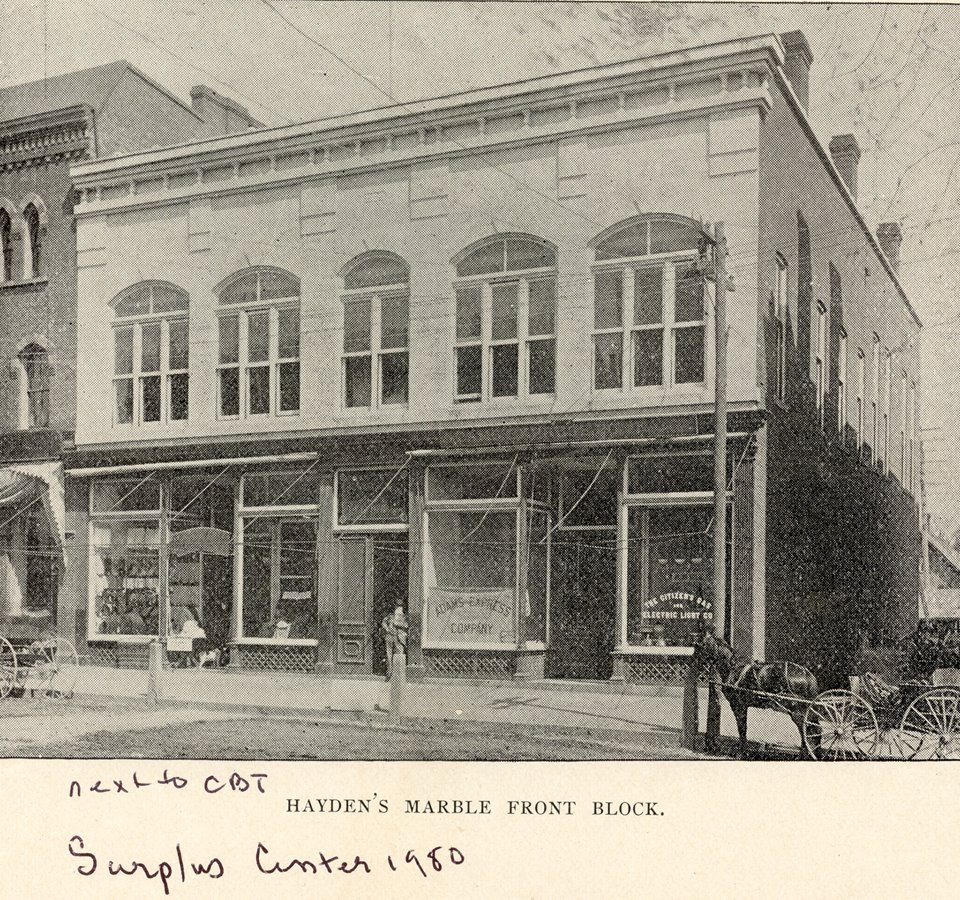
Hayden Block
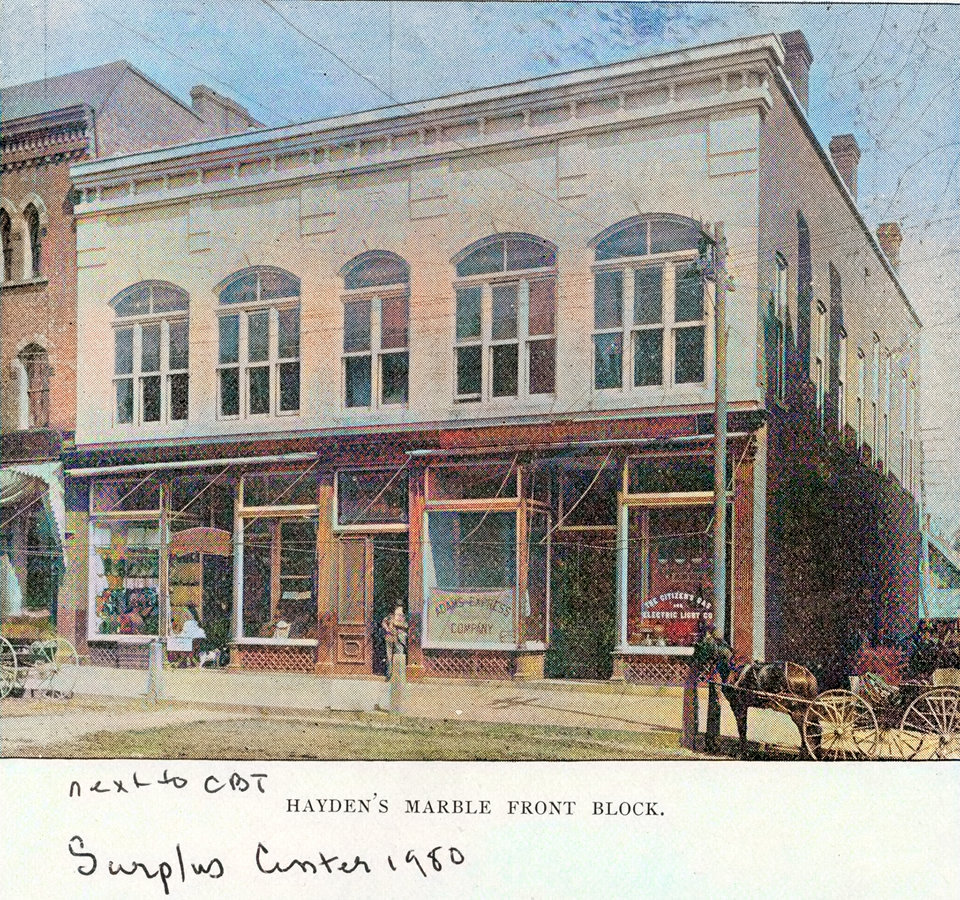
The Hayden Block was built in 1879 by Whiting Hayden.It
had a marble front and the city's first plate glass
windows.(Photo courtesy of Jamie Eves) |
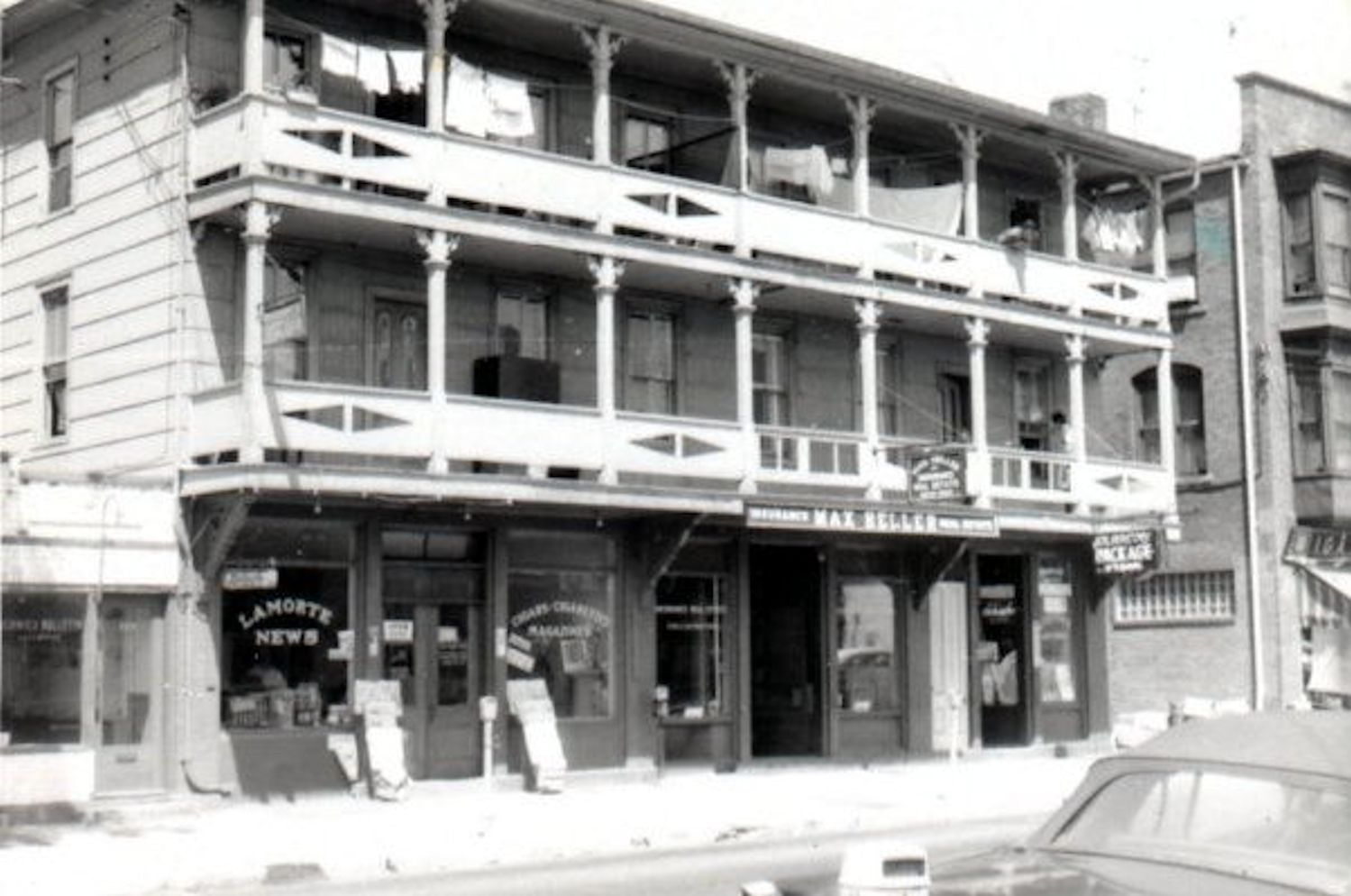
Heller Block
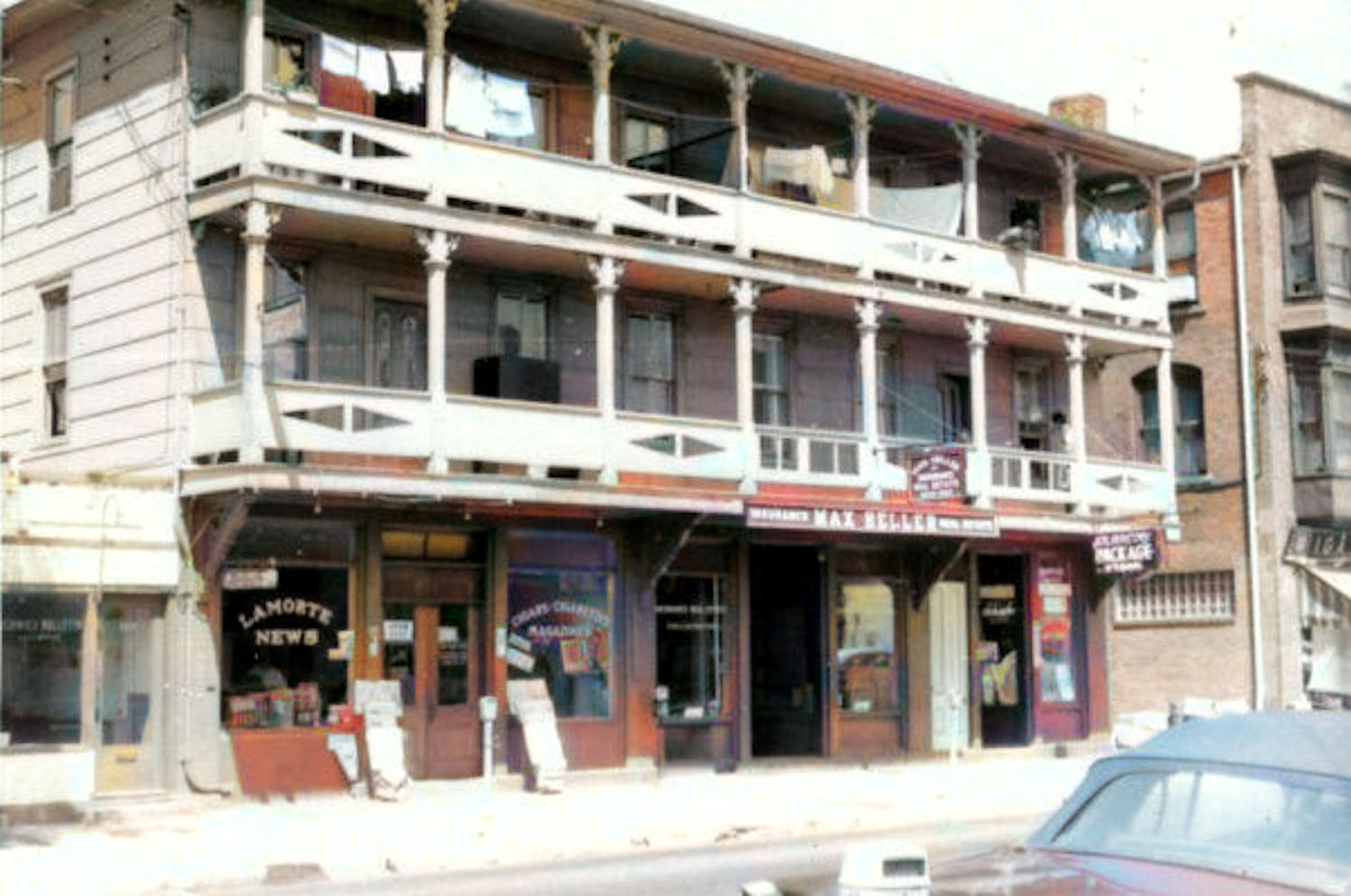 |
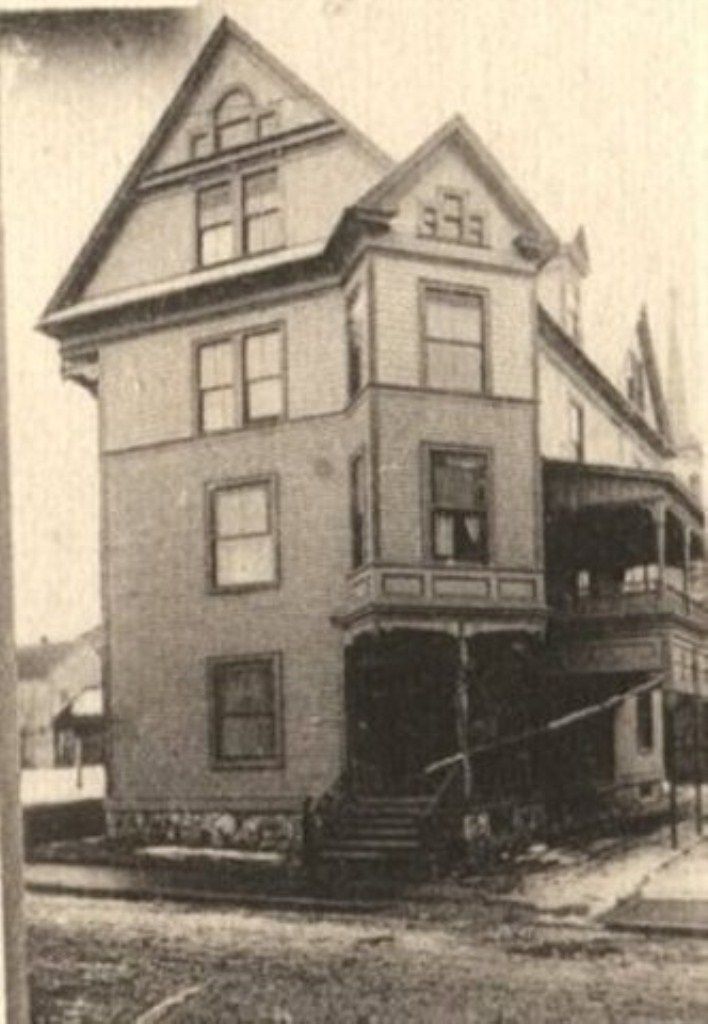
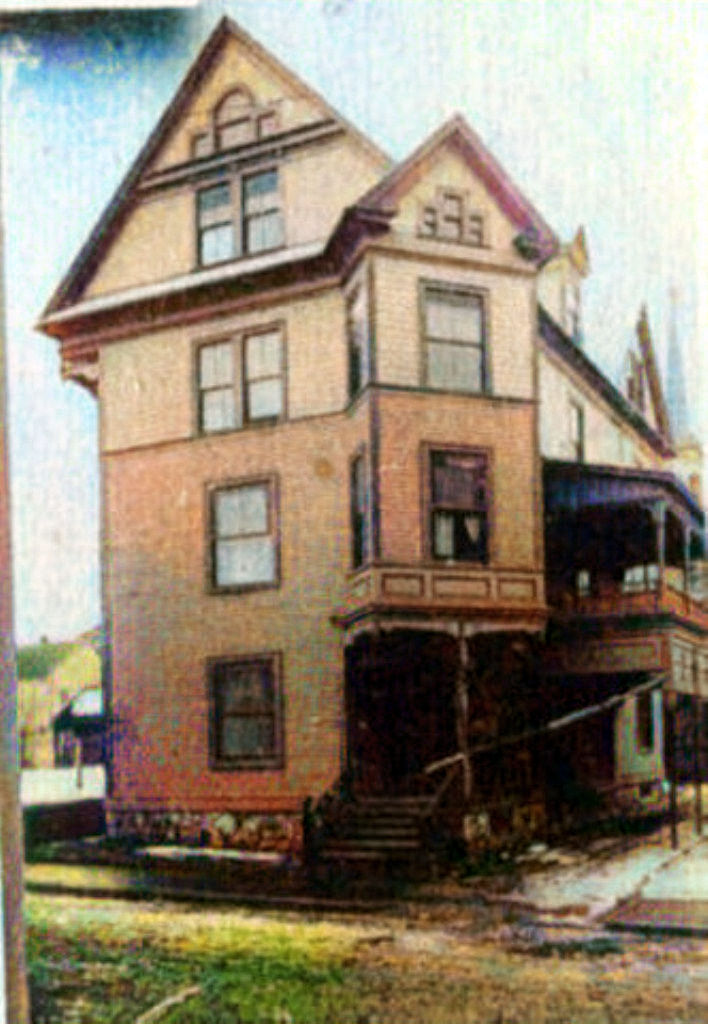
Hills Block
Dr. Thomas Morton Hills Hospital stood at 17 North
Street. It was built in the 1880s and demolished during
redevelopment in the early 1970s.
|
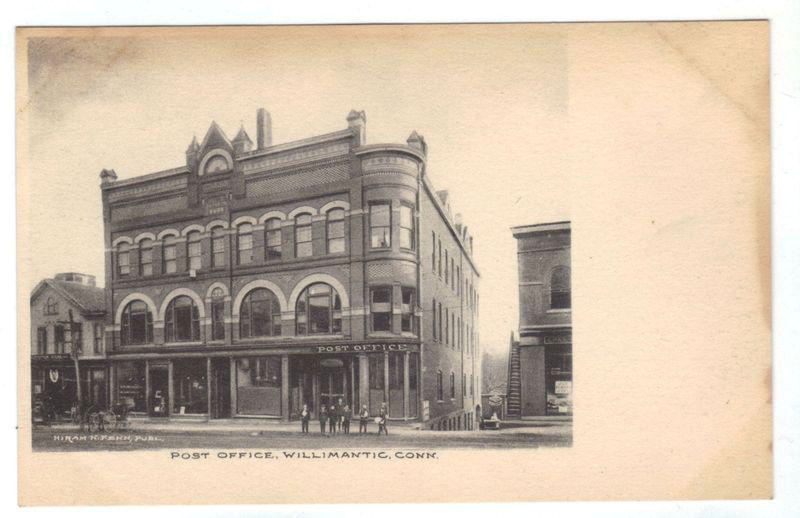
Jordan Block
Before the fire
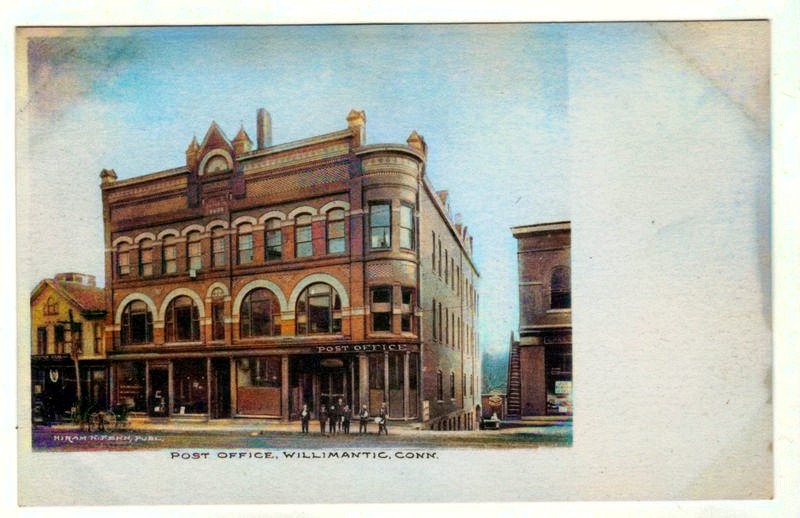 |
Jordan Block
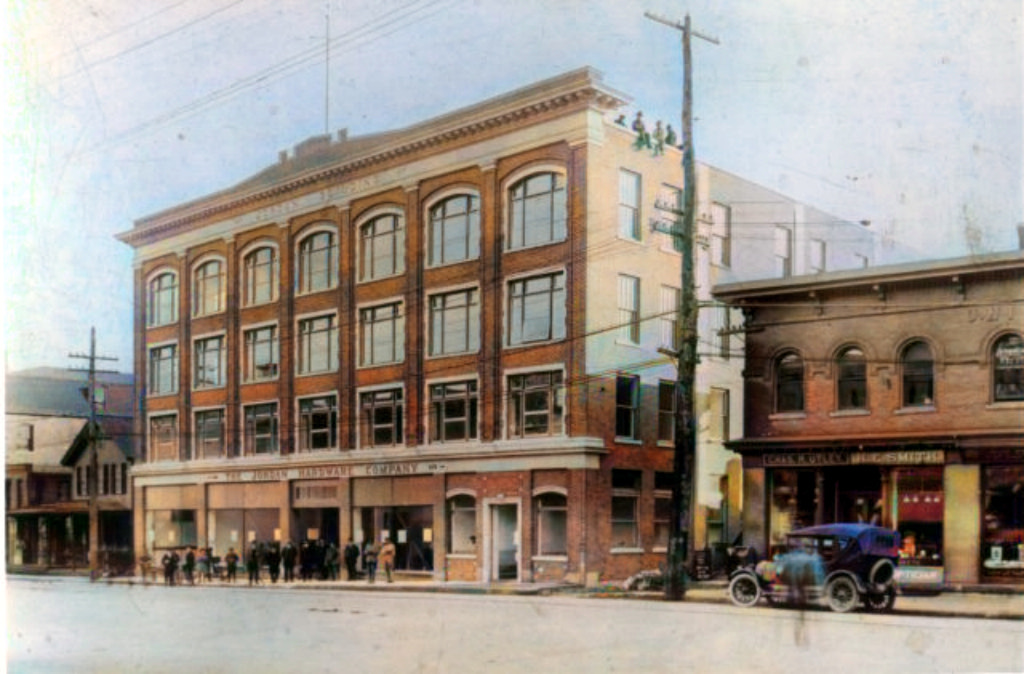
This is the Jordan
Block after it was completely rebuilt following the devastating
fire of 1916 |
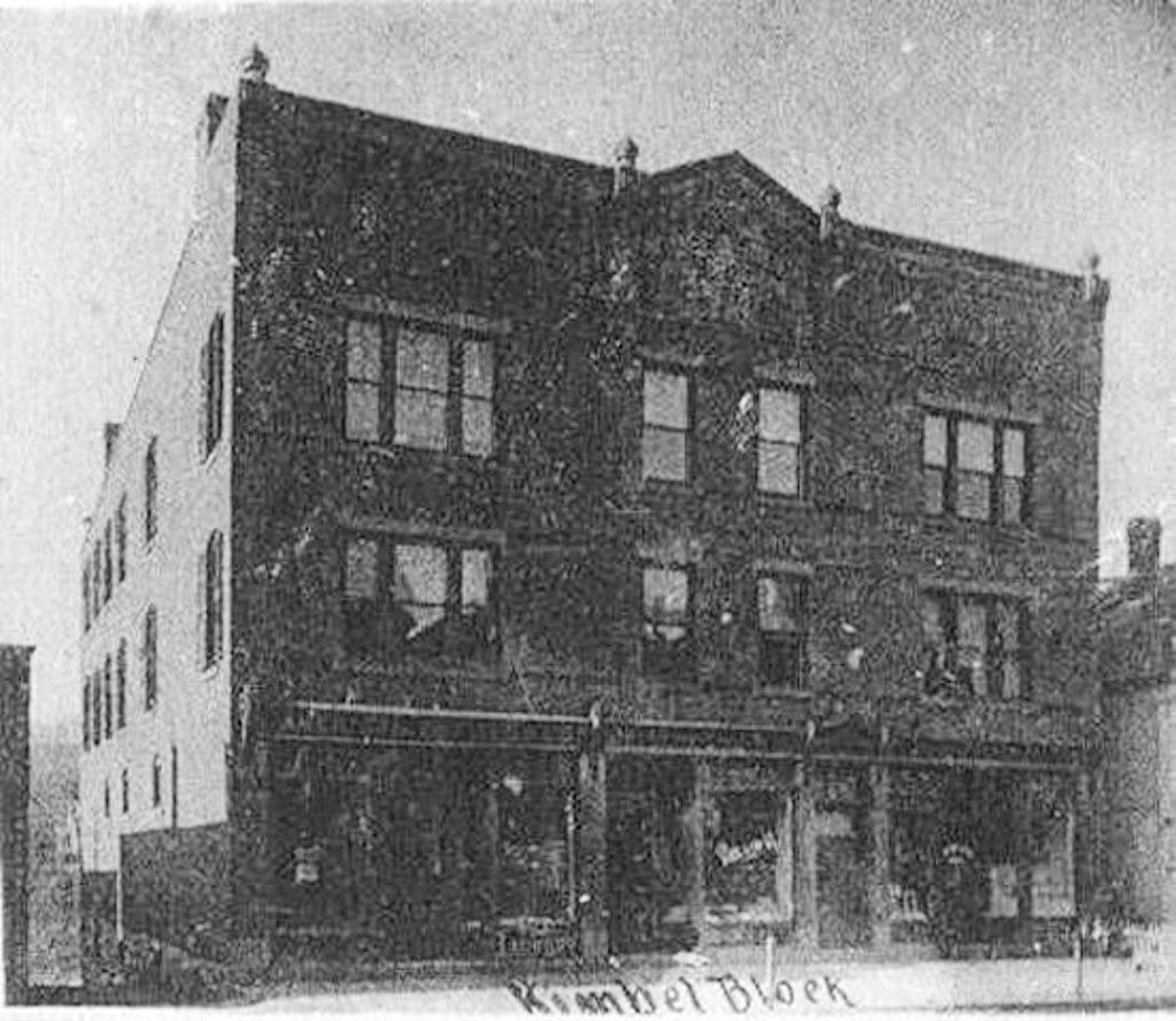
Kimbel Block
Willimantic businessman Stephen Kimbel
died at age seventy and left a considerable sum of money
to his daughter, Martha Kimbel Chapman. Mrs. Chapman
used the money to build one of Main Street’s earliest
all brick buildings and, in honor of her father, named
it “The Kimbel Block”. Over the years, the block became
home to several occupants such as the Willimantic
Lighting Company, the Singer Sewing Machine
Company and the Department of Motor Vehicles
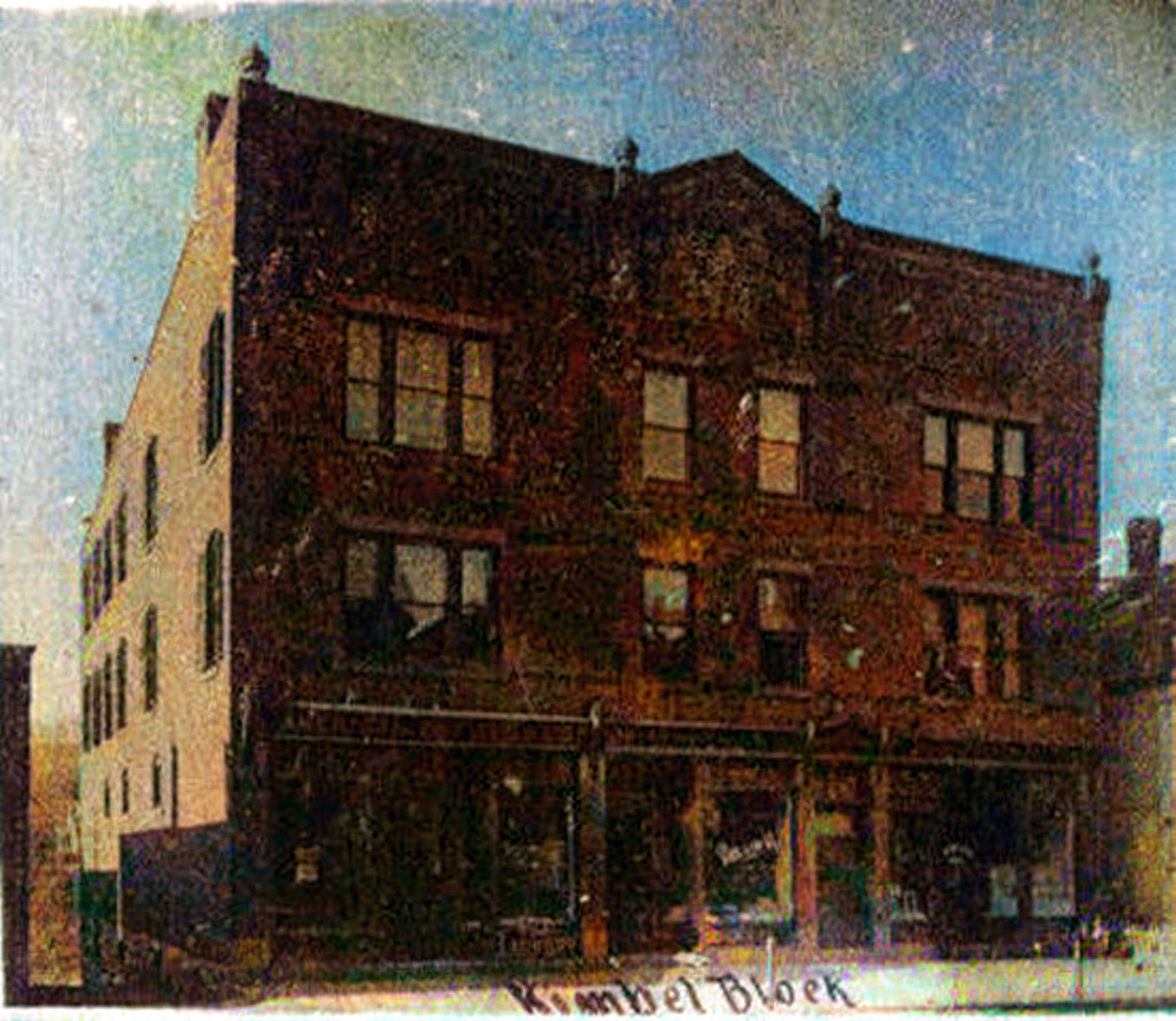 |
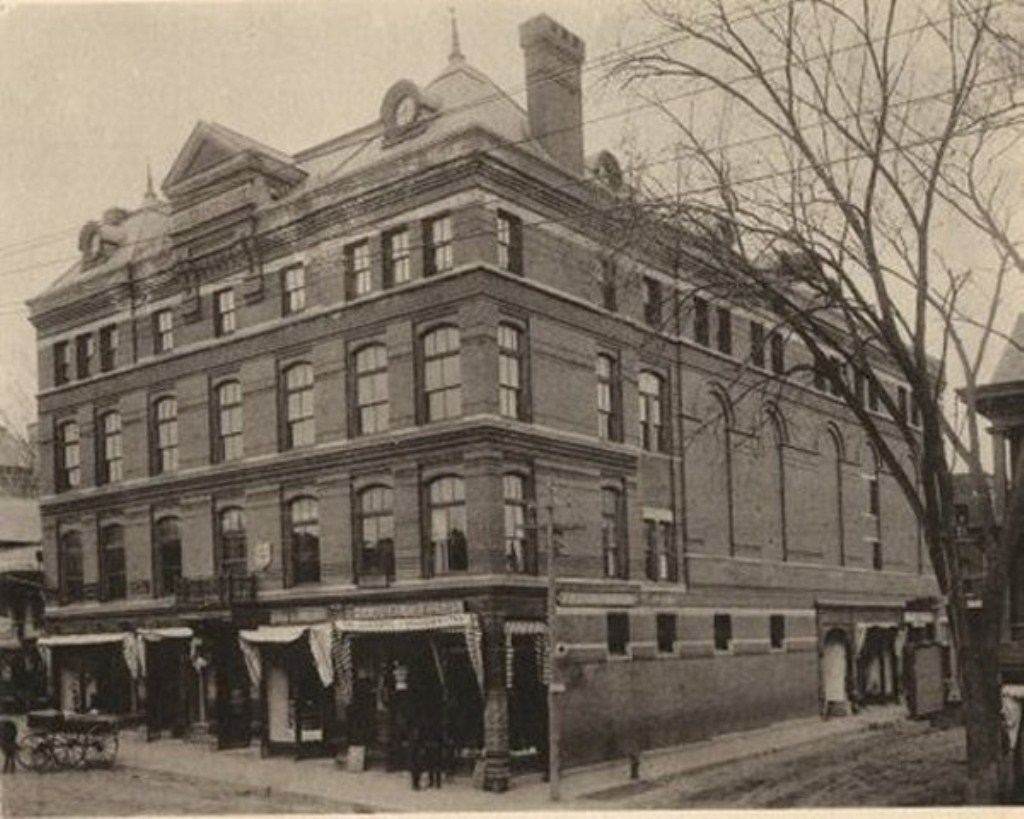
Loomer Opera House
The
Loomer Block dominated Main St. for several decades. The
Loomer Opera House was considered to be the finest
theater between Hartford and Providence. It seated 1,200
people in lush surroundings. Many famous vaudeville acts
played there, including Buffalo Bill Cody, Charlie
Chaplin and Stan Laurel. Lumber magnate Silas Loomer
built it in 1879. Movies were shown there in the 1920s,
but it could not compete with the Capitol Cinema. The
Opera House was demolished in 1940 and replaced by a new
Woolworth's store.The block also housed several other
businesses including a pharmacy and a pool hall. |
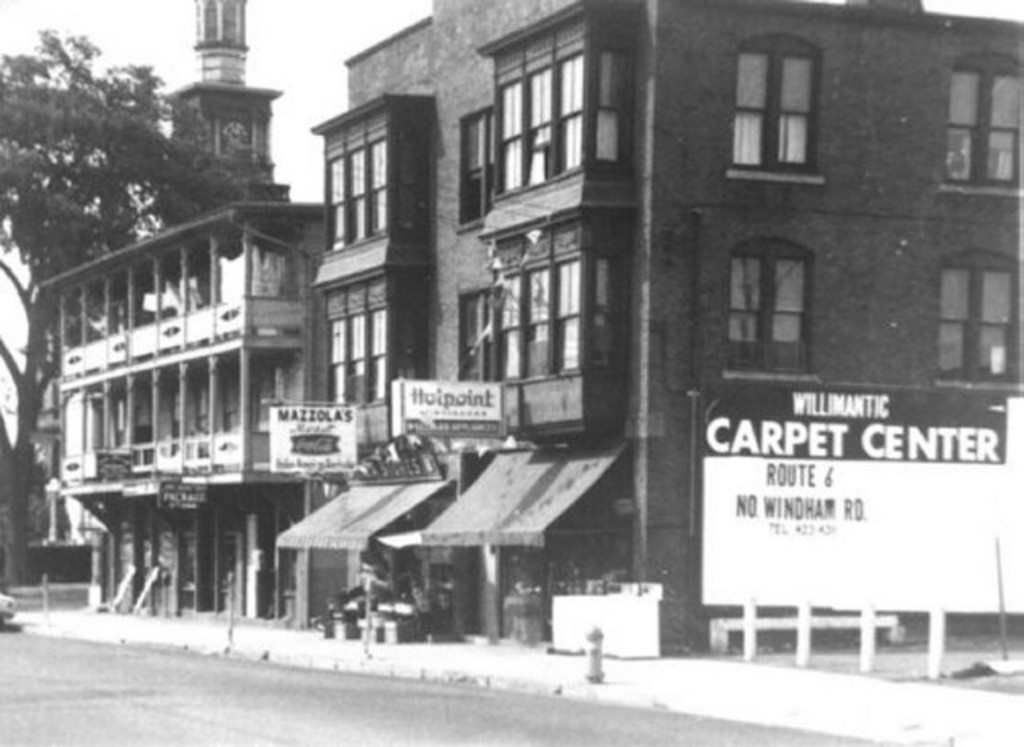
The Mazzola Block and the
Heller Block
The Mazzola Block and the Heller Block are
seen in this 1964 view of Main Street. Tin merchant Levi
Frink built the Heller Block in the 1860s. It was
demolished in 1970. The Mazzola Block was originally
known as "The Gelinas Block" as well as the Flaherty
Block when it was built in 1892
by Daniel Flaherty. It housed saloons and grocery
stores until Prohibition. After World War One it became
the city's first Italian-American grocery store.
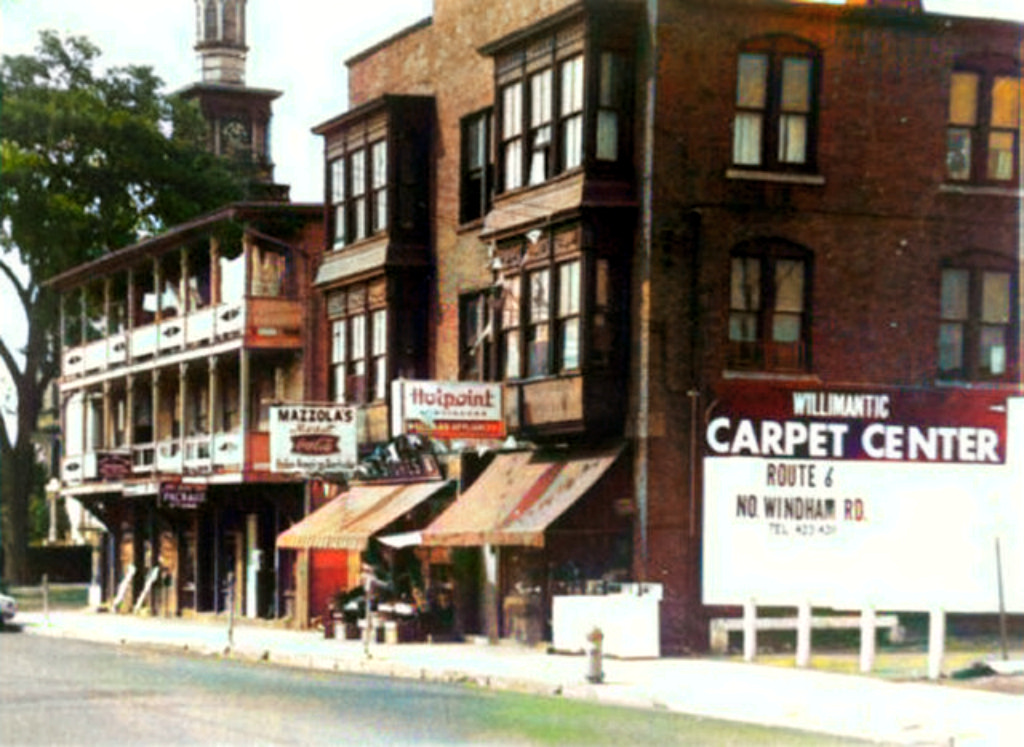 |
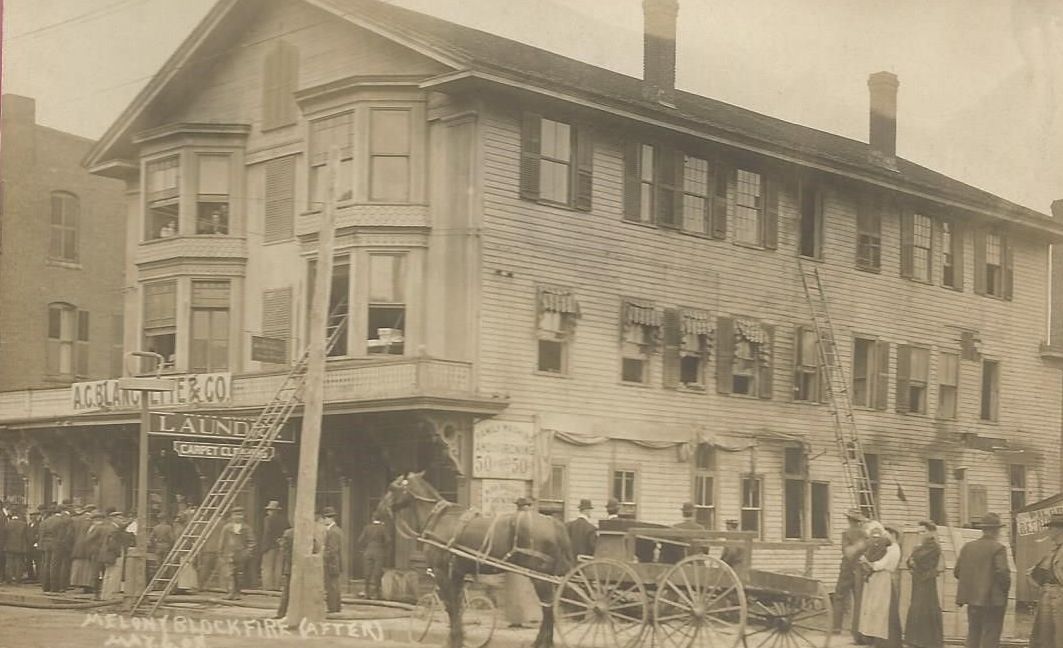
Melony Block
The photo was taken during the 1908 fire that
greatly affected the Maverick Laundry and A.C.
Blanchette Furniture Store. Insurance covered almost all
the losses and the building was quickly fixed up.
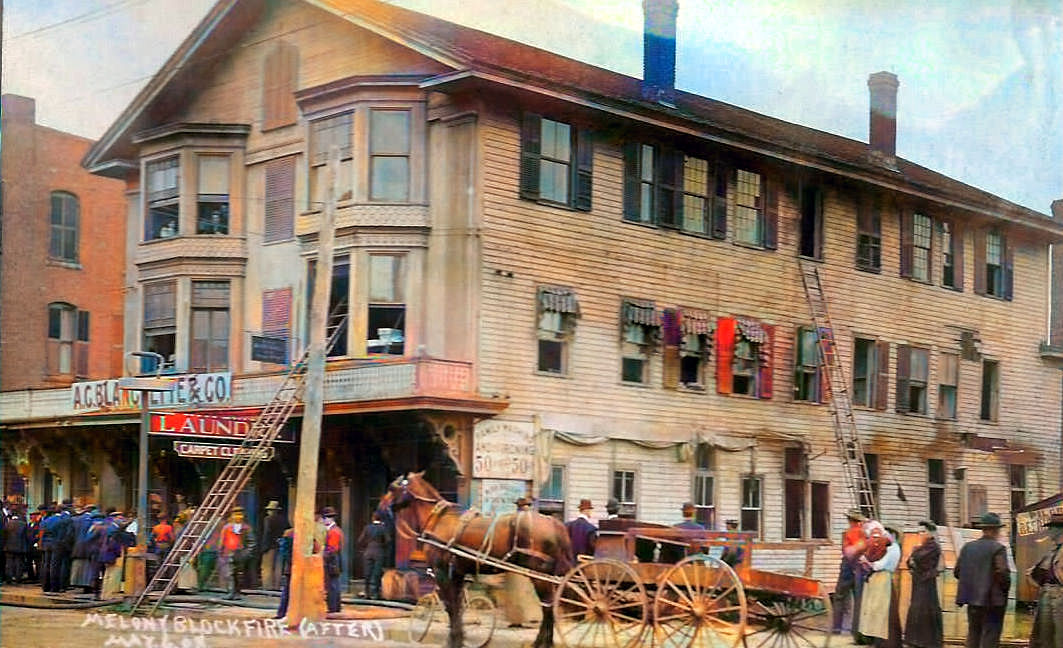 |
|
|
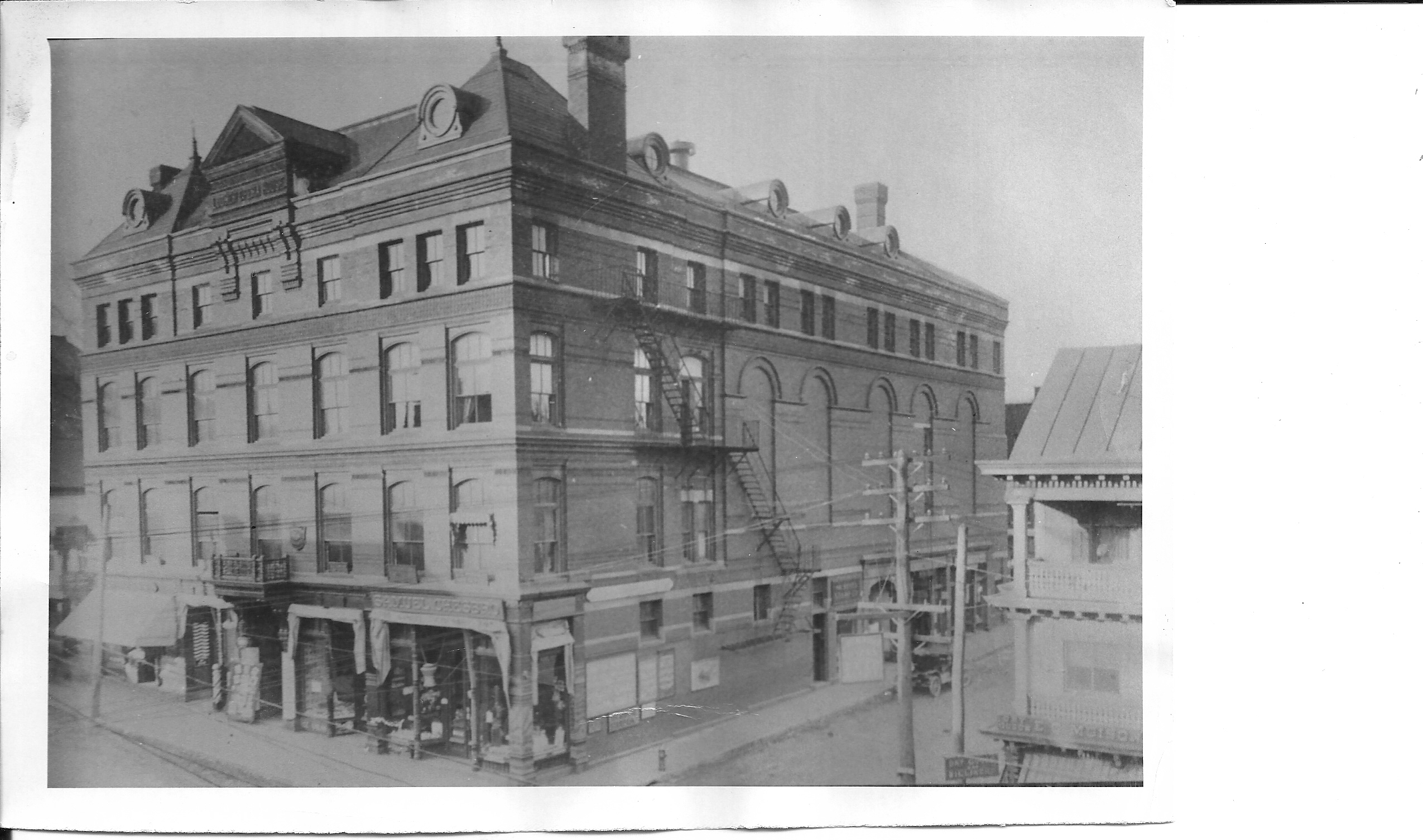
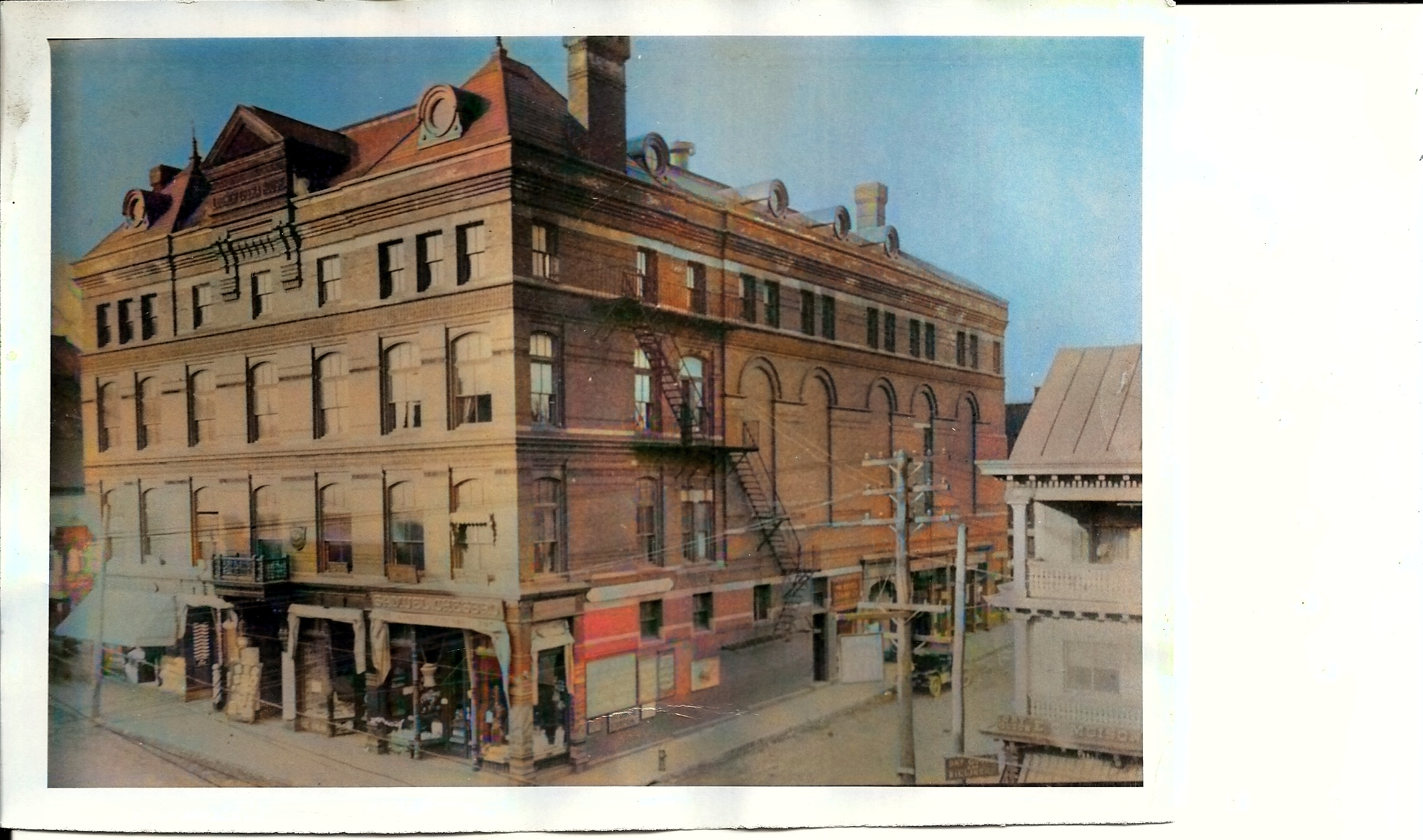 |
|
|
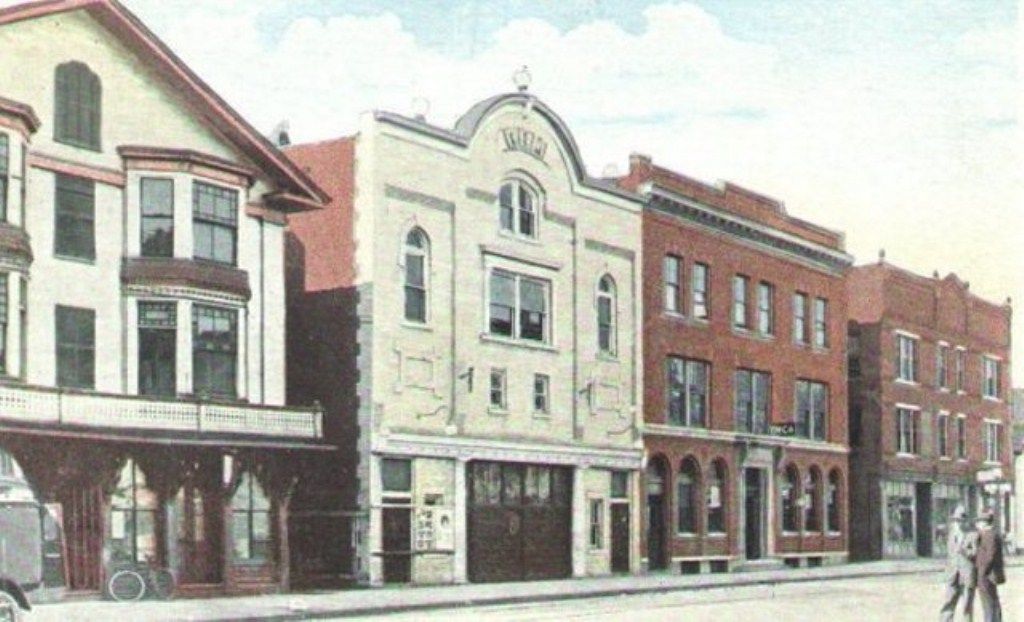
Melony, Gem, YMCA and Kimbel Blocks
The Melony Block (left) has been repaired after the
fire. To the right are the Gem Theater, the YMCA and the
Kimbel Block. |
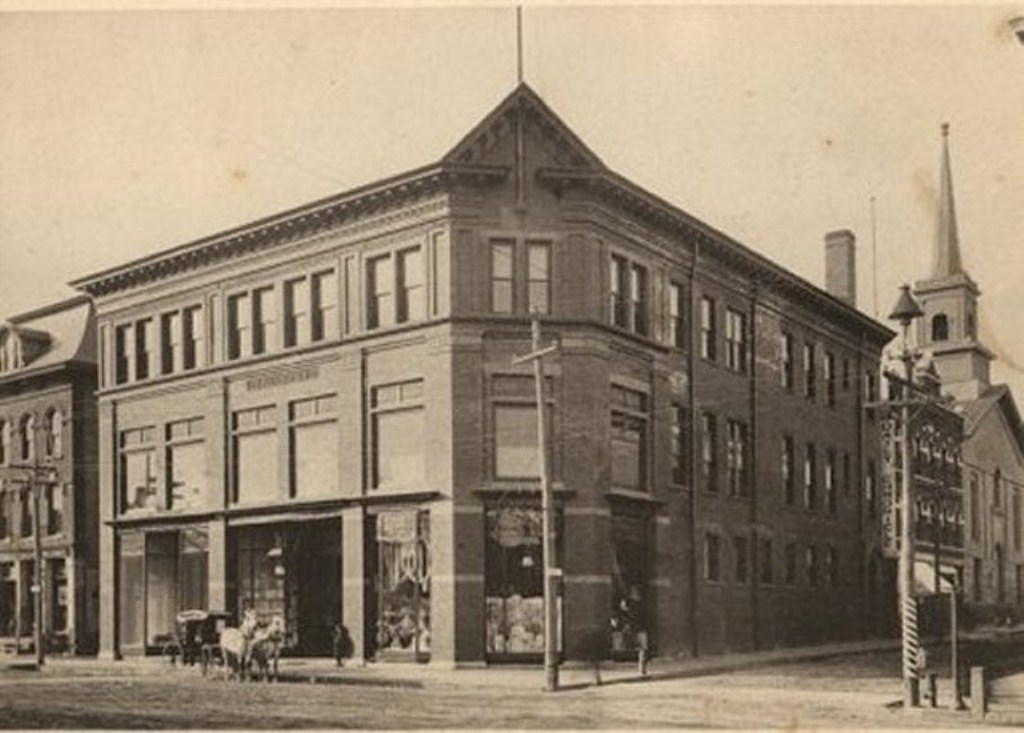
Murray Block
Later known as Hurley's , but here it is
pictured just two years after it was built on the site
of the old Brainerd Hotel. It was built by Scotsman Hugh
Murray in 1892, and known by several generations as the
Murray Block, or Murray's Boston Store.
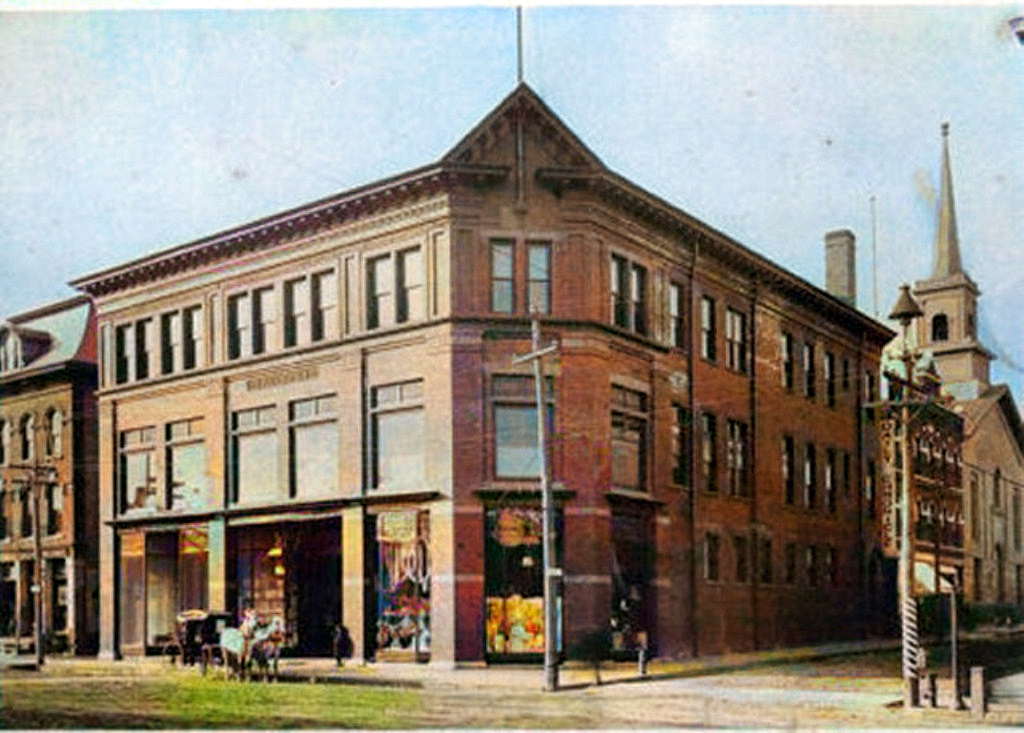 |
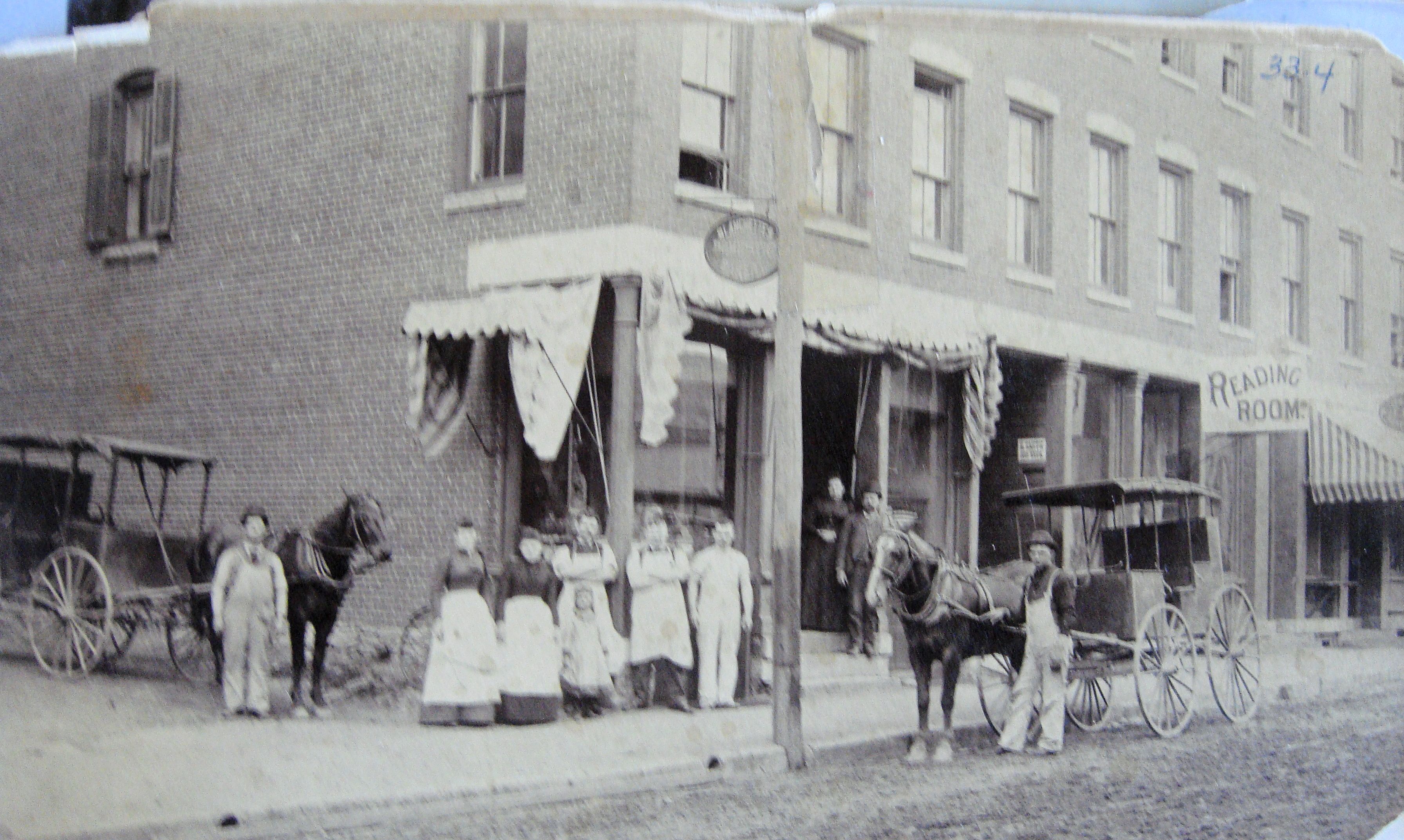
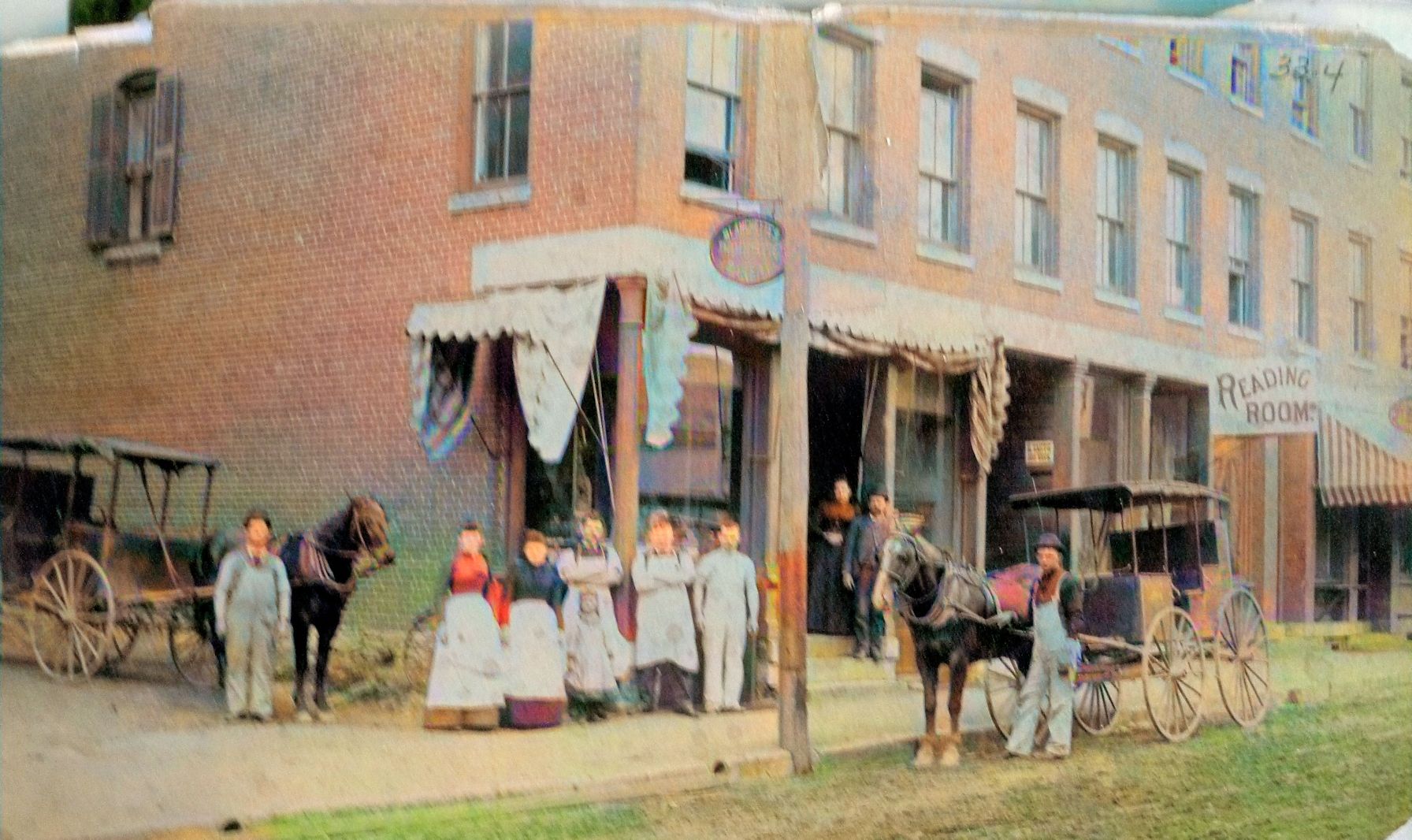
Pomeroy Block - Church
Street
The Pomeroy Block sat at 44-52 Church Street and
was razed during the redevelopment period. In its
earliest days, it was the home of the Republican
Headquarters, the Blanchette and Hoffman Bakery and the
Burnham and Keegan Meat Market. In its final years,
Brennan’s Electrical, The Windham Electric Company and
Noheimer’s Market were located there |
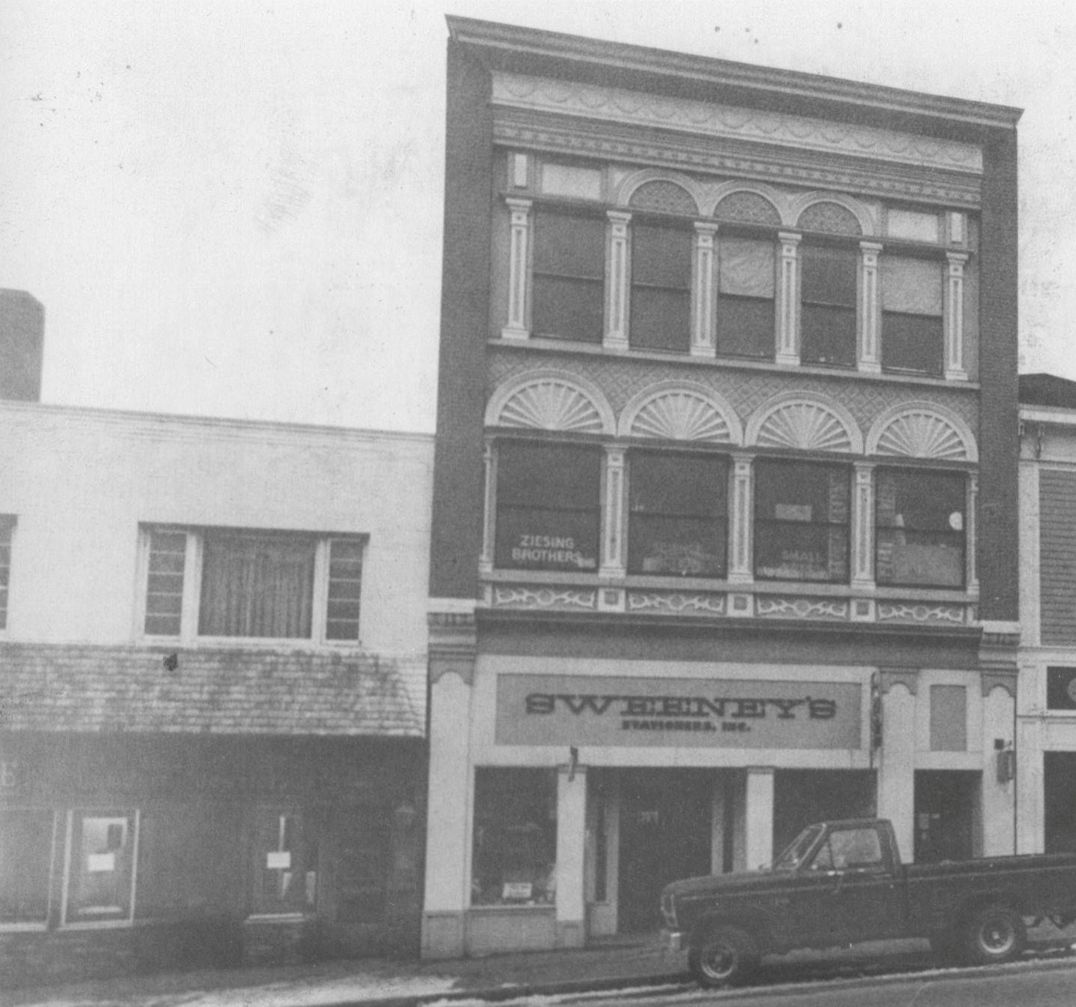
Sadd and McAvoy Blocks
The McAvoy Block is on the left, the Sadd Block on the
right.
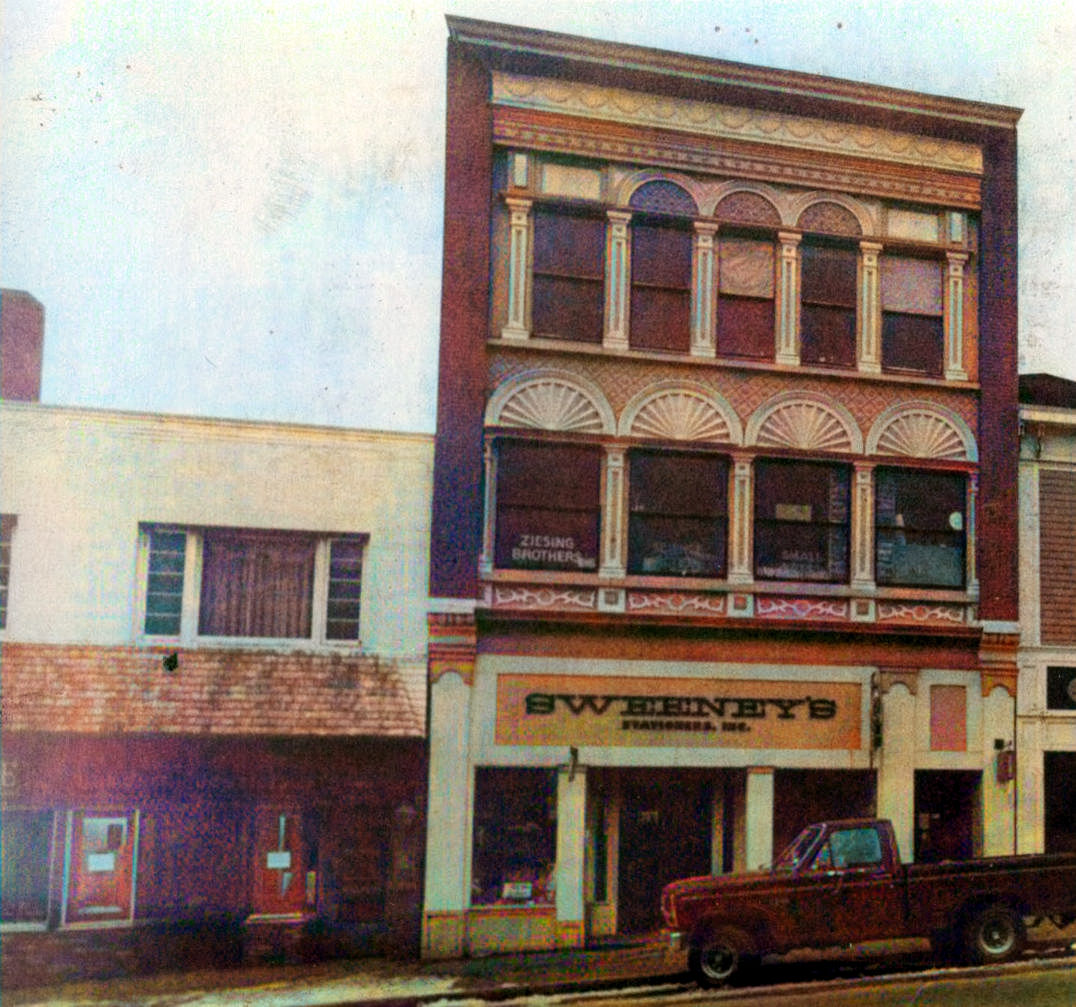 |
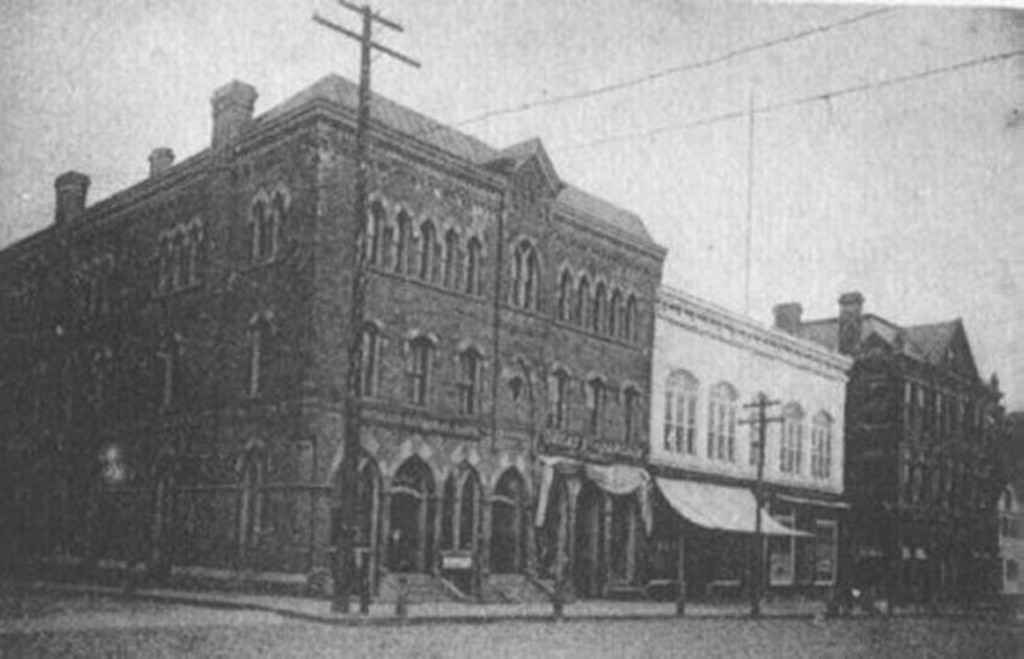
Savings Institute
The
Willimantic Savings Institute building was the city's first brick
block, built in 1869. It was also the first home of the
Willimantic Normal School in 1892 -- the teacher
training school that has evolved into Eastern
Connecticut State University |
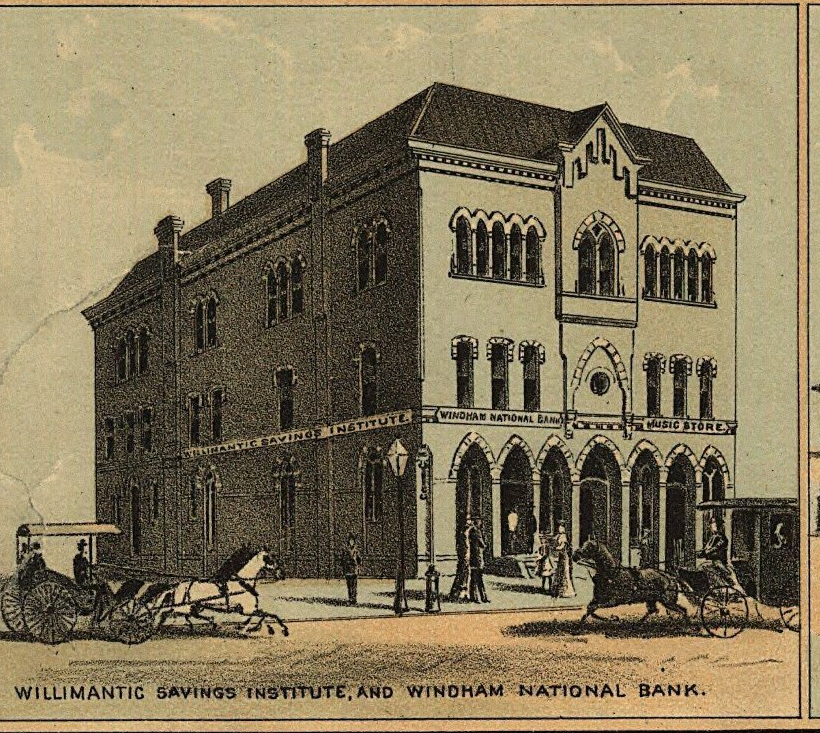
Savings Institute Block
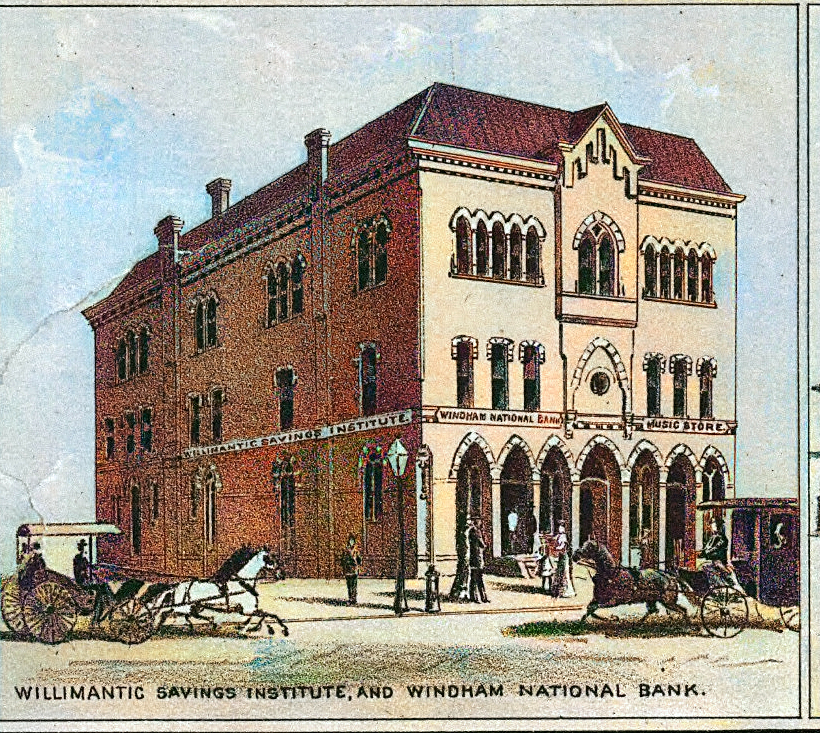 |
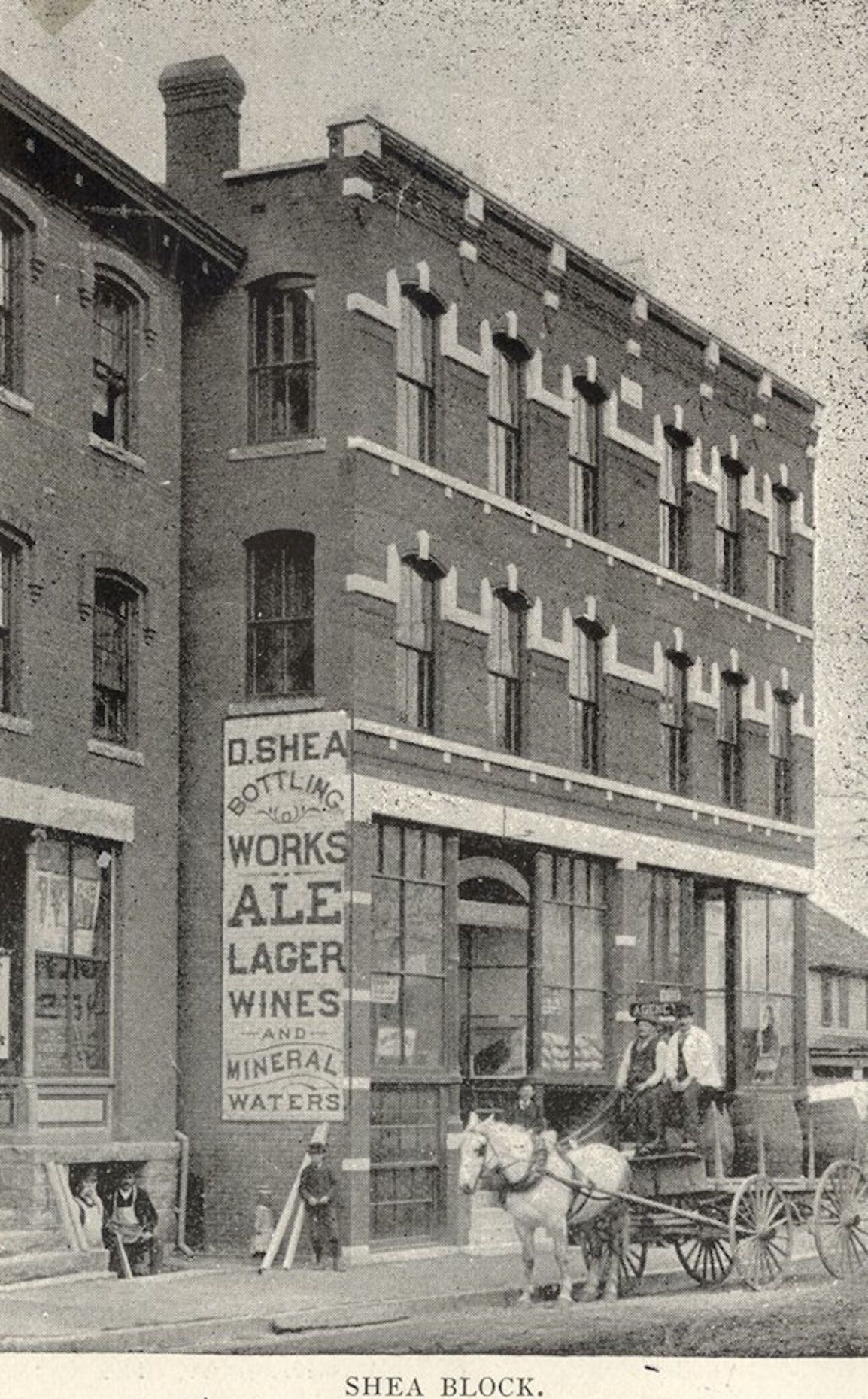 Shea Block Shea Block
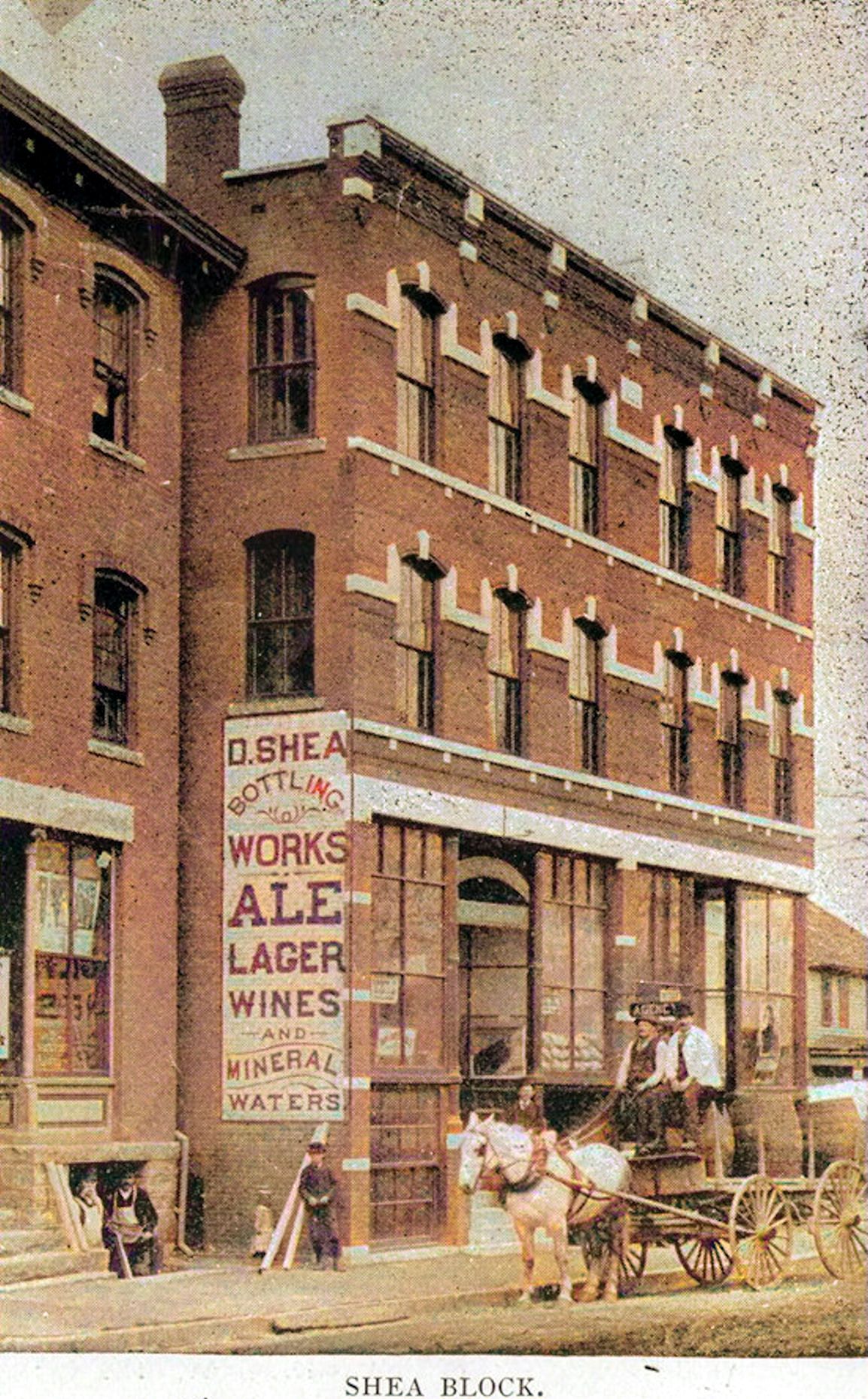
|
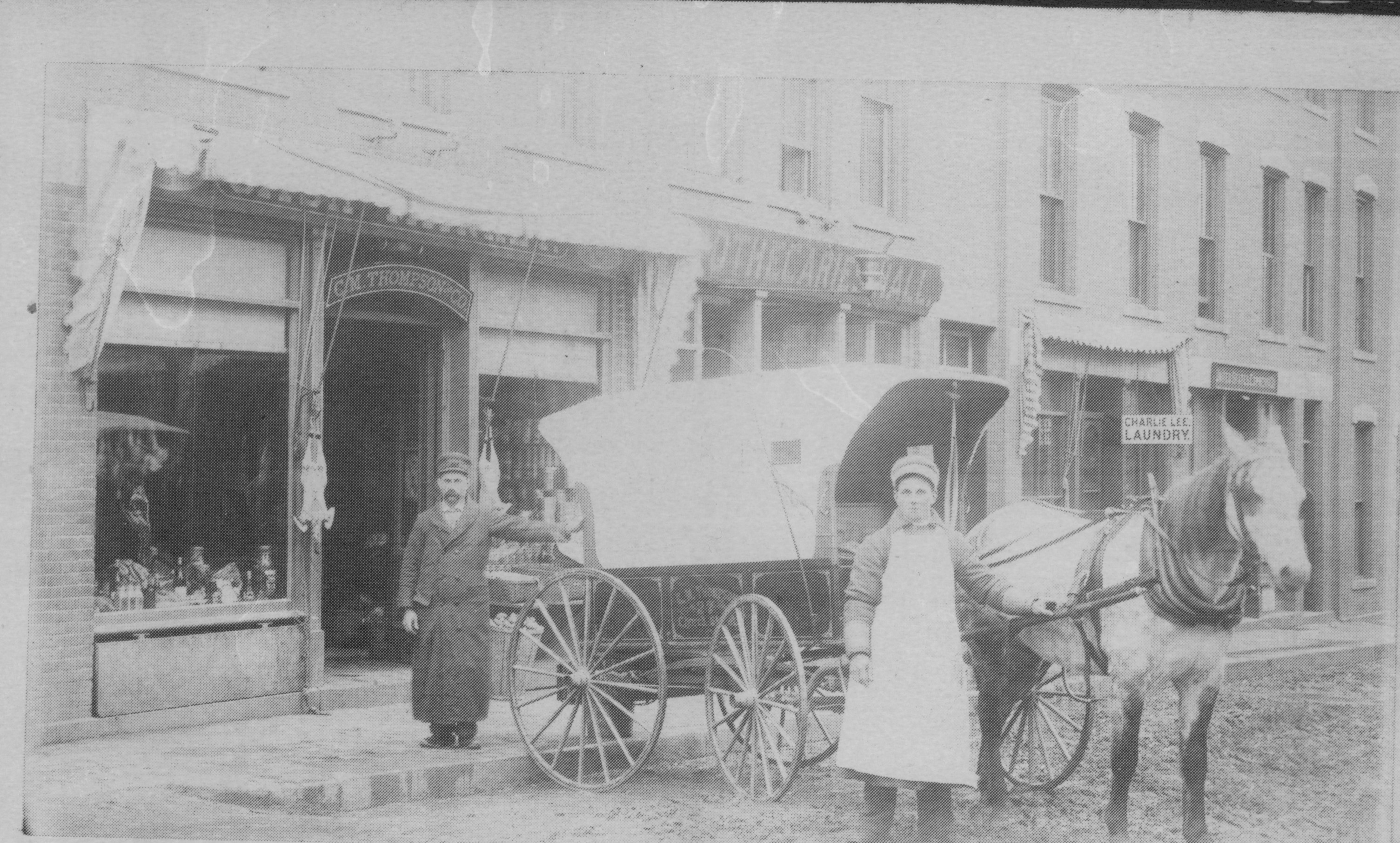
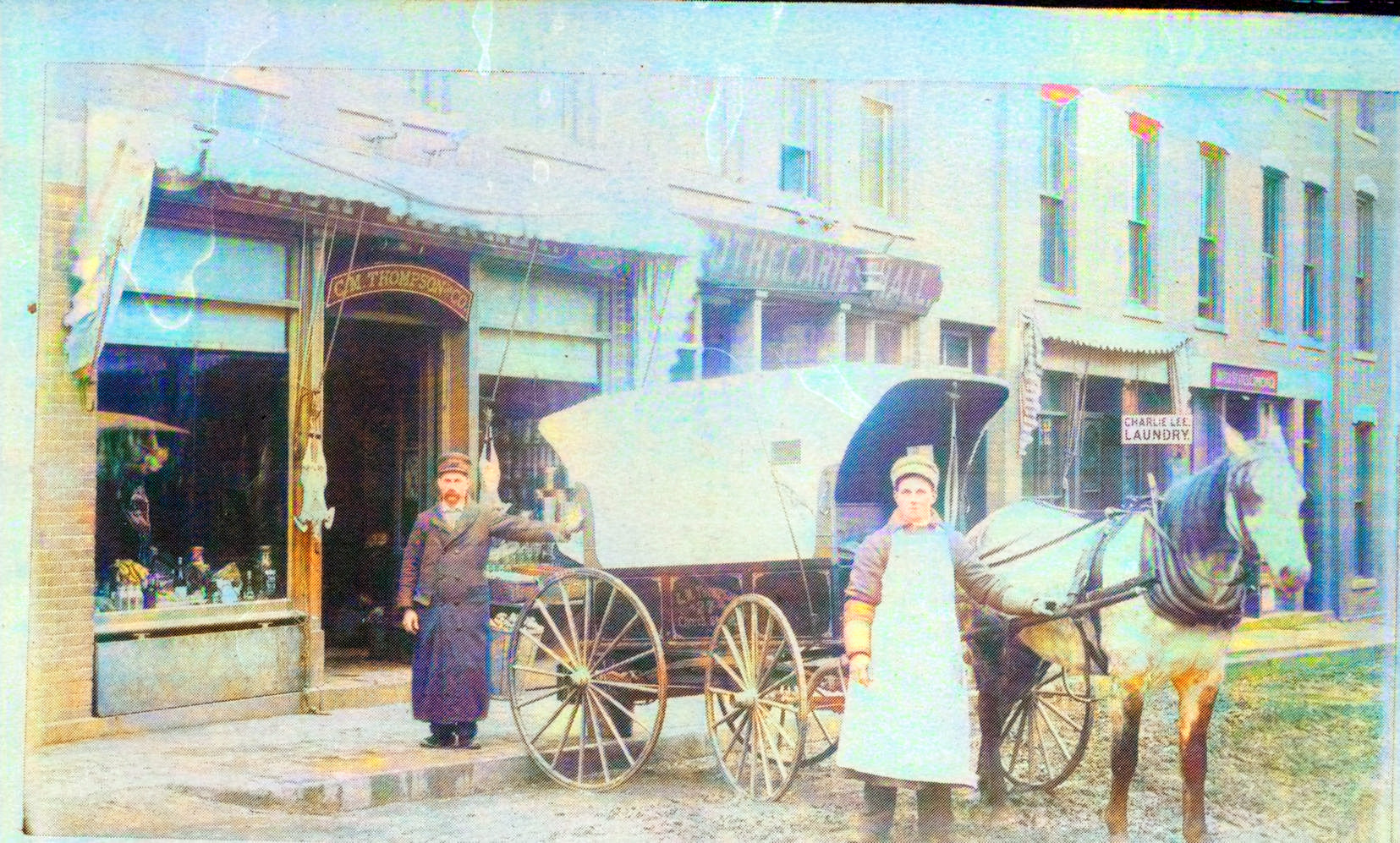 |
.
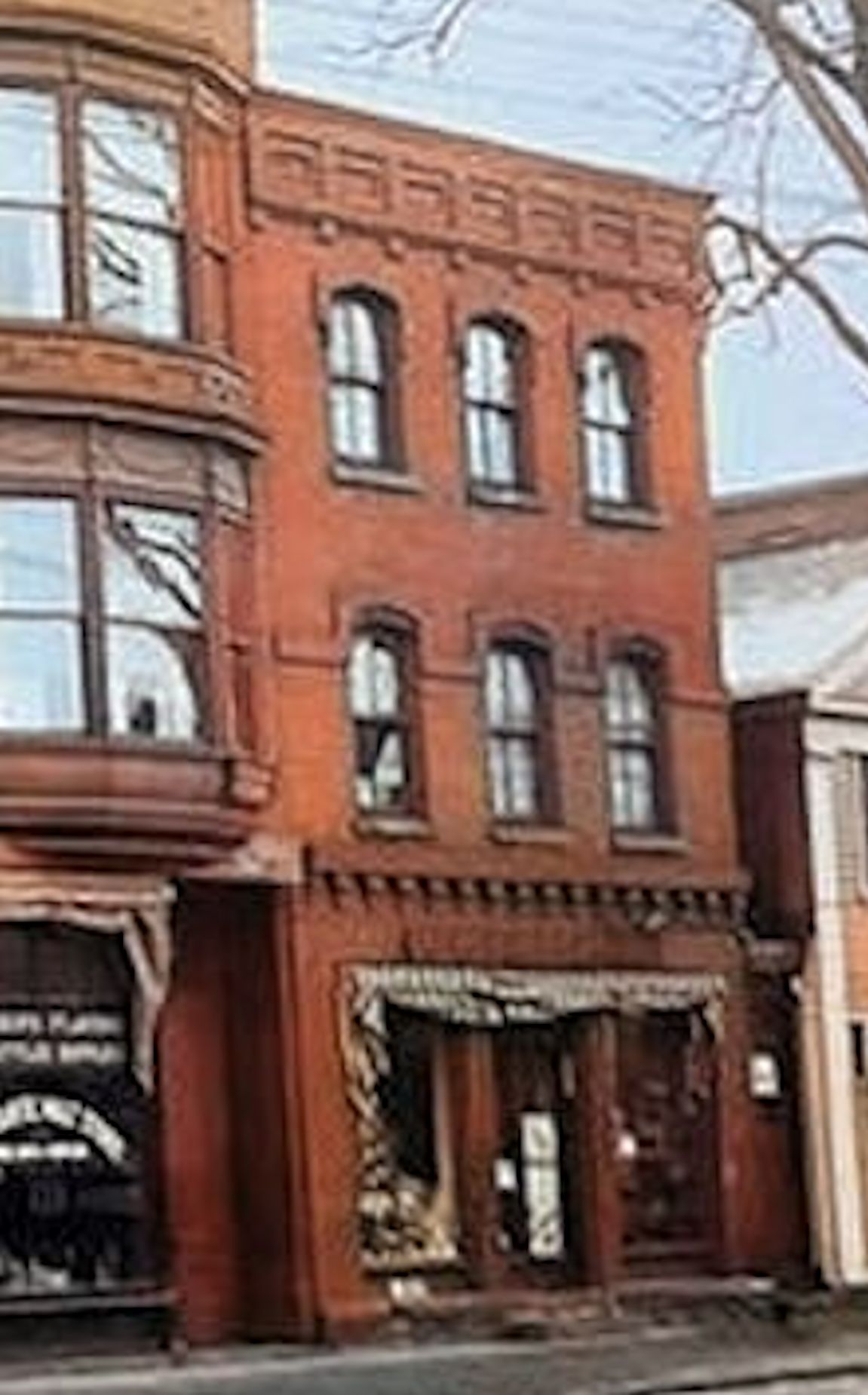
Sullivan Block
|
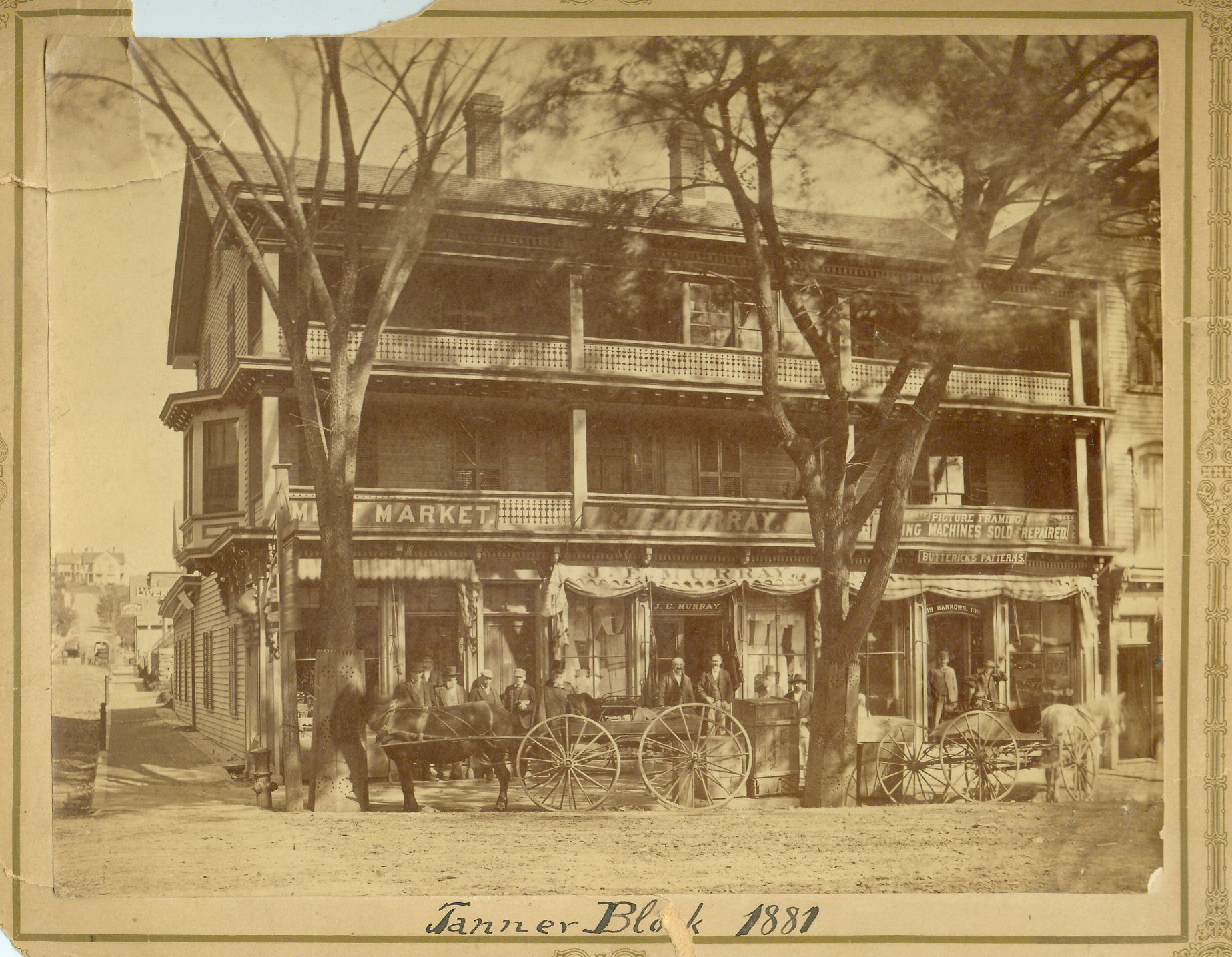
The Tanner Block
Northeast
corner of Main and North Streets
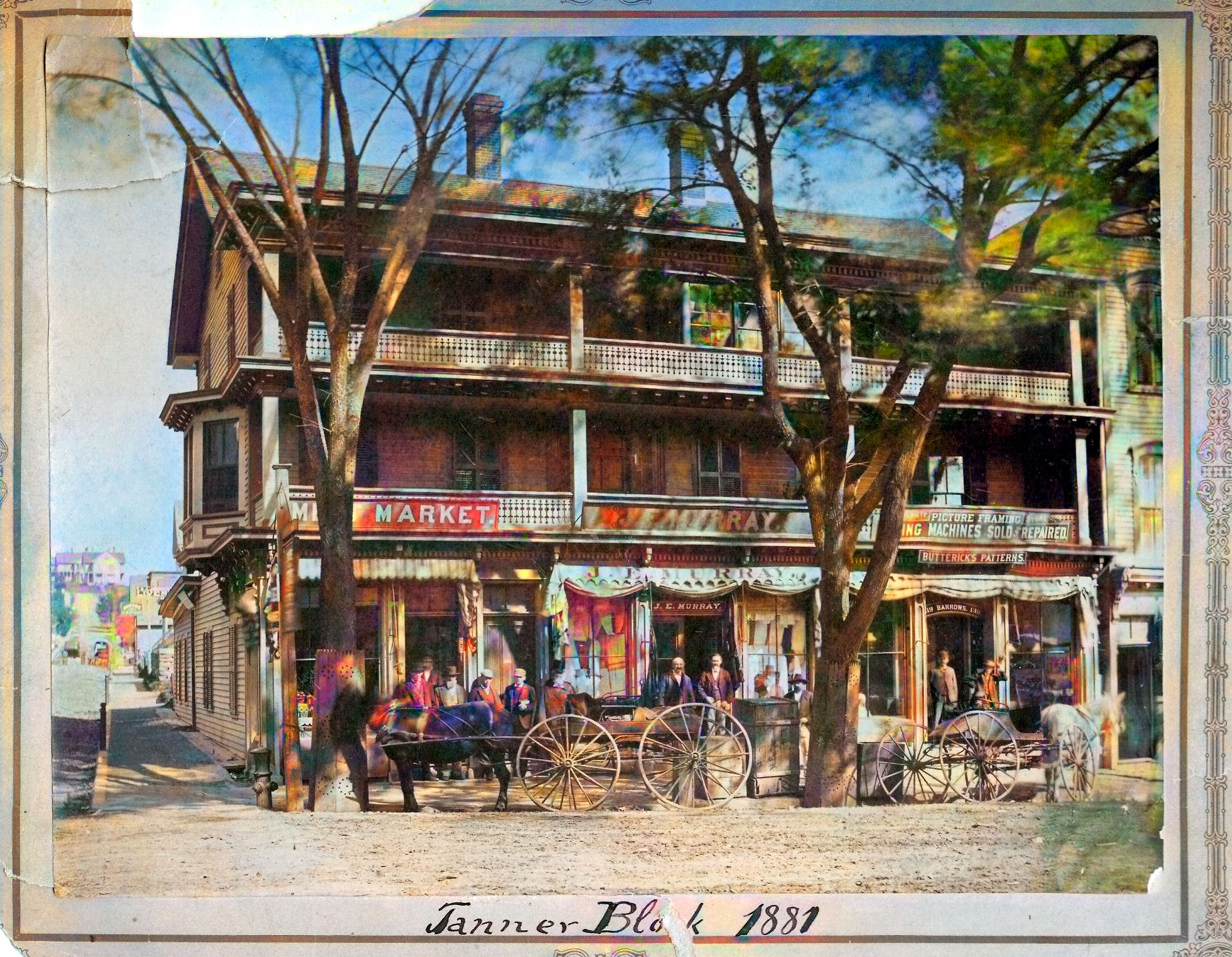 |
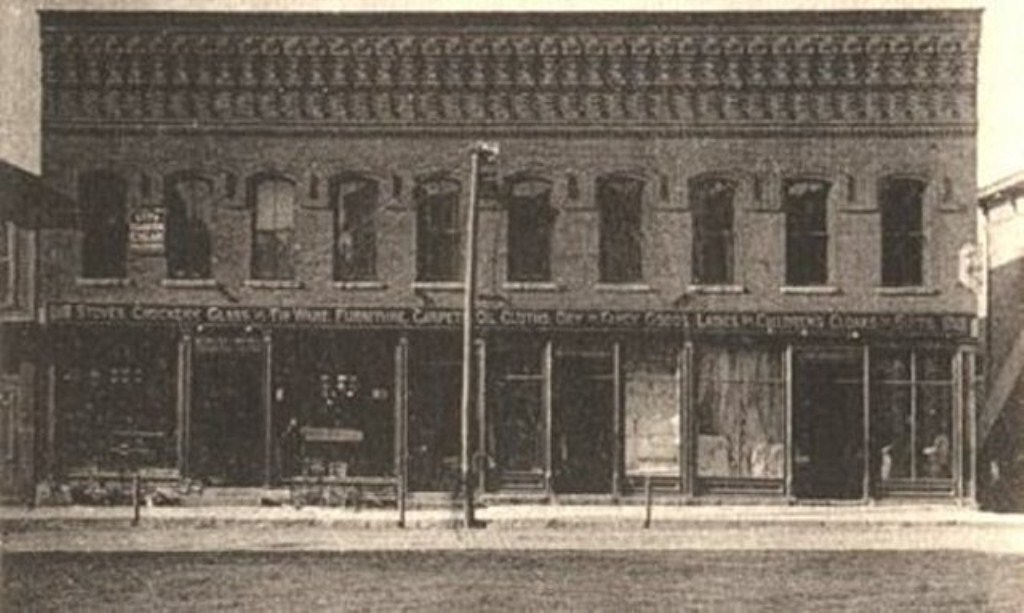
Tilden's Block
Tilden's
Block displays a sign that reads, “Stoves, crockery,
glass, tin ware, furniture, carpets, oil cloths, dry and
fancy goods, ladies and children's cloaks and suits.”
The block was completely renovated, inside and out, in
1894. The facade was completely redone and a third floor
was added. In 1906, Marshall Tilden sold the block to
the Jordan Brothers. It became known as the Jordan Block
and was destroyed by fire in 1916.
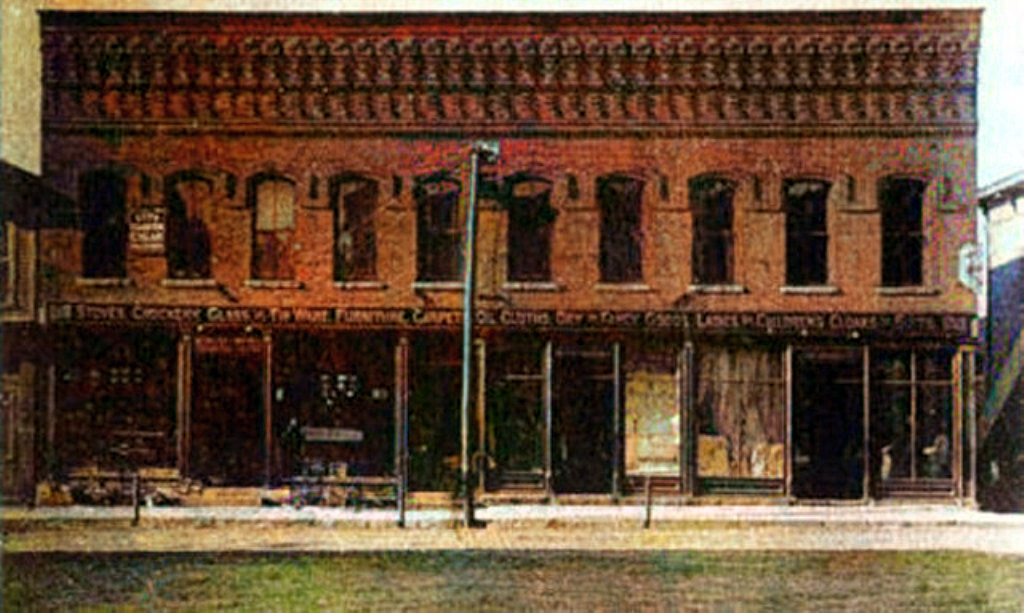 |
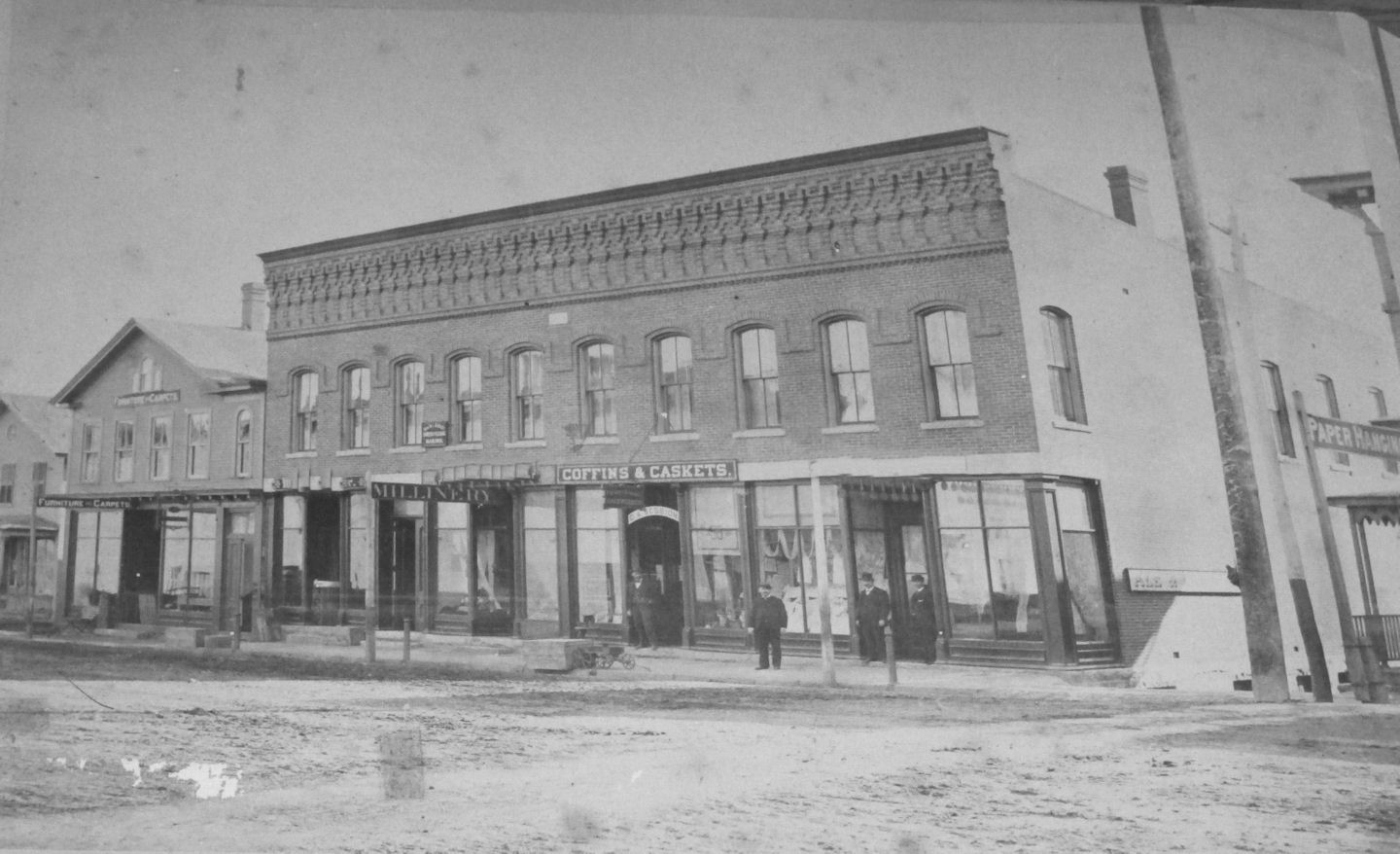
Tilden's Block in 1873
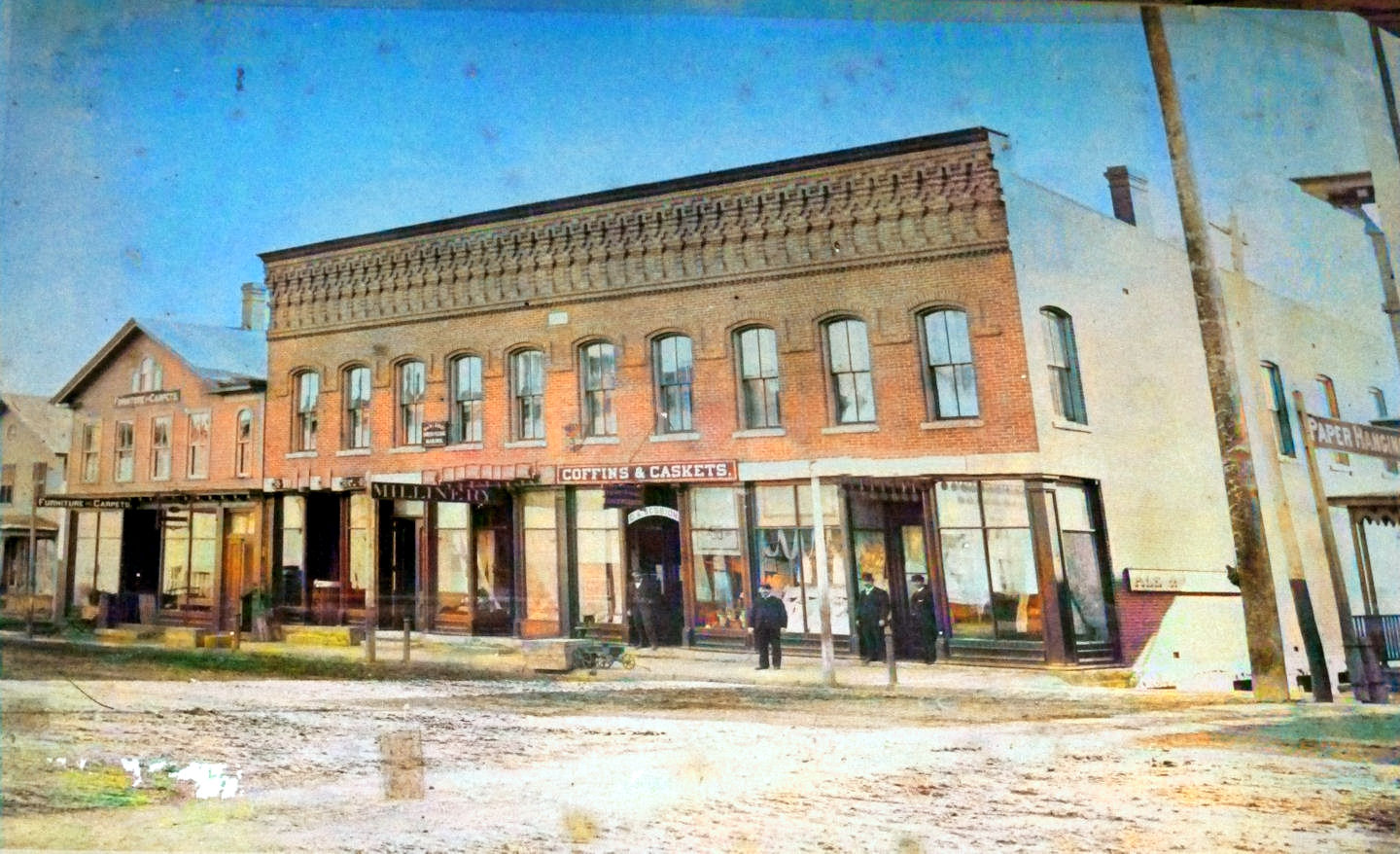 |
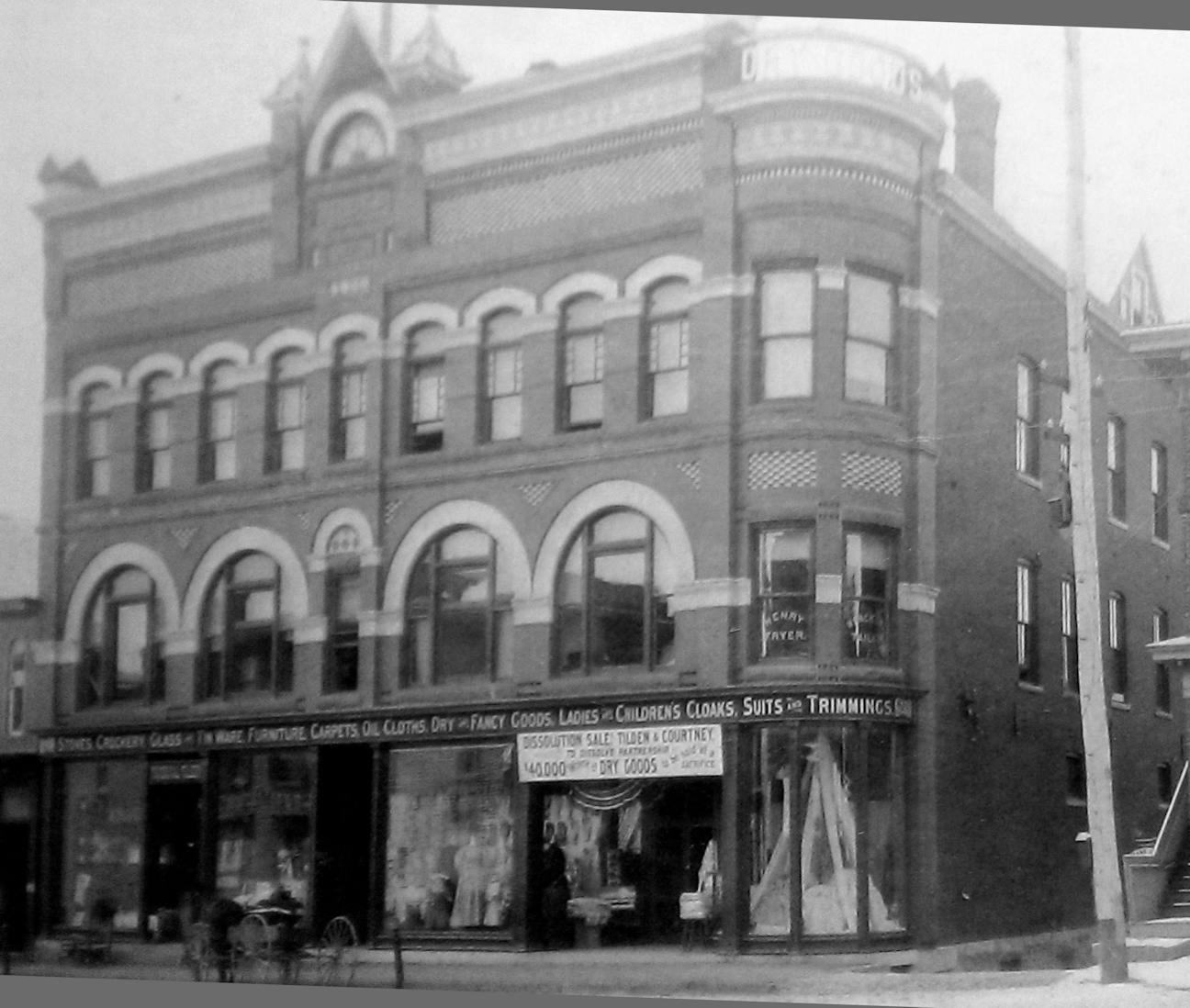
Tilden-Jordan Block
Here
is the Tilden Block following the renovation of 1894.
Note that the whole front facade has been changed and a
third floor added. The photo was taken in 1906 just
before it became the Jordan Block
and housed the Jordan Hardware Co. It was destroyed in
the fire of 1916.
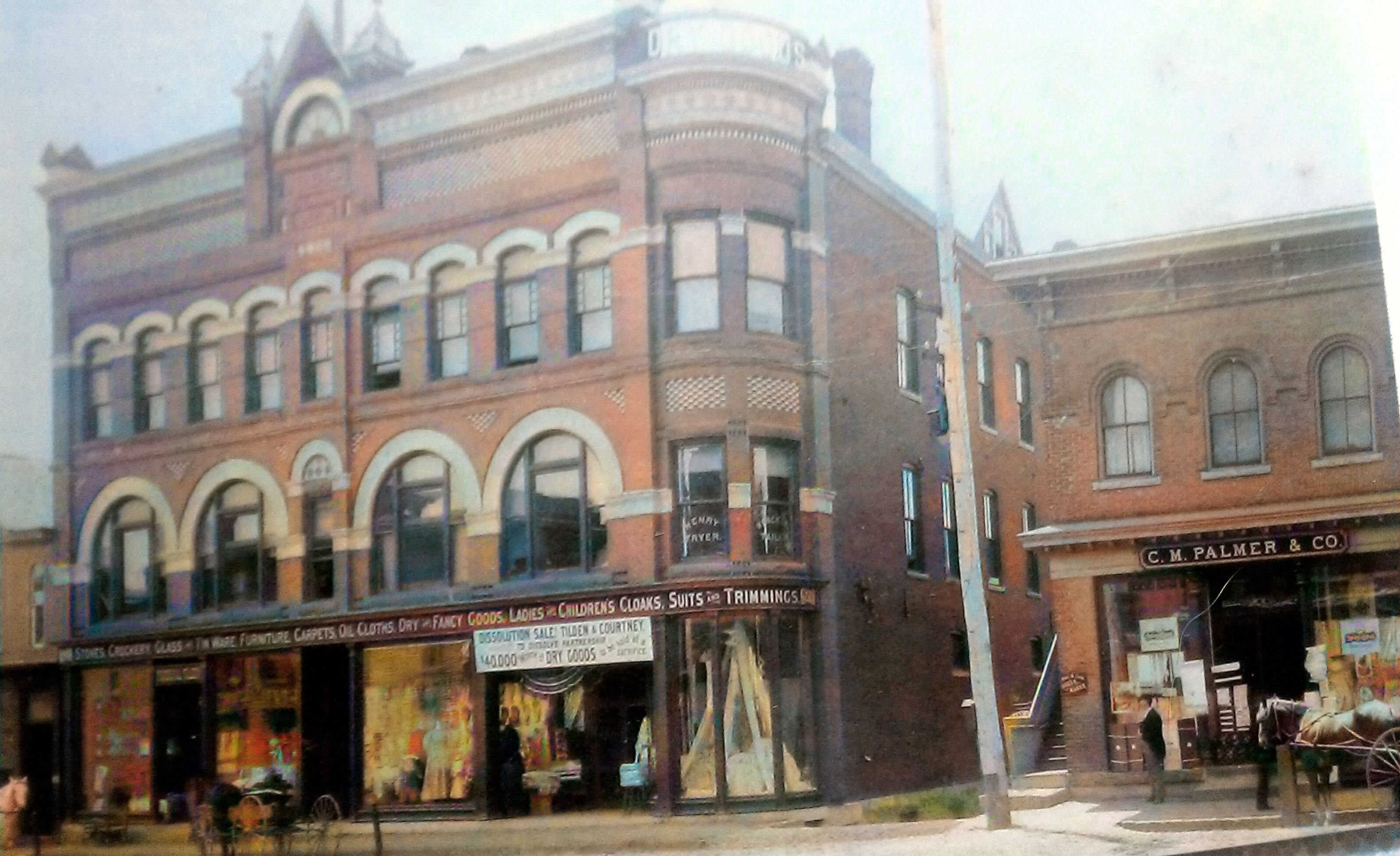 |
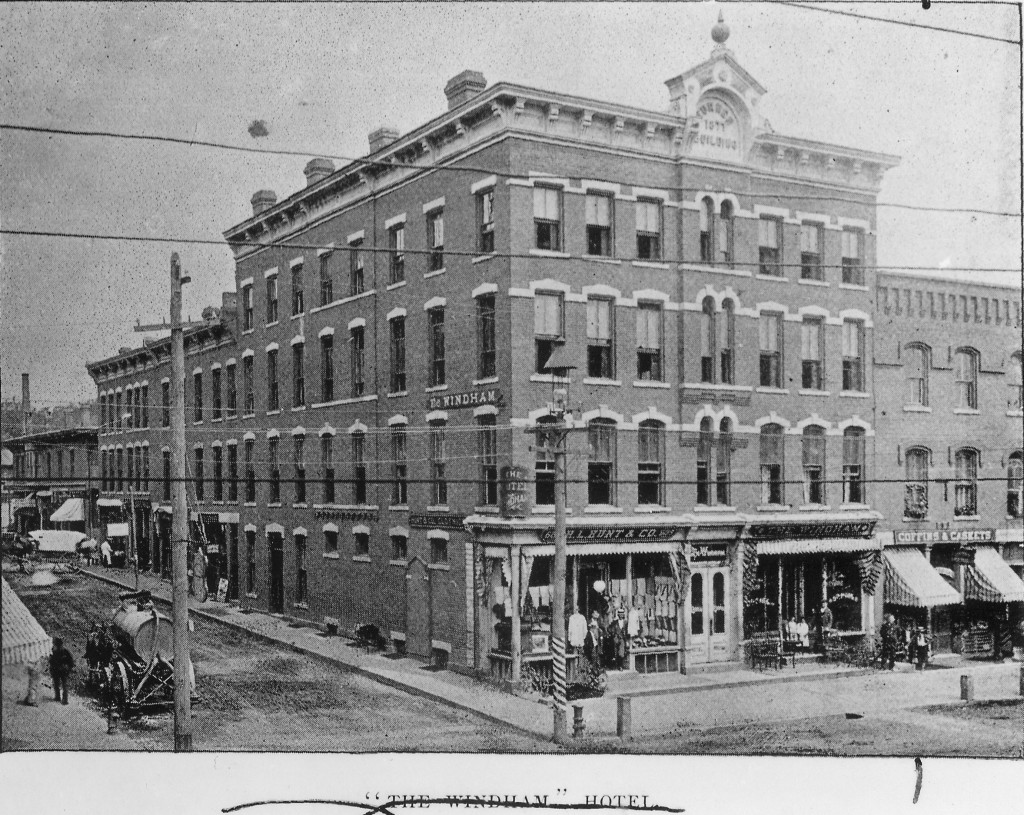
Turner
Block
The Turner Block was built in 1877 by English-born
merchant, Thomas Turner, who gave his name to Turner
Street. |
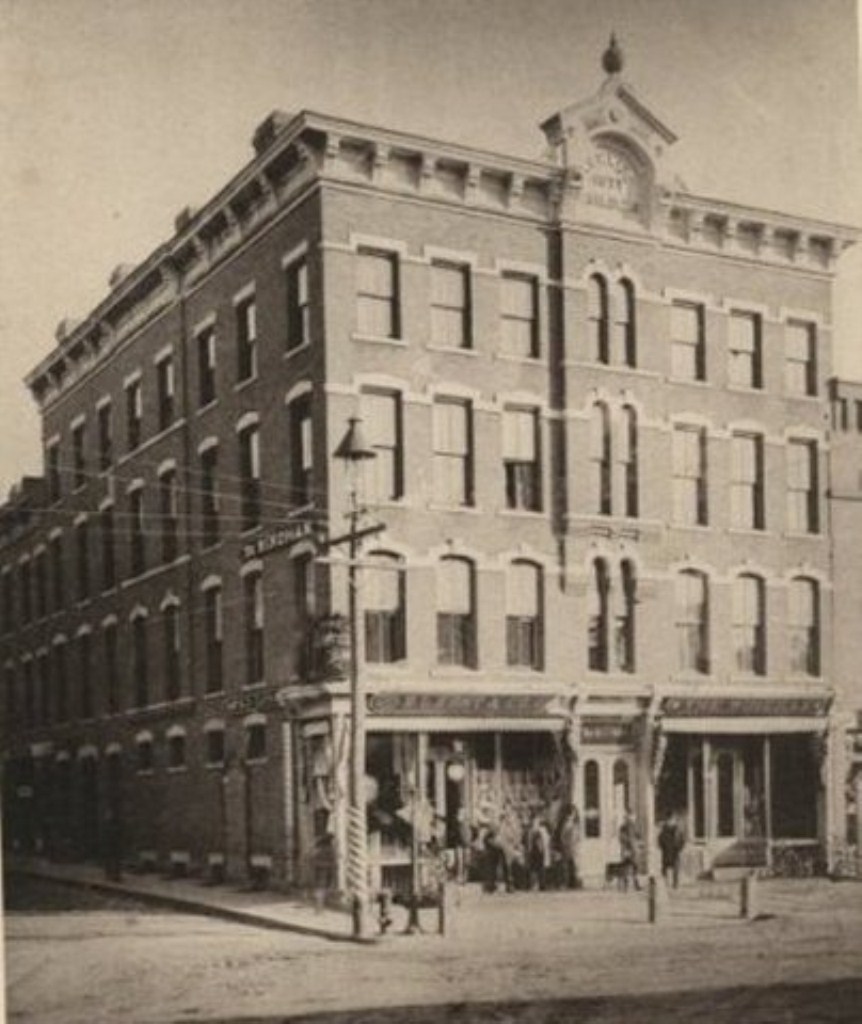
Turner Block/Windham Hotel
The Windham Hotel was part of the Turner Block. The
block had many owners over the years and by the time of
the 1968 St. Valentine's Day fire, had become an
apartment house |
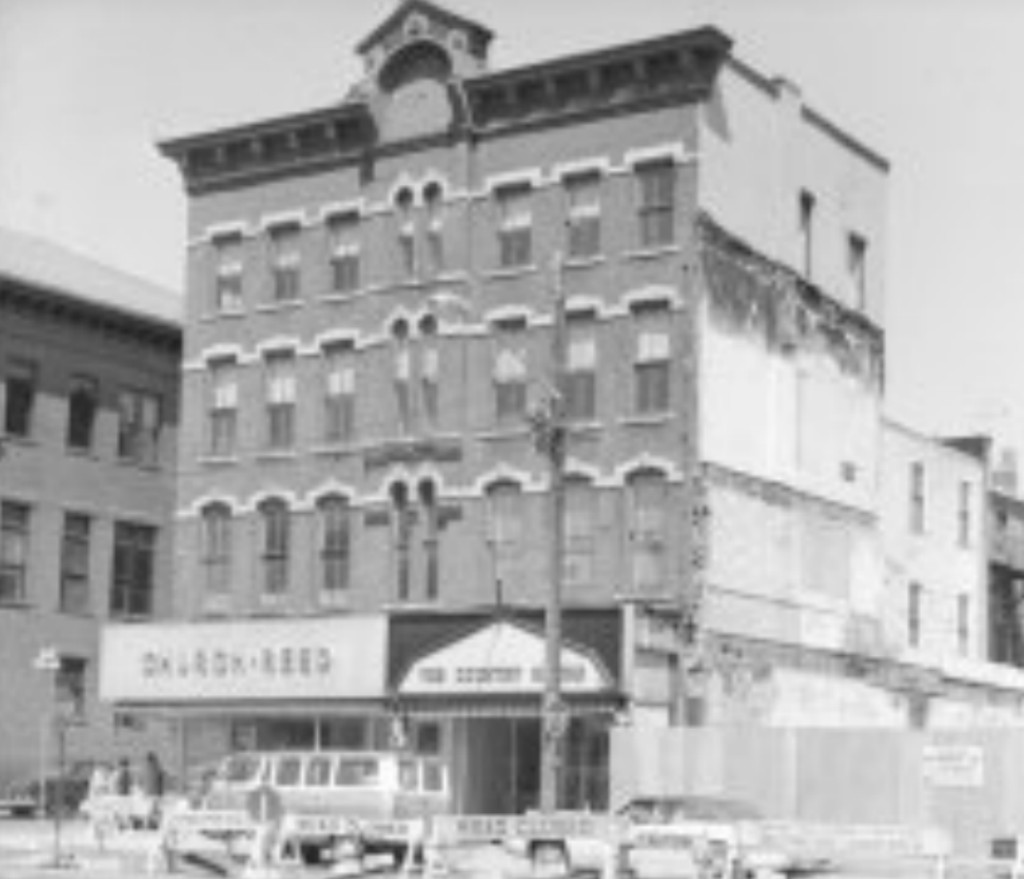
Turner Block following the
St. Valentine's Day fire.The block survived the 1968 St.
Valentine's Day fire, but was demolished in the early
1970s to make way for the Liberty Bank building
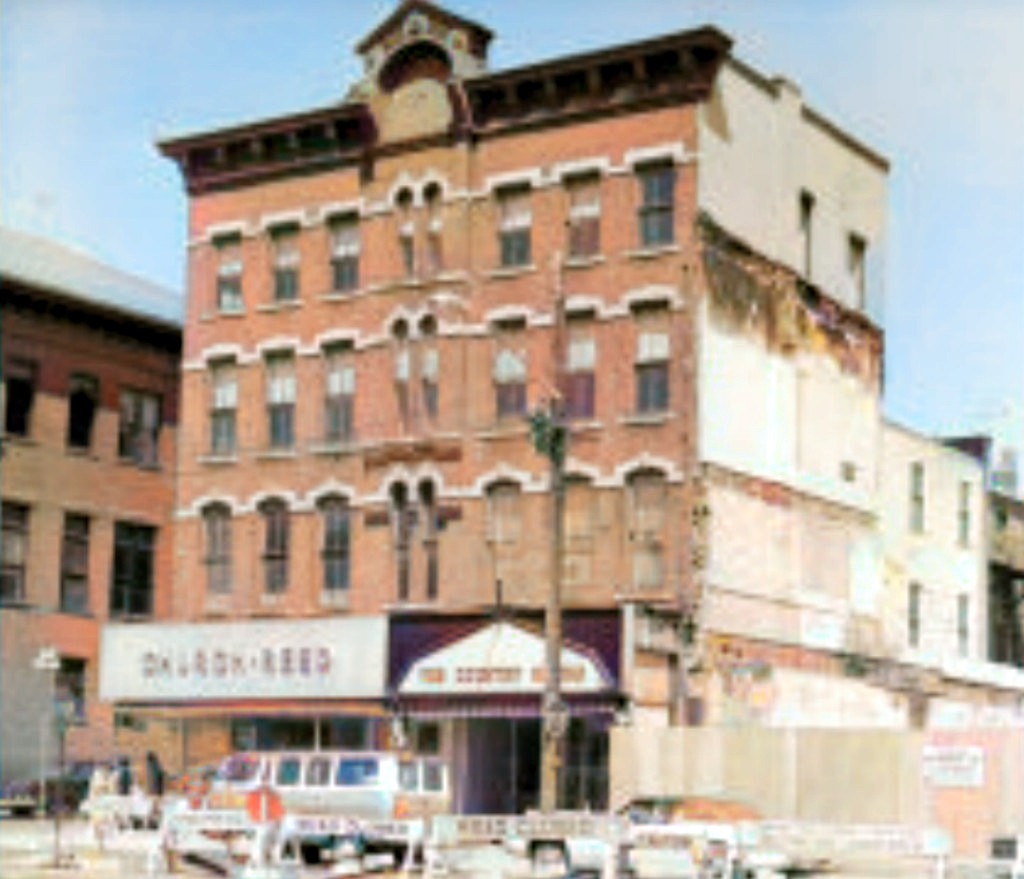 |
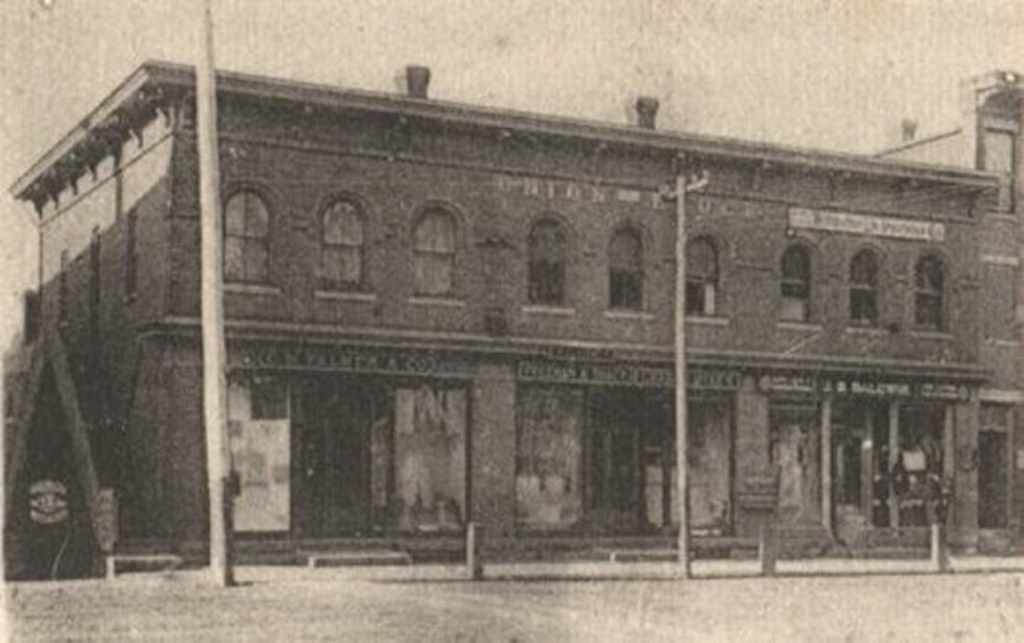
Union Block
The Union Block
stood on lower Main Street, across from the entrance of
Church Street. It was built in 1864 by Allen Lincoln,
and demolished in 1974 during redevelopment. The block
was considered to be one of the city's premier
commercial buildings. The shops pictured are those of C.
M. Palmer (boots and shoes), Freeman and Tracy (grocers)
and J. B. Baldwin (hats and caps). The second floor of
the building housed the offices of the Metropolitan Life
Insurance Company.
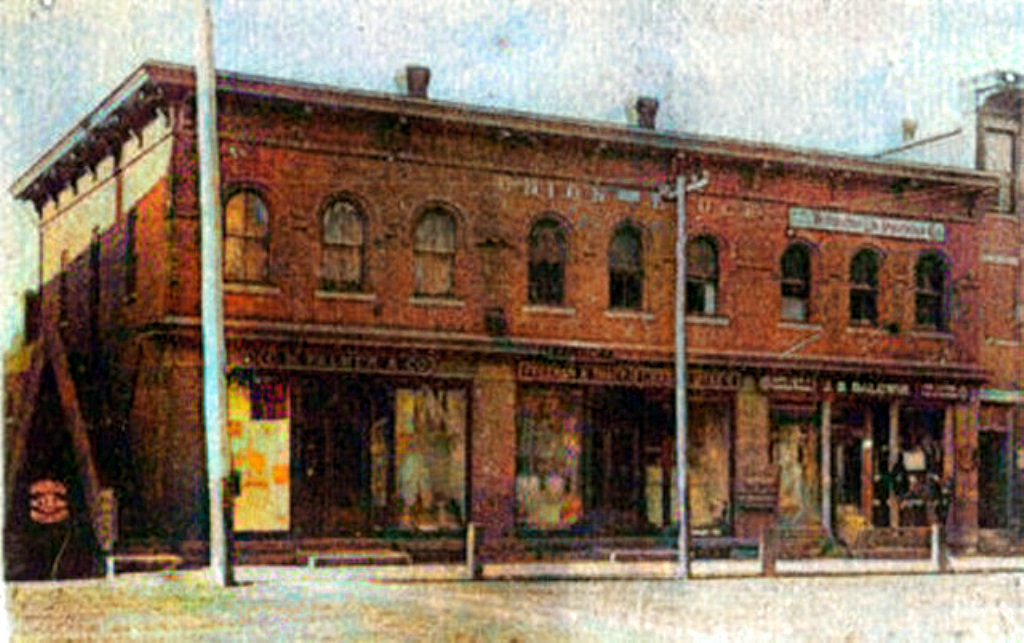 |
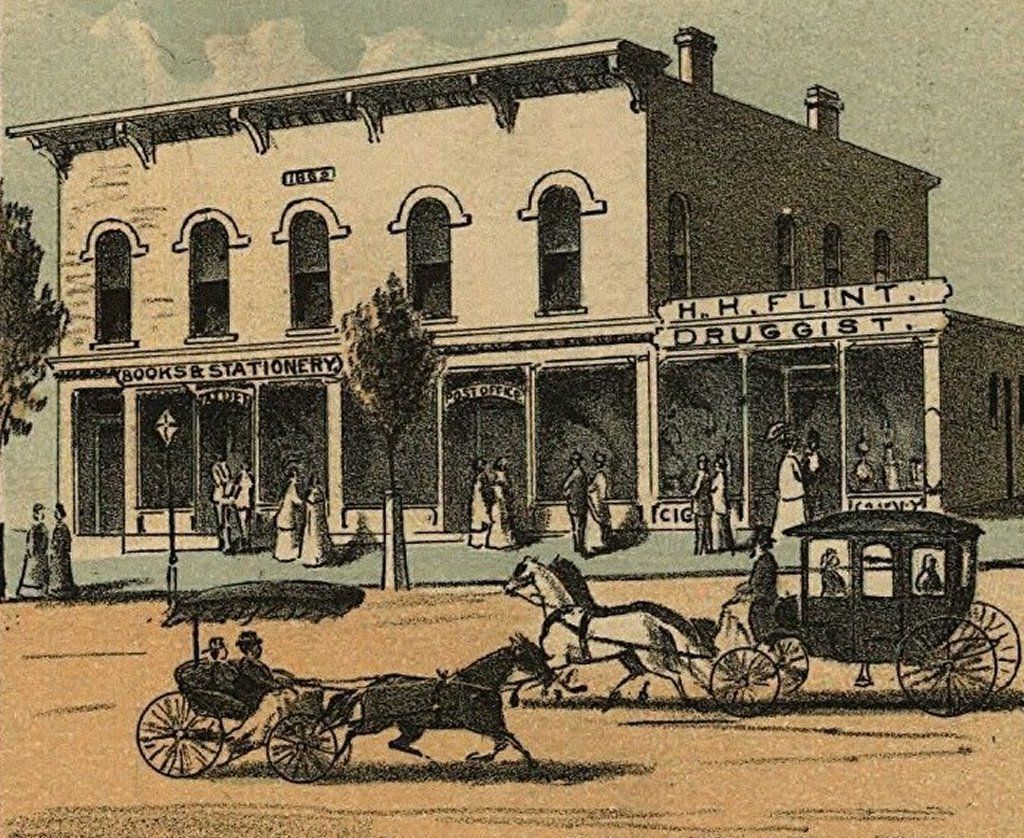
Walden's Block(s)
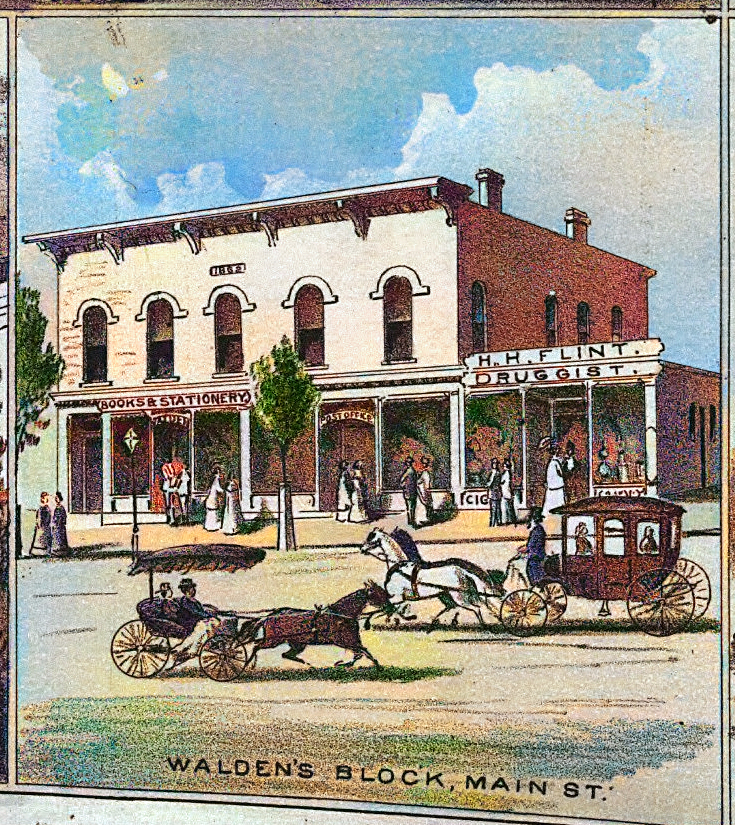 |
The Walden Block
appears to be the block from 770-776 Main St. At one
time, the occupants were Flint's Drugstore, the Post
Office and Stationery/Book Store. In 1890 there were 2
booksellers in Willimantic. One was Charles Utley (at
the corner of Main and Church). The other was Sweeney
and Dunn in the building pictured this week. In 1890,
the address was 170 Main. Sweeney and Dunn advertised
their business as the "Willimantic News Depot". They
also had a business at 119 Main St. which was called the
Brainard House Block. In later years, it looks like the
building's right side front was remodeled and a second
story added. By 1900, the stationery store was Wm.J.
Sweeney and, by the 1950s, Wm J. Sweeney and Son |
n.
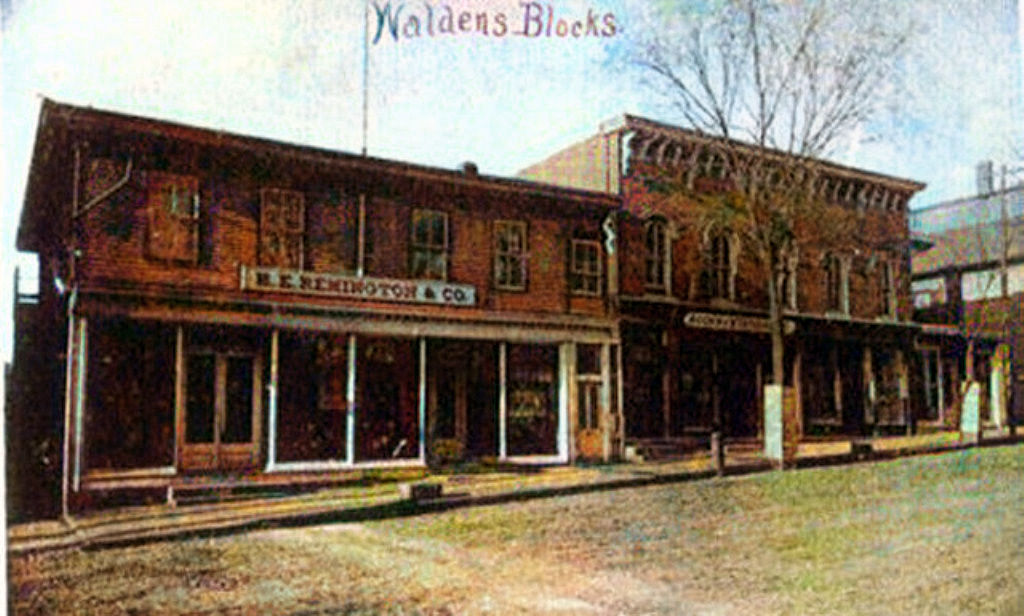
|
|
|
|
|
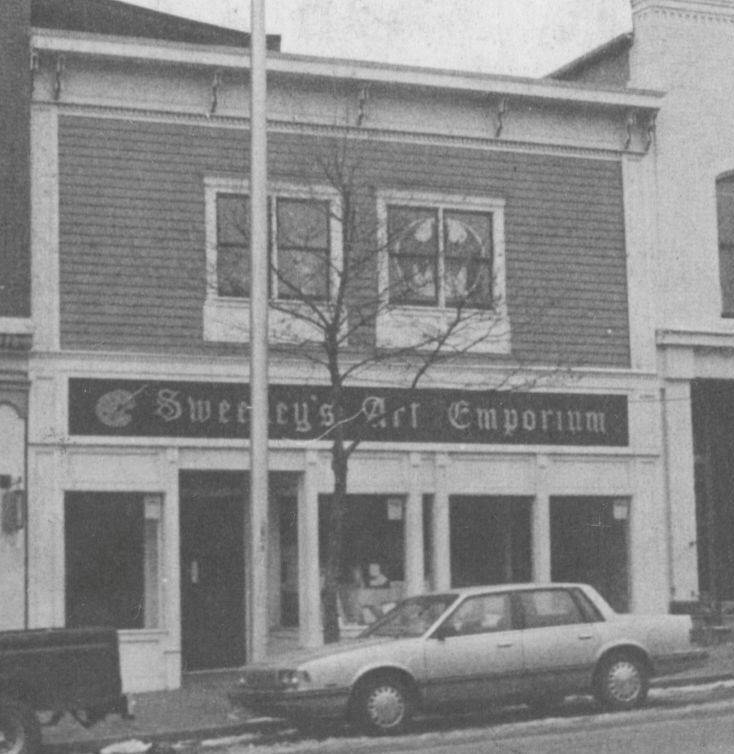
Walden Block
The Walden
Block in later years.
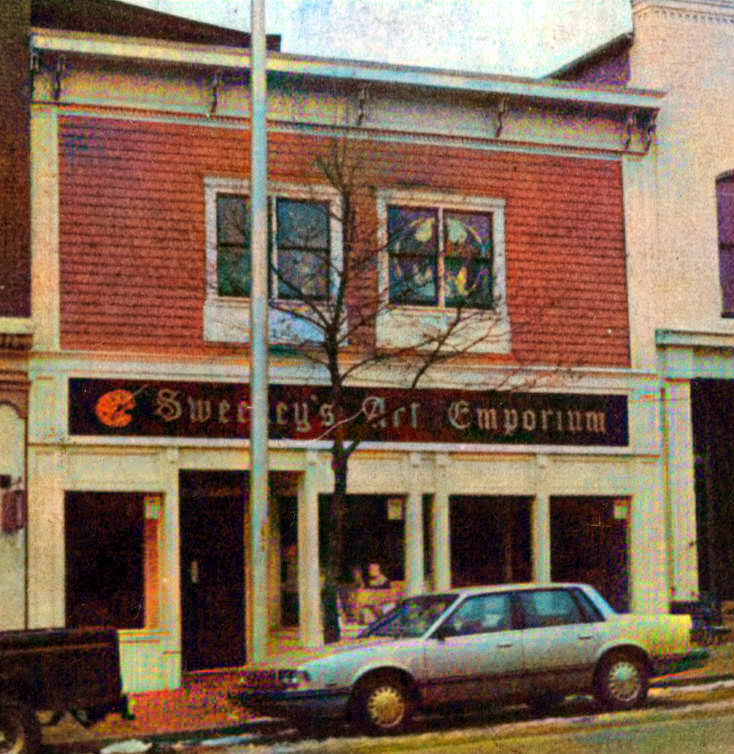 |
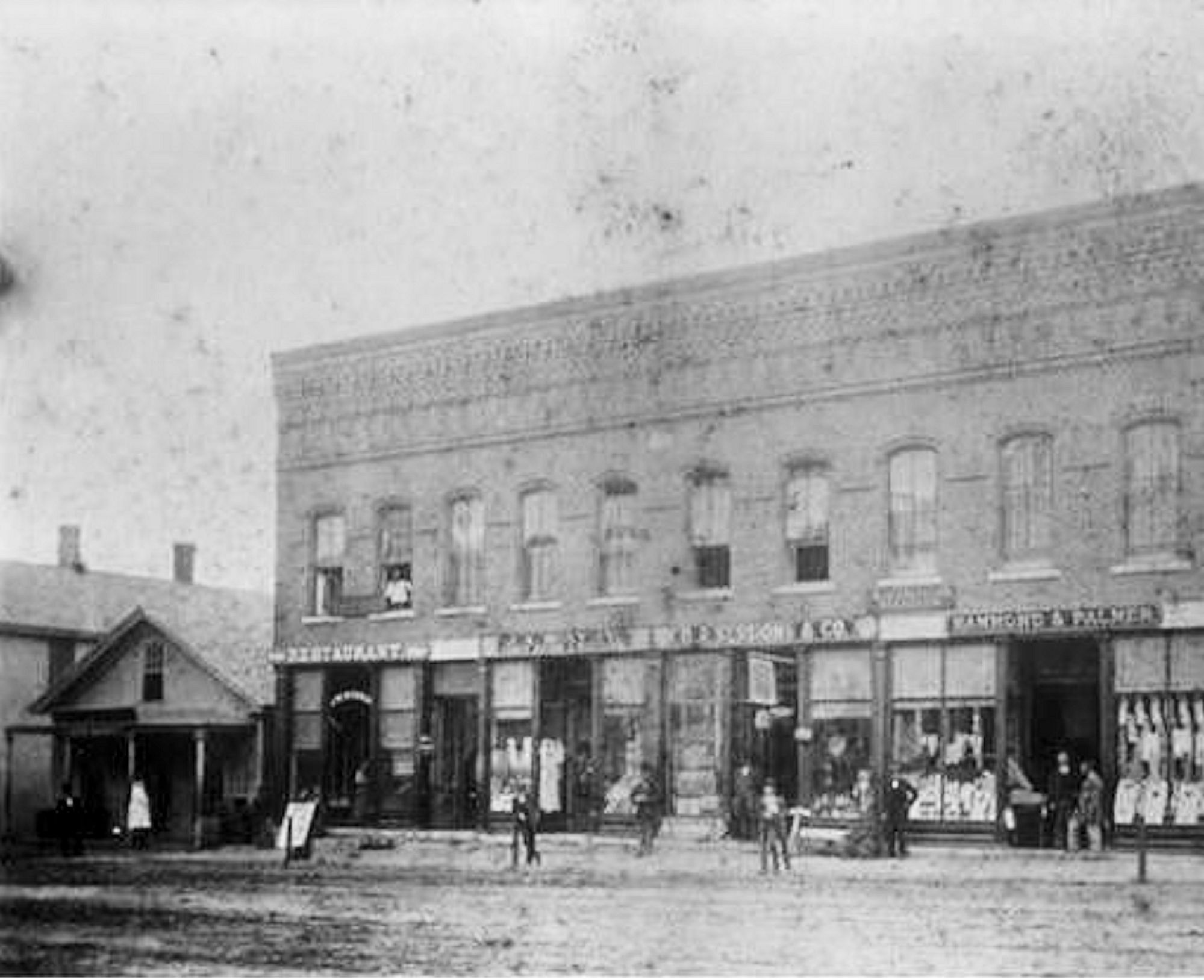
Tilden's Block
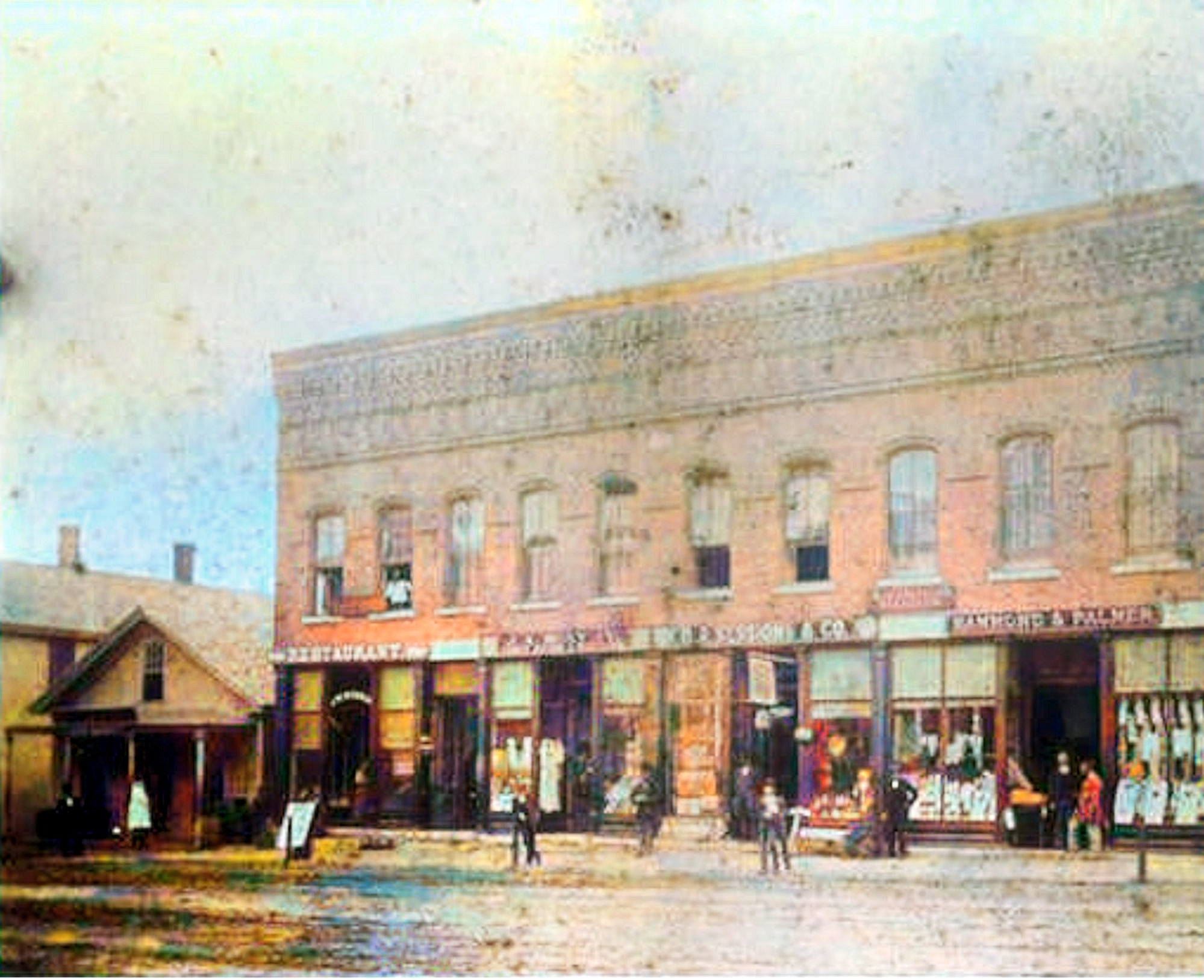 |
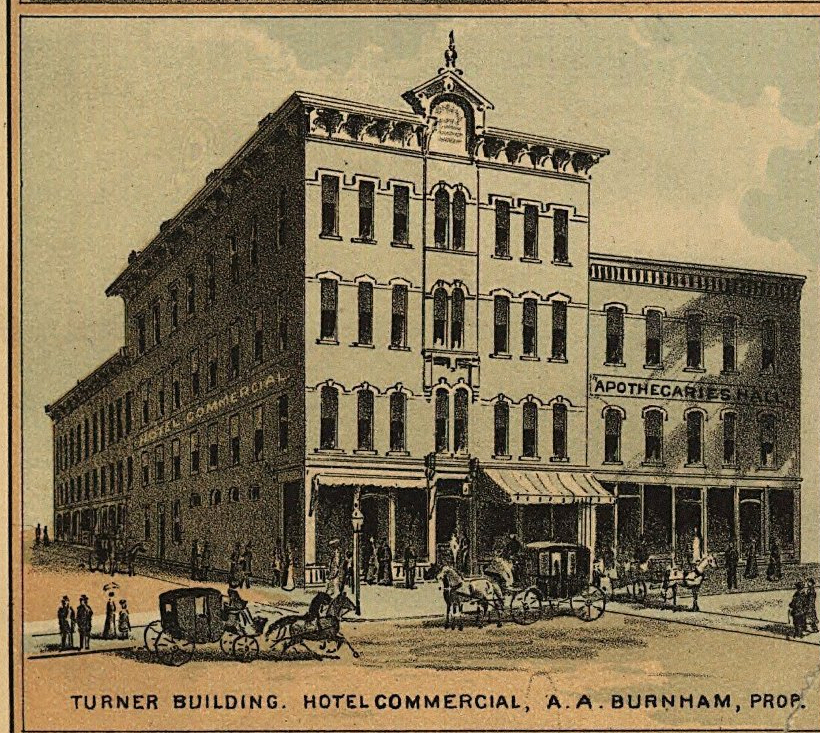
Turner Block
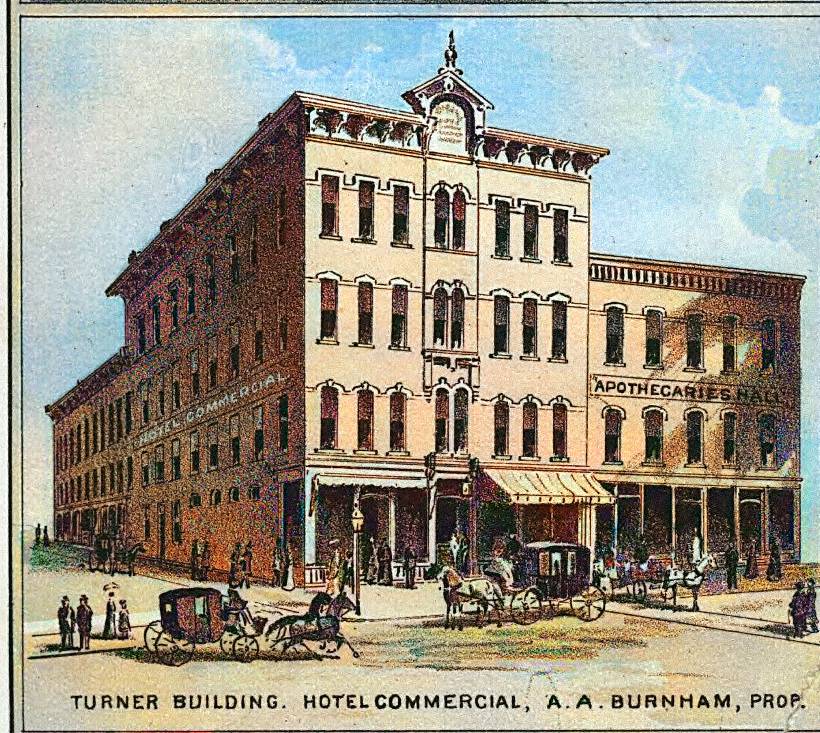 |
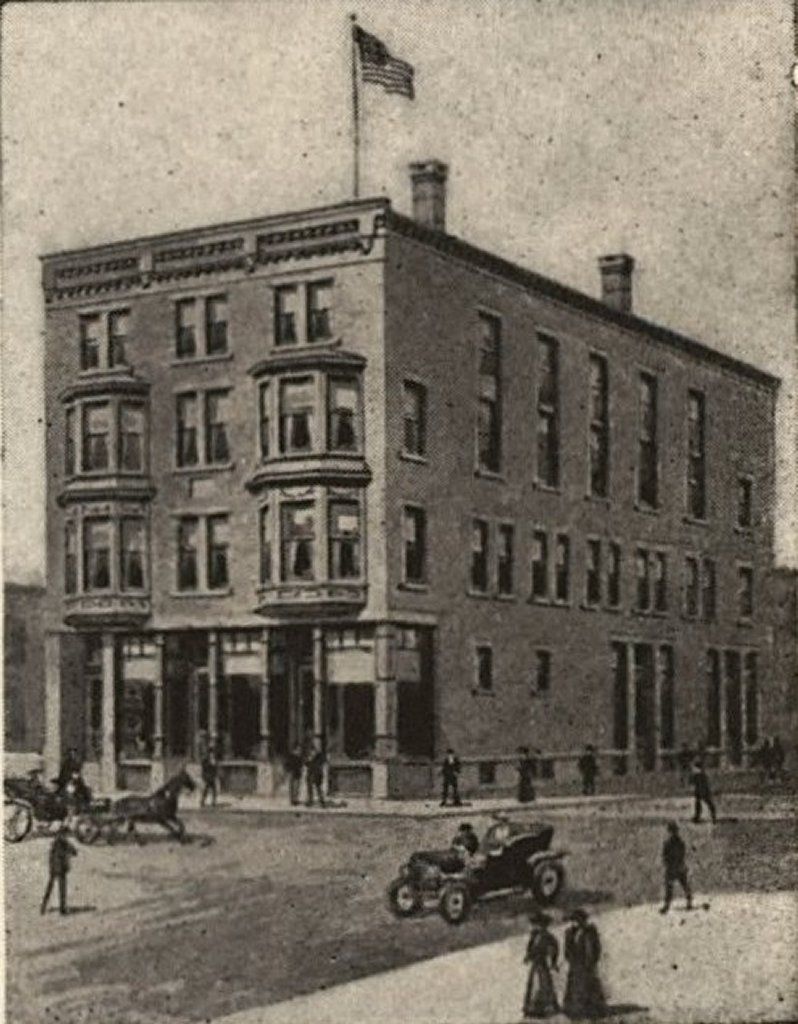
Washburn Block
This is an engraving of "The
Washburn Block", a building that was demolished during
Willimantic's "Redevelopment" period. Until the erection
of the town hall, this building was used for all Town of
Windham public meetings. The main floor was used
primarily by a funeral parlor and the upper floors were
evidently rented rooms and/or apartments. For many
years, Hiram Fenn worked an apprentice undertaker at the
funeral parlor even as he pursued his hobby of
photography. Scores of his historical photos of
Willimantic and vicinity are in existence today. |
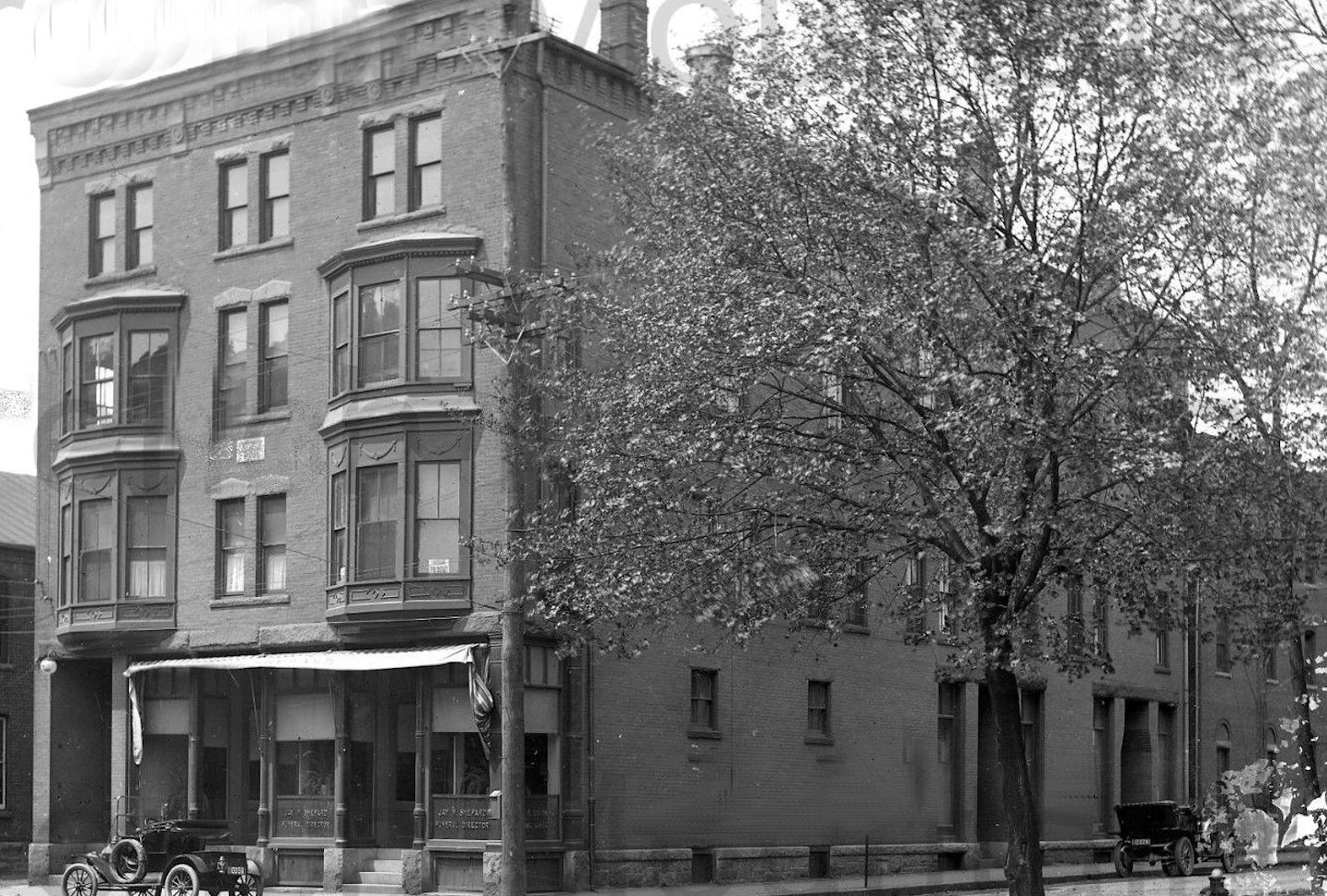
Washburn Block
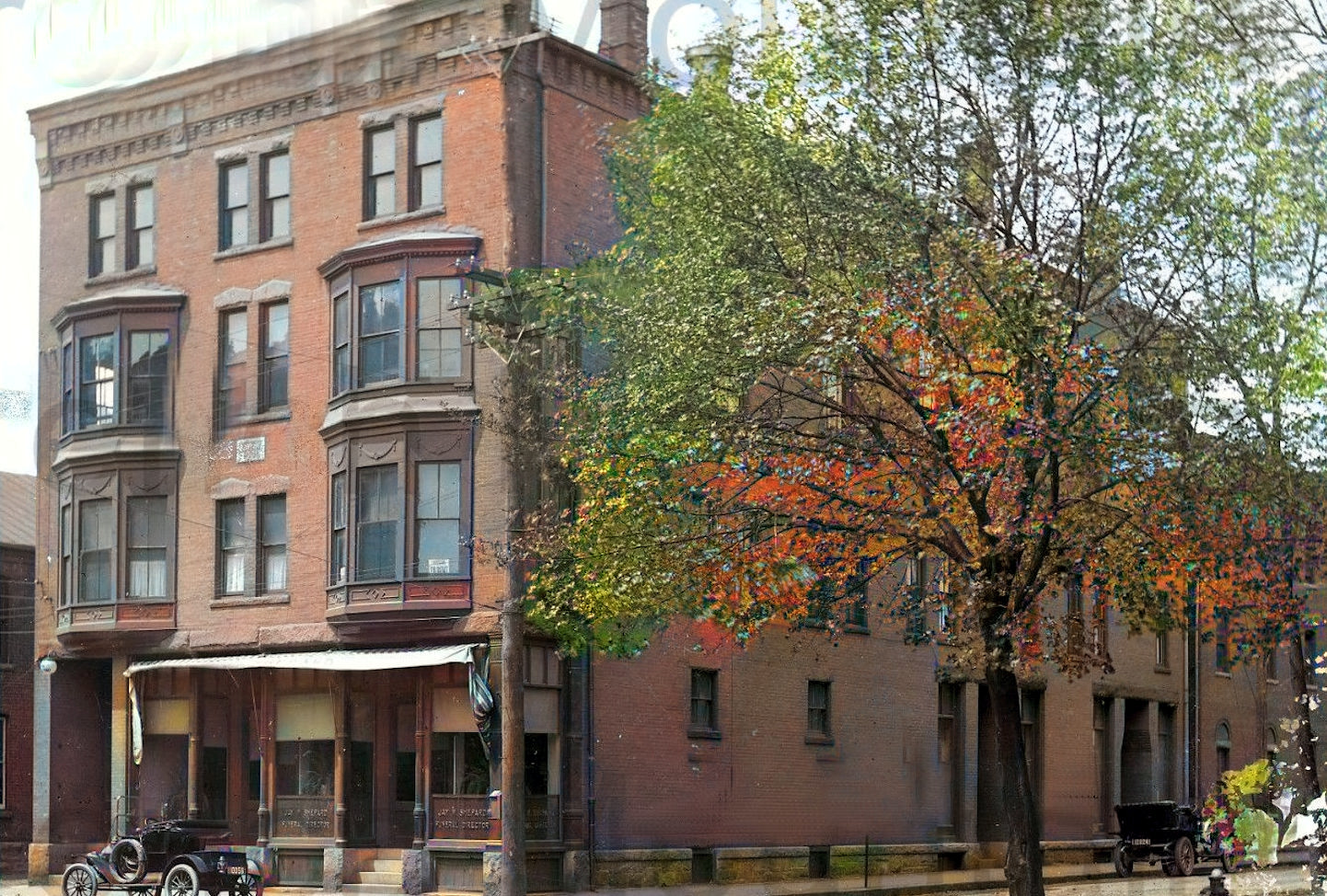
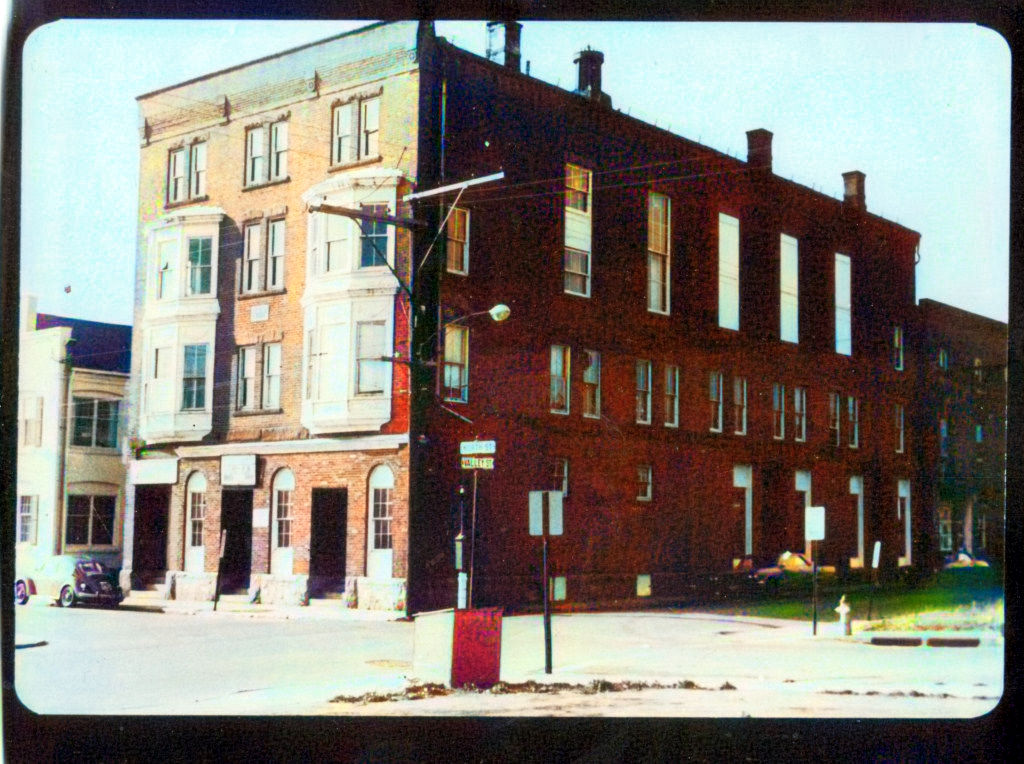
|
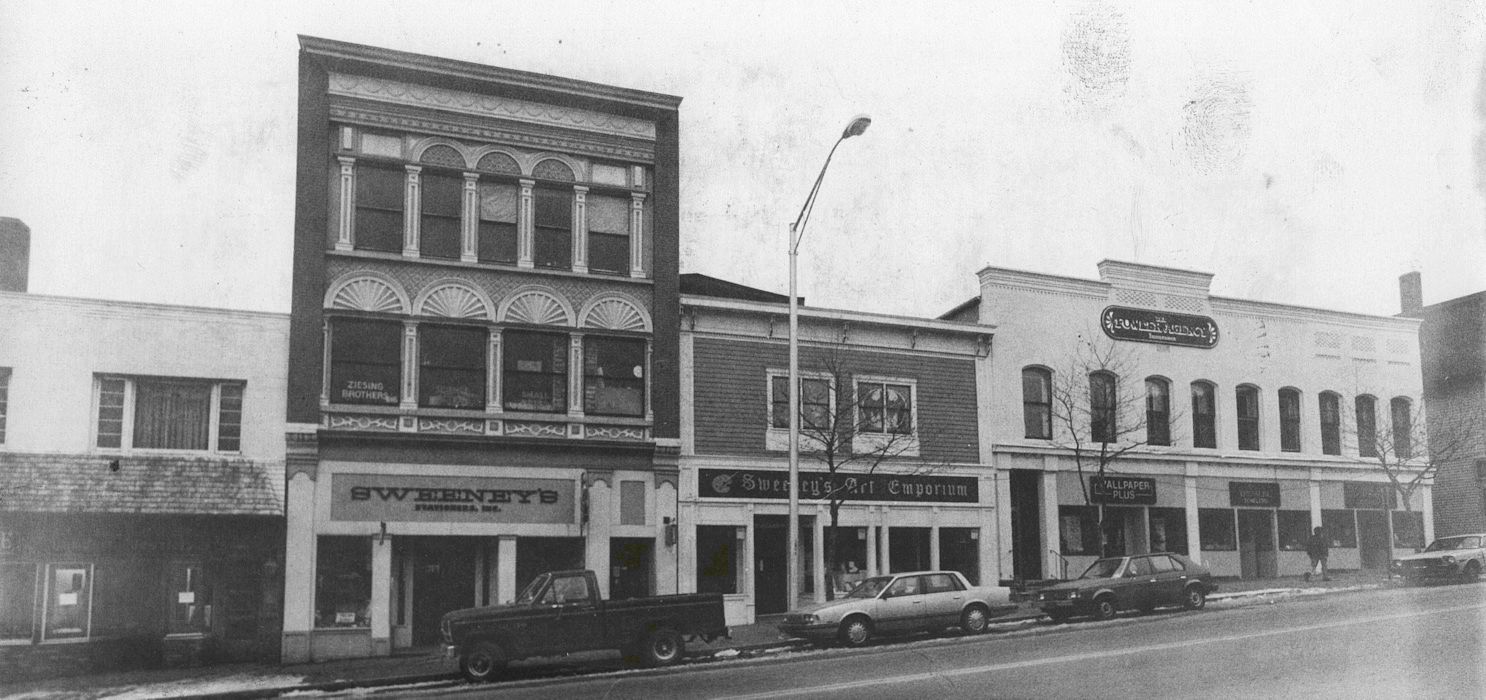
Left of Sweeney's(McAvoy Block)
Sweeney's 772 (Sadd Block)
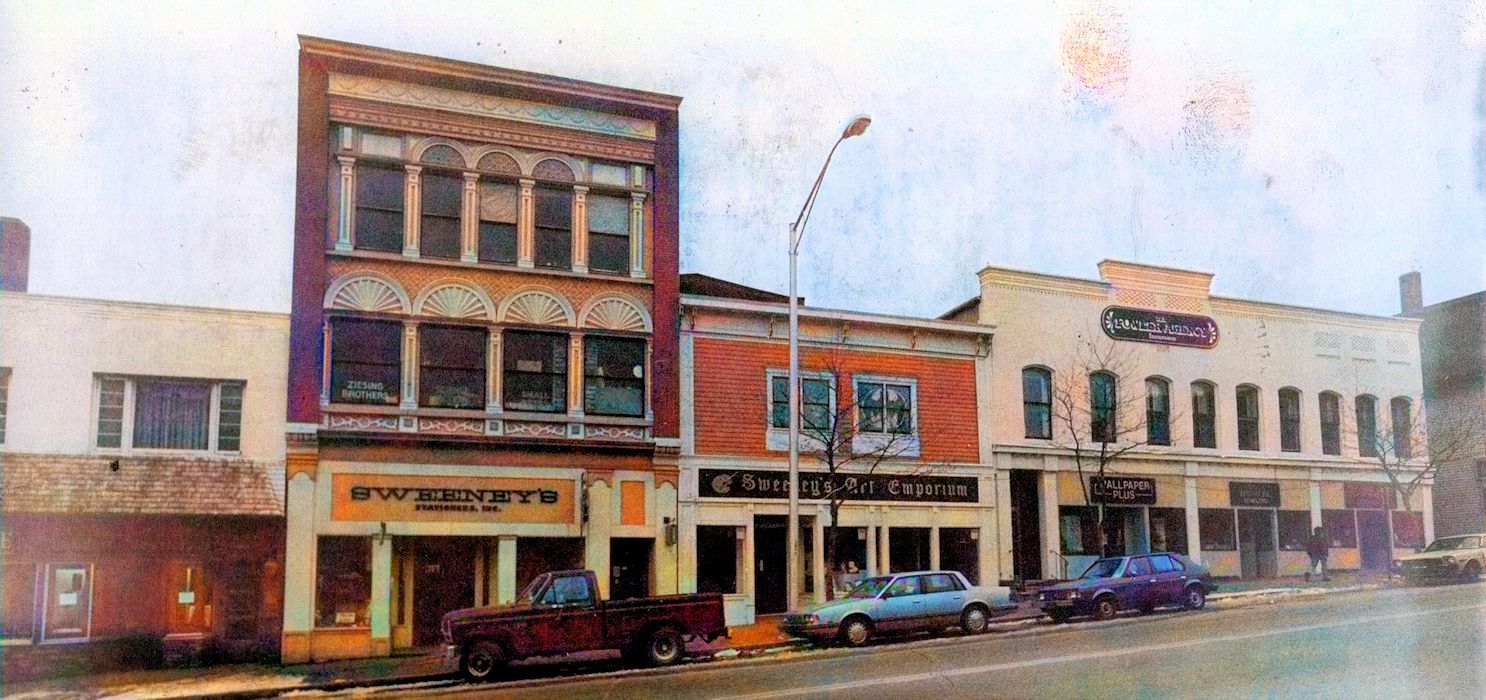 |

The Sadd Block (Sears)
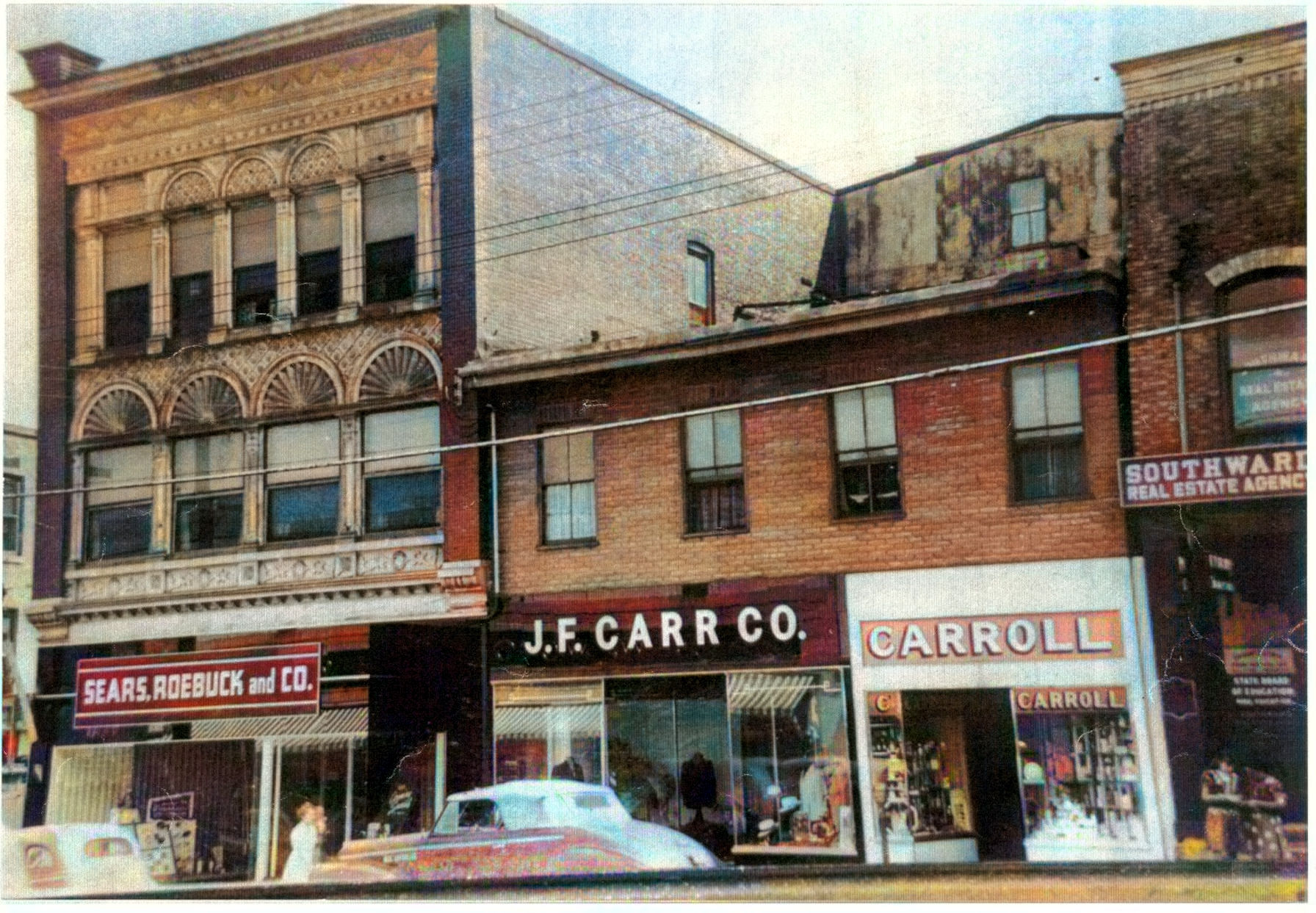 |
|
|